How to start a fashion business in 2019
Thinking of starting a fashion brand in 2019? Here’s a few tips to get you going…
Be honest, how many of you intended to start your fashion business in 2018, but didn’t get around to it? Or perhaps you had good intentions, but weren’t sure where to start? Or maybe you let the fear creep in? Whatever the reason you didn’t make a start, I’d love to help you launch your fashion business next year. In this post I cover how steps you can take to start your fashion business in 2019. If you already have a business, this post will help those of you with an established brand to prepare your company for 2019.
Decisions
As with any new business, preparation is key and as the fashion industry is particularly difficult to succeed in, you'll want to make sure you've got a solid strategy from the start. Don’t panic though, this doesn’t have to be a professional business plan with thousands of words. You’ll only need one of those if you’re planning on getting a loan or investment. Here's some tips for what to consider and decide upon before you start your business, so that you can plan accordingly;
What purpose will your brand serve, or what problem will it solve? You need to have a specific target customer in mind so that you can design specially for them, create a brand they’ll love and ultimately, sell to them. For help choosing a target customer, you can click here to read an article on this topic.
You need to ask yourself what type of business you want to create, for instance, will you sell online direct to the public, or will you wholesale to boutiques? Will you produce your designs made to order, or perhaps create small collections and release once or twice a year?
There's lots of different ways to start a business and you need to pick one that will work for both your business aims and situation. For instance, if your fashion brand is a side business and you'll still be working at another job, you'll need to choose an approach that is suitable for someone with a limited amount of time. Therefore, your range is likely to be much smaller and take longer to produce than someone who is committing to the business full time.
Planning
Next, when you know what you want to achieve with your business, you'll need to plan to make it happen - successful businesses don't happen by accident!
Time planning - Many entrepreneurs I work with are surprised to learn that it usually takes between 6 and 18 months to go from zero to launching your fashion brand. Making sure you're aware of each of the steps is really important and asking the right questions to make sure you understand the time frame. I always add on a 'buffer' of 2-4 weeks to allow for any unforeseen circumstances - it's better for the stock to arrive too early rather than too late! If you're not sure where to start with time planning, my 'Quick Start Guide to Planning and Producing a Fashion Range' may be of interest, which you can learn more about by clicking here.
Budgeting - a lot of people will tell you that you have to have thousands in order to run a successful fashion business, but that's not always true. You can start with a much smaller budget, but you need to plan even more efficiently and put in more time and effort yourself. If you are wanting to work with a smaller budget, you might be interested to read about how I started my fashion business with just £150. It includes tips on how you can do the same and you can read the full post by clicking here.
Costs to consider - a lot of startups miss costs they need to factor in, for example it's not often I see new entrepreneurs budgeting for insurance and electricity, but you really need to! There’s a blog post on this topic which you can read by clicking here. There’s also a free download to help you think about costs, which you can access via the free resource library. All mailing list subscribers have access to this. If you’re not already subscribed you can sign up via the box below. As a subscriber you’ll receive news, free articles to help your business and the occasional offer and you can of course unsubscribe at any time. I hate spam too - if you sign up to this email list, your details won't be sold or leased to anyone else. I will email you from time to time with helpful content and occasional offers, which you can unsubscribe from at any time.
Visits
You may decide that starting your fashion brand requires some travel. This might be to attend seminars, trade shows, trend presentations, visit suppliers….there’s lot’s of benefits to travel and I regularly visit different cities for networking, checking on suppliers and also to be aware of new developments within the industry. As you're probably aware, travel is considerably cheaper if you book in advance. Therefore, it pays to organise any travel as early as you can to minimise the cost, which is especially important for businesses that are on a budget. Some travel that you might want to consider as a startup is;
Trade shows can be really helpful for making contacts, especially for fabrics. However, many of the fabric shows are only every 6 months, so you need to plan ahead to make sure that you don't miss an important event. There's a huge amount of different shows that you can attend; there's a variety of locations and some fairs are tailored to fabrics, some for manufacturing and others for wholesale buyers (where you might want to sell your collection). Start researching events as soon as you can to make sure that you go to the one that's most relevant to your business.
Seminars - many trade shows have great seminars, but there's also independent ones of varying scale. For instance, you might want to go to a presentation on trends, or if your interested in things like sustainability or textile technology, there's events on for that as well.
Networking events - throughout the year there's a lot of large and small networking events happening within the industry and it's often beneficial to go to some if you can. Not only for the opportunity to make contacts, but also to keep your finger on the pulse and keep up to date with what's happening in the industry.
Tip - for any events that you go to, do research in advance. For trade shows, as they are usually huge it's a good idea to map out who you want to see prior to the visit. For seminars and networking events, try to learn about any speakers or important guests so that you don't embarrass yourself by asking who they are. Also be prepared to make a good impression, so try to have some background knowledge on the topic being discussed.
Research
There’s a lot of different processes when it comes to setting up a fashion business and it’s important to know all of the steps in order to save time and money. You don’t want to end up wasting lots of money on trial and error. As well as the general process to learn about, there’s also a lot of things that you'll need to source for your business and although at this stage you won't know what you need exactly, it is worth starting to do your research as early as possible. It can take a long time to source the perfect fabric, or the ideal manufacturing partner, so if you start making enquires early, you'll have some people to reach out to when you're ready with your designs. Examples of what you may need to source are;
Fabrics
Trims, such as buttons, zips, thread
Manufacturing partner
Garment technician
Fit model
Packaging/label supplier
Courier company, for the sample process, receiving the main order and sending orders to customers
Hangers and signage if you're planning to have a store or pop up
Business cards/advertising fliers/posters/etc
Just start!
If you're really serious about having a fashion brand in 2019, the most important advice I can give you is 'just start'! So many people never start their label for fear of failure, or because they feel they lack direction. If you make a start with the steps above you're already well on your way to starting your business and most importantly, you've taken the leap and not given in to procrastination! If you feel that you’d like some help step by step through the fashion process, you might want to consider my Fashion Startup Online Course, which has 8 modules which explain the key steps when going from idea through to having your fashion range produced and sold. You can click here for more information on the programme.
Have a wonderful New Year and I'm looking forward to seeing some exciting new fashion businesses popping up!
I hate spam too - if you sign up to the email list, your details won't be sold or leased to anyone else. I will email you from time to time with helpful content and occasional offers, which you can unsubscribe from at any time.
Feature in the Condé Nast Perspective Newsletter
I was really thrilled to get a mention in the Condé Nast Perspective Newsletter, a free newsletter which gives fashion industry insight and analysis…
Back in August I signed up for a new initiative from Condé Nast, the Perspective Newsletter and I’ve been reading it every week since. If you’re not familiar, Perspective provides fashion industry insight and analysis on various topics, such as fashion and consumer trends, business performance and ‘The Edit’ - a round up of industry news.
I was really thrilled to get a mention in the newsletter last month and was able to provide some information on sustainable fabrics, something that I’m really passionate about.
Not on the Perspective mailing list? You can sign up for free by clicking here. Just to let you know, I don’t receive any kind of commission or compensation, I just really like what they’re doing!
Here’s the mention in full;
I hate spam too - if you sign up to this email list, your details won't be sold or leased to anyone else. I will email you from time to time with helpful content and occasional offers, which you can unsubscribe from at any time.
Fashion Startup Online Course extended!
I’m excited to announce that I’m adding a new module to the Fashion Startup online course, which will be available free of charge to anyone who has purchased the programme….
I’m so excited to announce the addition of a new module to the Fashion Startup online course! If you didn’t already know, I have a course which is designed for people with little to no fashion industry experience, who want to set up their own successful clothing brand. The course launched in April 2018 and since then I’ve welcomed people from all over the world to the course. It’s amazing how word spreads and there’s now people enrolled from England, US, Canada, New Zealand, South Africa, Belgium, Australia and Thailand. Luckily, I’ve worked in a few different countries myself and therefore designed the programme with the global nature of the fashion industry in mind.
If you’re not already familiar with the course, here’s a very brief overview of the modules;
Module 1; Defining your target customer, brand and business aims
Module 2; Planning and understanding the business model options
Module 3; Designing; how to effectively create your collection
Module 4; Fabrics
Module 5; Working with a manufacturer
Module 6; Sampling and the fitting process
Module 7; Logistics
Module 8 NEW! Getting customers
If you’d like to learn more about the whole programme, you can click here.
Why Module 8?
I decided to add this new module as the course felt a little unfinished and although none of the participants had asked for anything extra, I felt like I wanted to help them find their first customers, as this is key to the success of any business. Another reason is that, after speaking to several clients and email subscribers, I kept hearing the same thing over and over, when it came to growing a business. Almost everyone said they would grow their business with Instagram. Which, in honestly, I found a little concerning. Instagram is a social media platform, it’s useful, sure, but it’s not a marketing strategy - it’s part of a marketing strategy at best. Many people seemed unaware that Instagram has a very low conversion rate (which, in a nutshell means that less people will buy from you if they see you on Instagram, vs seeing you in other ways). More on that in a future post!
The ‘Getting Customers’ module will talk about a strategy which can help brands to build a following, before they’ve even launched. But the strategies I teach aren’t just for getting the first few customers through the door, they can help you to scale up and get more visibility, too. And (perhaps best of all!), these techniques don’t require you to spend all day on social media. I can say this with certainty because I have thousands of visitors each and every month, while only spending a few hours a week on social media.
What Will You Learn?
In a nutshell, the new module will comprise of the following video lessons;
Introduction
The ‘Sales Journey’ concept
Creating Content
Types of Content
The 80-20 Rules
Free Marketing Options
Paid Marketing Options
Choosing a Marketing Strategy
Step By Step ‘Sales Journey’ Building
Marketing on Autopilot
Improving Your Marketing Performance
Action Steps
+ you'll get handouts and downloads, as always!
Who Has Access?
Everyone who’s currently on the course will get instant access to the new lessons, as soon as they’re available. At no extra charge! Not a member yet? Join us to get access to all 8 modules straight away; no drip fed content or waiting for modules to be released!
Want To Join?
If you want to join the course, I’d love to have you! You can view all of the details and register by clicking here. Alternatively, if you have any questions on the course, I’d be happy to answer those for you - you can click here to get in touch, or email contact@thefashionbusinesscoach.com
Designing for AW19/20 - feature on The Fashion Conversation
I've collaborated with 'The Fashion Conversation' on another article; this time I’m talking about my take on the AW19/20 fashion trends…
The next instalment in my series for The Fashion Conversation is live now! In case you missed it, I'm collaborating with the blog to create articles aimed at helping aspiring designers to make it in the fashion industry. This post is a little different from my usual writing - this time I’m talking about the trends that will take us through into a new decade - 2020. I’ve recently returned from trade show visits and viewed a lot of perspectives on the new trends. In the article, I share my take on 5 key trends for the season. You can read the full piece via The Fashion Conversation website, here. Thank you also to Munich Fabric Start for providing the images.
I'd love to hear your thoughts on this, or any ideas you have for future blog posts. Feel free to leave a comment below, or send me a message here.
How to Grow Your Fashion Business in 2019
Looking to grow your fashion business in 2019? This post looks at ways you can improve your sales and performance…
It’s that time of year again; planning for the next year of business. I’ve been working a lot on this myself lately and thought it would be helpful to give some tips for those of you who have a fashion business and want to see it grow next year. If you’ve not started your business, or if you haven’t had any items available for sale yet, there's a similar post that's tailored to startups which you can read by clicking here.
Review
In order to move forward, you need to look back. As a fashion buyer and retailer, I spent a large portion of my time doing this - in fact many retailers spend the whole of Monday looking through sales data. EVERY Monday. You might have heard me say before that data is like gold dust and it’s really beneficial to see what's worked, what didn't (and why) and how you can improve. You should have some sort of tracking system, where you can compare information and review. Or, if you're like me, you'll have many systems in place that allow you to review data. If you don't, start something immediately! Data tracking doesn't have to be fancy, but many websites offer advanced analytics to help with online traffic and information about your customers. If your platform doesn't have this, Google Analytics is a free and powerful tool you could use. You should of course have information on sales and as well as having the total sales figures, it’s really useful to be able to search sales by product, the profit made and any extra information on who bought the products, such as the customers ATV (average transaction value), how they found you, etc. I do this in Excel, as it’s an easier way to do the maths and a lot of reports from service providers allow you to export data as an Excel file, which means you don’t have to write everything out. The other thing I do is keep track of any feedback I've received from customers, good or bad, along with reasons for returns. Again, I use a simple Excel sheet to keep track of these. So, what should you look for in the data?
Patterns in sales, for example, identify which styles, colours and sizes were most popular. Dig deeper here, don't take numbers at face value; understand any factors that may have contributed to the results. For instance, if usually your bestselling size is a Large, but there's a particular style that sold best in size Small, look into why this is. Could it be that the style wasn't fitted properly so that people had to go down a size, or perhaps that style isn't as flattering on a fuller figure?
Requests for similar things. You do have to take customer feedback with a pinch of salt, as you can't always please everyone, but if you notice patterns in feedback that you receive from customers this is definitely something worth looking at in depth. For example, do you get requests for different lengths, sizes, colours? Or when customers return items, what reason do they give is there a problem with the fit, quality, colour?
A really important part of any product based business and growing the profitability, is increasing your average transaction value (ATV) and average transaction units (ATU). ATV is how much each customer spends on average. The higher the better, of course. ATU is how many items a customer buys from you in one purchase. If typically a customer is only buying one thing from you, you need to look at ways to increase this, usually by offering add on products. Does your product offering compliment each other as an outfit? Do you offer extra items, for instance a necklace to go with your top, or scarf to go with your coat? If not, chances are you're missing out on sales. It’s so much easier to sell multiple items to the same customer, than it is to find new customers, so the ATV and ATU can really make or break a business.
Range planning
Next, when you've got useful data to use, you need to use this to improve your next range, even if you've already started sampling. Of course, there's not as much you can change if you've already started the sample stage without additional cost and most likely a delay, but you can still make changes to colours, the size range that you order and there's usually time to add accessories as these are a shorter lead time (less development and production time).
So how can you use data to improve the range?
Make adjustments as nessarsay to your size break (how many units of each style to order). If you're not familiar on size breaks there's a full blog post on that here. Using the data you’ve gathered, you can make more informed decisions on which sizes to order and the quantities.
Check the colour balance, are you giving customers the right amount of colour vs the bestselling options (usually black, white and grey)? Do you need to consider offering the same style in several colour and/or options? Could you make an item reversible, so you can offer 2 colours in one garment?
Check over the fit of your garments if you've had lots of returns of a particular style, or if you've received any negative feedback on this. It's really important to make sure the fit is consistent across the range, especially if you sell online. If customers have said their confused about the sizing, you might also want to look at updating your online fit guide.
Looking at the most popular styles from the previous collection(s), can you update them for the new range? Perhaps if a Summer sleeveless top did well, you can add sleeves for the Winter range? Or could you offer the bestseller in a new season colour? If you don't want to do something so literal, think about what it is about the item customers liked. Was it the fabric, the details, fit, shape? How can you replicate this in a new item?
Also look at the ratio of garments that you sold, for instance, how many tops vs bottoms, how many skirts vs trousers, etc. This will help you to grow your range and reduce the risk by increasing the number of items in areas that are selling well. Also consider how much people were spending and whether you're offering enough options at low, medium and high price points, whatever that may be for your brand. You need to have a solid price structure in place to generate strong sales.
The key here is using the data to make better decisions going forward. If you're growing your business from last year, this comes with increased risk and cost to produce more styles. By carefully going over data you can minimise the risk by creating a range that builds on your previous success and learns from things that didn't go so well.
Sales and Promotion
With all of the important things to consider when designing and manufacturing a range, it’s often easy to let things slip on the marketing side. But to make sales, you have to attract customers. Many experts say that you should spend only 20-30% on creating products and the rest of the time marketing them. I’m guessing that you haven’t spent anywhere near that? Honestly, me neither! But it’s something high on my list of things to fix next year. I’d encourage you to do the same and take some time before the new year to do some tidying on your website/sales channels, social media presence and also refine organisation behind the scenes. It'll set you up in good stead for the next year. What can you do exactly;
Audit your website from a customer perspective; make sure all of the links work, make sense and are relevant. Do you need to update any information, or perhaps add new features - for instance, have you considered things like currency conversion, a loyalty programme or refer a friend capabilities?
Audit your website from a business point of view. Is your most exciting and relevant content/product in a prominent place? Is this high margin product, or product you believe will be a bestseller (it should be!). Are you trying to increase your ATV and ATU by encouraging add on sales? How are you implementing this in store, or on your website - is your merchandising on point?
Are you maximising any visits to your website? For example, encouraging people to sign up for your mailing list so that you can build trust with them and get them to keep you in mind. Have you got an incentive for them to give you their email address?
Do you have a way of scheduling your content and social media posts, so that you can build a following without spending all day posting online?
As we spoke about, data is really important to have. Take the time to make sure that you've got systems in place which make it easy for you to log information. Set yourself up with Excel sheets if you don't have them already and reconsider your returns form. Checkboxes are a good way to get information on why someone returned something, as it's quick and easy to complete. Always leave space for additional comments too, you want to make it as easy as possible for people to give you feedback.
I hope this post has given you some insight into ways of building your business next year! I've covered some advanced topics here and you may be wondering how to implement them in your business. If you're considering getting 1-on-1 help, I offer a service that allows you to have your current range and ideas for expansion looked into by an industry professional. The consulting session included then gives you opportunities to ask questions and learn more about what you can do to grow your business and steps you can take to achieve success. For more information on services I provide, you can click here, or alternatively you can message me with any questions here.
A/W 2018/19 Activewear Trend; Scandi Active
Today I’m looking at a minimalist Scandi inspired activewear trend for A/W18/19….
This was the last look that I shared with my email subscribers for A/W 18/19 - we’re now on to SS19 trends. Subscribers get the trend boards from me in advance, as soon as I’ve made them. If you’d like a monthly moodboard delivered straight to your inbox, you can sign up at the bottom of this page.
I like this trend a lot. In culture we’re seeing a shift towards a slower pace and I think this style reflects that - the colour palette is relaxed and there’s not a print in sight. That doesn’t mean it has to be boring though. Creative pattern cutting, blocks of colour and textured fabrics add interest.
This look is very much inspired by Scandinavian design - from homewears and furniture through to clothing worn by people trekking through the mountains, it has a very Scandi feel to it. Hence why I named it Scandi Active, of course!
I think this style can also work for casual clothing for almost any target audience, as well as Activewear. It’s a trend that looks set to continue into SS19 as well, so if you adopt this now, you can stay ahead of the game!
Textured fabrics create interest within the design
I hope you like this trend as much as I do and feel inspired to create your next activewear range! If you're looking for trend information, or design ideas but don't know where to start, I'd love to work with you on this and have limited spaces for working with clients 1-on-1. You can see the full range of services I provide here, or you can get in touch for more info, here.
As I mentioned, I send these moodboards direct to subscribers each month (and they receive them a lot earlier than I show on the blog!). To sign up and receive these direct each month, you can enter your details below. You can of course, unsubscribe at anytime if you change your mind;
I hate spam too - if you sign up to this email list, your details won't be sold or leased to anyone else. I will email you from time to time with helpful content and occasional offers, which you can unsubscribe from at any time.
How to Work With Your Factory to Improve Your Fashion Product
There are ways to work with your factory to improve the fit and quality of your products. This post gives an introduction to how this process works…
An important part of getting your fashion designs produced is having samples made and holding fit sessions. If you’re not familiar with that process, there’s an article on that here. After a fitting, chance are you’ll need to make some changes - they might be big changes, or just tiny ones, but there’s almost always something to change. Therefore, you’ll need to effectively communicate your changes to the factory, so they carry out your change and improve the garment. This post goes through how you can effectively communicate your changes. By giving clear instruction to the factory, you can reduce the number of samples required in total, therefore saving you time and money.
How do I communicate changes?
Personally, I always keep all updates within the tech pack to keep everything in one place. The last thing you want is for your instructions to be lost in someone’s inbox. A lot of companies I’ve worked with follow this process too, essentially it minimises the amount of backwards and forwards with emails.
If you’re tech pack doesn’t come with the layout in the screenshot below, you’ll want to create something like this for yourself. It takes a little time to set up initially, but it’ll save you a lot of time in the long run.
When you’re all set up with this in Excel, you can start using it. The POMs (points of measure) and original measurements will be the ones that your garment technologist has provided for you, which you can just copy into this table.
To use this page you’ll want to look at the following;
Fill in the columns relating to the sample you have. So in this example, I’m completing the notes for the first fit sample. If this was a 2nd fit or pre-production sample (PP), you would complete the relevant column
In the ' +/-', you enter the measurement differences between what you asked for and the sample you've received. Never assume the measurements of the sample are correct - they often aren’t.
You’ll then use the ‘amended spec’ column to communicate the measurements for the next sample to the factory. Many of the measurements may be the same, with just a few small changes. If this is a PP Sample and you’re happy with it, you’ll want to enter the measurements into the Final Spec column, so the factory know you’re happy with them.
I grey out any of the old measurements, so the factory doesn’t get confused and highlight the ones they should follow in yellow.
I normally end up with something like this;
If you’re working with me on tech packs, you’ll also have a sample comments template on the last tab. If you’re working with someone else, you could create something similar to the picture below. Basically, you want to create something really clear and concise that the factory will be able to follow easily. Key things to look out for are;
You’ll need to send written comments relating to the measurement changes, especially if any of these have a large variance to the current sample, or if they have been made to correct a problem with the current sample
If there are issues with the sample, for example the hem is uneven or there are problems with construction, it's often best to include photos of the issue and some accompanying text. If it's an issue to do with shaping, for example you don't like the curve of the neckline, you can draw the actual shape you would like over the photo.
If there is a problem area, it can be helpful to add extra measuring points. This can often be helpful with complicated style lines or for problems at curved areas such as the armhole or hips. Normally multiple measurements aren’t required, but if the factory is struggling, you could add this in
Sometimes, the sample may not measure 'to spec' (as per the measurements you requested), but you may be happy with them anyway. In this case, I make a note of this to say the spec has changed, but the measurement has been approved as per the sample.
When I’m happy with my comments, I send on via email, or via a project management tool, depending on who I’m working with and how big the company is. When I send the comments, in the main body of the email/message I include any major issues in bold, to ensure they are addressed and ask the factory to reconfirm to me.
What kind of language should I use?
This can vary between factories and countries, but as a general rule, if you are working with a factory who's first language isn't English you should be direct and specific, don't leave anything to the imagination. In general, either way, don't write as you would speak, there's no need for lots of extra words. Bullet points work best, so manufacturers can easily see the problems and fix them one by one, rather than having to trawl through a long message in order to find the problems. People are busy and the more extra words there are, the more easily it is for things to get missed. As you can see in my example, comments are short and concise.
Particularly for non-English speaking manufacturers, be blunt if need be. It feels strange to most of us being very to the point and simply asking someone to do things better, but with many overseas factories if you're not explicit in what you want and when you want it, they often consider it to be unimportant and things can get missed. If something hasn't been done that should have been and instruction has been ignored, don't be afraid to write in bold and capitals to make sure it won't get missed again - it can take some getting used to, but in my experience it does lead to better results.
Don't expect the factory to solve the problems. This is often a point that a lot of new brands struggle with, as they expect the factory to offer all of the solutions. If you have a good factory they can certainly help and make suggestions, but don't forget they are making money from you and may guide you in a direction that is more profitable for them, rather than being best for you. If something is wrong, don't just say fix it. Say what you want to happen. For instance if your fit model is struggling to get something over the hips, but when its on it looks great, don't just say 'garment is hard to get on' say 'zip is 15cm too short, amend in next sample', and add the new zip length to the tech pack.
Think of the consequences
When writing comments, one of the most important things to consider is 'what is the consequence of this change I am making?' Again, this is one of the things that new and inexperienced brands can find challenging. Often things aren't properly considered and when the next sample comes there's often a situation where one issue has been solved and another has been created. To explain my point more clearly, I've written a few example scenarios below;
If you have a top or dress with a sleeve and increase the 'cross shoulder' measurement, this could mean the sleeve is then too long. Why? Because causing the shoulder to be wider, means the sleeve will start further down the body and as the sleeve length in this example has been kept the same, it would mean the sleeve appears to be longer, as it sits further down on the arm. To compensate for the wider cross shoulder, you would need to reduce the sleeve length if you want it to sit in the same place as your current sample.
If you read my previous posts on tech packs and samples you've probably heard me advise to have all fit samples in the correct fabric. If the fabric on the sample is different, or if you decide to change it, you have to think of the implications of that. For example, if the fit sample is in a really stretchy fabric and you take a lot out of the measurements in order to get a fitted look, you may find the item is far too tight if the correct fabric has less stretch in it.
If you change the armhole drop measurement (the distance from the highest shoulder point to under the arm), you need to remember that some other measurements are based on the position of the arm hole, for instance, bust, waist and hip measurements are often 'x amount' of centimetres below the armhole. If for example you make the armhole 4cm lower, then you need to remember to change the measurements so the 'x centimetres below the armhole' is 4cm less. Otherwise, the bust, waist and hips will be measured too low.
I hope you’ve found this useful. I appreciate it might be a lot to take in if you’re new to this and it can be really overwhelming if you've not had a fitting before! If you still don't feel confident in completing comments yourself at this stage, I offer coaching online and in person fit session help (in several cities worldwide) and would love to discuss your project further. If this is of interest you can send me a message and I'll get back to you with more information.
Fabric Trade Show 2018 Round Up
In September I visited Munich Fabric Start, one of Europe’s largest fabric sourcing shows. Here’s my round up of key takeaways from the event….
Trade shows can be a great way to grow your fashion business and contacts. Last month I went to Munich Fabric Start, one of Europe’s largest sourcing fairs for the fashion industry. For me, the event has three standout benefits; the fabrics on offer, the amount of sustainable options and the seminar programme. In this post I’m going to cover my round up of these three topics.
Trade shows can feel overwhelming for new designers, due to the sheer scale and amount of companies on offer. I believe Munich had over 1000 suppliers and more than 20000 visitors, so the scale is huge. But, personally I do believe that trade shows are really important for new brands, especially those who are new the fashion industry too and have a limited knowledge of fabrics. One of the key things I teach students in my online course is to go out there and actually feel fabrics. Fabric production is a science and it’s hard to understand what the outcome of different elements is, without having seen many fabrics. Trade shows are a great opportunity to view thousands of fabric options and get an understanding for your personal preferences and also so you know what’s out there.
It can be really inspiring too. Chances are, if you’ve not been working in the industry long, your fabric knowledge will be very limited. By going to see fabrics, you can be inspired by the many combinations on offer. I still find fabric shopping inspiring, even though I’ve been in the industry for over a decade. There’s constantly new innovations as the worlds of biology and fashion continue to mix - fabrics can now be made from varied sources such as pineapples, algae, orange peel and mushrooms, to name just a few.
Not following along on stories? Keep up with latest developments via the Instagram account, here.
Fabric Sourcing
Personally, I had a lot of success at the show, looking for new fabrics for clients. Some of the fabrics on my ‘hit list’ included sustainable t-shirt and sweater fabrics, recycled activewear options, innovative swimwear finishes and handfinished organic cotton shirting fabrics. All of which I was able to find at low minimums, but it did take a lot of hard work and research prior to the show. If you go to a trade show, any trade show, always do the prep first. If you go without a plan and a list of people that you want to visit, you’ll waste a lot of time. You can easily get overwhelmed and end up wandering around aimlessly (I know this, as that’s the experience I had at my first trade show - I was like a deer in headlights!). There’s also the danger that you’ll stumble across something you love, only to find that the minimums are really high. Some vendors had minimums of 20000m, hence why it’s really important to research beforehand. The vendors I visited generally had minimums of 1m - 100m, with some going up to 300m for my larger clients.
Due to the huge range of suppliers, I’d hazard a guess that you can find pretty much anything you need at the show, however, to ensure it’s worth your time going, you can check the online exhibitor list via the Munich Fabric Start website. This is also the starting point for my research, before going to the show and how I create my plan prior to arrival. It can be quite labour intensive, but totally worth it in my opinion.
If you’re looking for accessories, such as labels, zips, buttons, etc, this can be a good option too as there was a lot of vendors for this type of product. I wouldn’t suggest it anymore for factory finding, as they have really reduced their showing of producers. I only found 2 possible options, both who had mid sized minimums that don’t work for most of my customers.
Sustainability
You might know that I’m passionate about sustainability and one of the great things about this event was the selection of sustainable fabrics available. The new ‘Resource’ section (pictured above) had a range of different products on display from a range of retailers, who you could then visit within the main show areas. There were various different categories, including recycled, organic, regenerated, new innovations and also a section for trims and labels. Through this section I found out about a number of new vendors with low minimums, who I then went to visit.
The selection was pretty sizeable and featured around 700 fabrics and 100 trims, according to the website. I personally found 8-9 new (to me) suppliers who had options that I feel will be good for some customers. I was really happy with that and along with the new vendors, I was also able to meet up with existing contacts and see their new ranges.
It’s really great being able to meet up with the fabric suppliers in person, particularly within the sustainability area as so many of them are passionate about what they do and are excited to show you what they’ve been working on. This is a great way to improve your knowledge and learn more about fabrics and the properties that might be helpful for you. This information not only helps you to choose suitable fabrics, but it also gives you clear features and benefits that you can pass on to your clients. This in turn helps your customers to see the value in your products.
Seminar Programme
Most of the seminars are free, which is amazing, especially as the entry is also free (but you’ll need to register in advance). In fact, I only went to the free ones, as there were so many I wanted to go to, I didn’t have time for the paid ones. The seminars I went to included information on manufacturing and managing production, sustainability in both fabrics and business, fashion technology and new fabrics that are becoming available and trend presentations, both on consumer trends (more on that in an upcoming post!) and fashion trends.
If you’re new to the industry, some of these are quite advanced and may go over your head a little, as they talk about high level systems and infrastructure management - needs that small businesses don’t have. But, there’s a lot of value in many of the events, particularly the Fashion Nerd discussion on fashion tech and the trend prediction talks. Fashion tech is a really exciting area of the industry and one that’s set to grow massively. Many startups don’t even know about this area and are missing out - by attending such panel discussions, you can have a great idea of what’s going on in the industry and how it might be beneficial for you.
Trend prediction information is super expensive; I spent a small fortune on trend books while I was there - the books cost more than my hotel bill, (which says a lot as spending 3 nights in one of Europe’s most expensive cities doesn’t come cheap!). Trend books are often priced too high to be accessible to startups, so going to one of the free trend seminars can be super helpful. Do keep in mind that there’s free and paid trend seminars - I went to the free ones which were great, but you don’t get any handouts. If you see people with trend forecasting packages, they were from the paid presentation.
I hope this post has given you some insight into why a trade show visit might be good for you. But, if you can’t make it to a show and still want the benefits, I’d love to work with you on this. Whether it’s fabric sourcing, trend information, areas for growth next year or something else, you’re welcome to get in touch for information on how we can work together. You can send me a message by clicking here.
Are you signed up for the mailing list and claimed your free ebook yet? If not, click below to register!
How to Use a Tech Pack for Fashion Manufacture
So, you’ve received your tech pack….now what? The tech pack is very much an evolution and can be used to improve the quality and fit of your product.
Put simply, a tech pack (sometimes referred to as spec sheet or tech spec) is a document which outlines your design for the factory, in detail. For more information on what a tech pack is and why it’s important, you might want to read this article first.
A common misconception is that a tech pack is created once and not changed again. This couldn’t be more wrong! Tech packs are constantly evolving and being updated as you go through the fit sample process and costing negotiations with the factory. In this post, I explain what each part of the tech pack is for, so that you have an understanding of what you might need to change as your product evolves.
For this post I've used a basic examples of tech packs that I've created; the details have been changed for client confidentiality, so I wouldn’t suggest using any of the details here as it’s a mash up of different styles and won’t work as an actual garment! Different garment technologists will have a different approach to tech packs and the format may be slightly different to other tech packs you’ve come across, but the information here should be on any tech pack in one form or another. Even if the formatting is different to your tech pack, the overall content and the key things to look out for will remain the same. You'll notice that in each box I've written some suggestions. I tailor this for each of my clients to give them an indication of what information is required and they’ll then update when they have the confirmed details. Again, this is a mix of different styles, so I wouldn’t suggest following the measurements or components listed here!
You’ll notice that some sections are left blank at the moment, for example ‘supplier’ in the example below. The supplier, along with other details are usually confirmed after the tech pack has been created, so these will stay blank until decisions have been made.
Cover;
Brand; pretty obvious but do make sure to add your brand name so that the factory can easily identify it as yours.
Style name; Ideally this should be what the item will be listed as on your website, or on the barcodes
Style number; again, this should be as per any barcodes or care labels
Number of colourways - how many different colour and/or print options will this style be available in?
Season - this could also be a collection name, if you work that way
Supplier - the name of the company or person who is making the stock
Delivery date - be clear what you mean here - delivery date to you, the port, the airline? Be specific about where the stock should be delivered and when
Lead time - how quickly you expect the factory to send the next fit sample, after they've received your spec sheet (in the first instance) or fit comments. The length of time will previously have been agreed with the supplier in your contract or service agreement, but it's good to put it here as well so the person working on the development is aware and there's no excuses for it being late.
Size range - which sizes will you be offering to customers?
Sample size - what size should your fitting samples be in?
Samples required - the more sizes you can try the better, in my opinion, but of course the factory will only agree to so many and often at a price. After initial fittings have been completed, I like to have a good sample of sizes so I can check the fit across the size break, but this isn't always possible depending on what you've agreed with the factory. After you've discussed how many samples you can have, you can enter your size requirements here. The size you ask for will depend on your brands customers, your fit model and your advertising model, if you have one.
Colourways
On this page, there should be a drawing of each of the colour and/or print options that are available. You’ll then want to update the colours of each fabric below - this may well get updated if your chosen colour is not available.
Measurements and Sketches
REF refers to the letters on the diagram
POM shows the ‘point of measure’. You may amend this as you go through the fit process, if you add or remove elements.
Original measurements will be for your chosen fit sample size and the first fit sample will be made to these specifications.
1st fit (abbreviated as FF), 2nd fit, PP (pre-production) samples - in this column you write the measurements of the sample that you receive from the factory
+/- in this column you write the difference in the measurements between what you've asked for and what the sample actually measures
1st amended spec/2nd amended spec/etc - after fitting the item, you will use this column to request changes to the next sample. There can be a lot of changes throughout the fit process, so this is really important. It's difficult (read; virtually impossible!) to get a great fit the first time, because it's hard to predict how the fabric and components will react together (especially as the spec is usually done before the fabric is confirmed). Things like the weight of the fabric and amount of stretch can make the fit dramatically different, so make sure each sample is sent to you in the correct fabric. Plus, there’s so much sizing variation across brands, you’ll need to tailor the fit to your own specific fit model.
Final spec - when you're happy with the way the garment looks, enter the measurements of that garment in here. The factory will use this to make bulk.
Shipping sample - the factory will send this for your final approval before shipping the stock
Grade rules - these will alter depending on your customer and market. Grade rules dictate the difference between each size. If you're able to get extra samples made up by the factory so you can check that the style works in each size, that is preferable. If not, try to look at your market research and competitor methods to make a choice. You could also ask the factory for information on products they've done for other customers in the same market. Your product may require you to have multiple sets of grade rules, particularly if you’re creating a large size range or if you’re working on a children’s range.
Tolerance - this is the maximum amount of difference that you are willing to accept between what you have asked for and what you receive. For example, if the measurement should be 40cm and the tolerance is 1cm, you may receive a garment that is 39cm or 41cm. This can alter the cost price a lot and generally the numbers here will be smaller for high end ranges and higher for budget garments. Tolerance is often something that is discussed at the contract stage with the factory as it's good to outline your expectations from the start.
Construction
The exact headings here will vary depending on the product you’re making, but essentially this page is for describing the construction on each part of the product.
I also use photo references when available, as a lot of the people I work with have English as a second language and I find it’s really helpful to get the idea across.
Construction has a big impact on the price of the product, so you may well find the methods used change as the negotiations take place. Also, as there’s often several ways to achieve the same thing, the method may change if for example the factory is better placed to use one technique than another. Another reason for the change may be a reaction to your fittings and wear testing; you may find that you want to change the construction, to improve the quality or to better accommodate the final fabrics and trims selected.
BOM (Bill of Materials)
Depending on your brand and each style, you may need to add or remove components in order to make sure all of the relevant details are listed.
Fabrics, these may start off as fabric ideas and the fabric will be confirmed at a later date (more on that in this post). When the fabric is finalised, be sure to add the composition and weight, plus any codes or reference numbers and the supplier name. You could also advise here if any sample testing should take place
Trims - As with fabrics, these will often start off as an initial idea and then get confirmed at a later date, when you’ll be able to fill in the supplier details, reference number and exact quality. If there’s a specific appearance I’m looking for, I’ll also add a photo reference and delete this when I add the supplier info.
Labels and packaging - when the fabric is confirmed a care label can be created. You'll need to specify where you want this and any other brand/size labels. You'll also need to specify which labels to use and who will be providing them. You might want to add a photo reference of the design and or placement to accompany the text.
Artwork Specifications
Not everyone will require this page, as this is for any placement prints or embellishments; if the print or beading is on the fabric and placed at random, this will not require an artwork page. The artwork specification page has the measurements of the placement and any other info required. The information on this page is often updated, as the position may change as the garment changes during fitting. Also, the application method is often added later, due to the restrictions of print methods at different factories.
Extra pages
Sometimes there will be a need for additional pages, or additional sections of pages, depending on the design and also the requirements of the company. Some may ask for an inspection of bulk, so a page will be created for the factory to write down their findings. Some people prefer to add an extra page for fit comments and space for photos. There can be variances but these are the key details to look out for.
If you’re feeling a bit overwhelmed by this and would like some help with the production process, I’d love to help! I work with many brands on things like communicating with factories, improving product quality, keeping on top of production, fashion business strategy and more. If this is of interest, you can contact me by clicking here.
Are you signed up for the free resource library yet? If not, you can sign up to the mailing list below and I’ll send a login to you, which allows you to access the exclusive subscriber area, which has checklists, a glossary and more, to help your fashion business…absolutely free!
I hate spam too - if you sign up to this email list, your details won't be sold or leased to anyone else. I will email you from time to time with helpful content and occasional offers, which you can unsubscribe from at any time.
How to start an Activewear brand
I share tips for starting your own activewear brand, including things to consider like manufacturing, range planning and performance features…
Lot's of people ask me how to start a sportswear business; the athleisure market has grown massively in recent years and many new entrepreneurs want to take advantage of that. As a startup specialist I work with a lot of new brands and lately it feels like every other request that arrives in my inbox is for a swim or active brand. So, I thought I'd write an article on specifics to consider when starting an activewear business (there's one on swimwear here too).
The general process of starting a sportswear brand is the same as any other clothing product, so you can also refer to the 'How to Start a Fashion Line' series here and also to the 'Fashion Startup Online Course' here. This will give you an overview of things you need to do, such as defining your target customer, creating a plan, designing with intention and producing technical documents before you approach a factory.
However, there are some specific considerations for activewear product too, which I'll cover in this post. I've worked with lots of activewear brands and many want special features 'like Nike' or 'like Lulu Lemon', but don't really understand what this means exactly, or why this could actually be bad for them.
Realise that, you're not Nike
I can't tell you how many times a client has come to me and said 'I want to use the same fabric as Nike'. As a startup, this isn't realistic but, there's lots of sports fabrics available to you. Big sportswear companies have their own in house development teams - scientists who create custom fabrics for them. The details of these fabrics never leave the brand and are under strict confidentiality agreements, so these fabrics aren't available on the market. As a startup, obviously you won't have the budget to have your own team of scientists, so you'll want to look at suppliers who create fabrics with performance features for smaller businesses. Thankfully, there are suppliers out there who offer this, but you will need to do some digging; lots of fabric suppliers will only sell to people who are prepared to buy hundreds or thousands of metres, so the trick is finding someone who will let you buy a small amount suitable for a startup.
Specialised features
One of the key differences with starting an active brand vs a 'typical' clothing brand, is the fabric. A lot of people I speak to who are new to the industry are surprised to learn about how complex fabrics are. This is a specialist type of fabric, you don't want something which is going to go out of shape or stretch so much it falls down, right? You can also use fabrics as a way of adding extra value to your customers. For example, there are sports fabrics available which are antibacterial, or moisture wicking (they move sweat away from the skin), or breathable (so you're not working out feeling really overheated). You need to think about your target customer and whether they would expect to see such features in the range - there's a big difference between people who are looking for 'athleisure' (clothing you can work out in, but also wear to the shops) and 'sportswear' (clothing for people who want to work out and have their performance increased with the help of the clothing).
Aside from the fabrics, there's also speclaised construction methods for sportswear, which make the garment more comforable to wear and prevent the seams rubbing against the skin. You also need to make sure that the design offers enough movement and stretch.
Think outside the box
There is a lot of competition out there. It's not all bad, competition shows there is a consumer demand, but it does mean that you need to work extra hard to stand out. I see so many brands who come to me wanting to recreate designs from other labels - you can't stand out if you're copying someone else! I understand that some people want to be on trend, but you can still be on trend and not copy people. You can interpret the trend in your own way and tailor it to your brand.
In my online course, I have a whole lesson on trends and the concept of trend led vs trend relevant. I go into detail on how it works; essentially, you need to ask yourself if you want to be a fashion trendsetter, or be trend relevant. If you don't have a 'fashionable' brand, it's still worth being trend relevant. For 2 reasons, which are (in a nutshell);
Editors usually put articles together based on a specific trend. Even non-sports or non-fashion related publications, like 'The Lady' or in the newspaper. These media outlets are on the lookout for product to align with trends and features they're working on - if you don't fit into those on some level, you're much less likely to be considered.
Customers are aware of trends, even if they don't follow them. Partly because of the point above and also because they'll notice retailers are showing similar themes and/or colours. If your brand is off on it's own, you're less likely to fit in with purchases the customer has already made and will need to wear your items with.
Starting a sportswear brand is an exciting opportunity to create something unique and have fun designing - take that opportunity! By coming up with something unique, you'll not only set yourself apart from the competition, but you'll also make it easier for yourself, when it comes to promotion. For instance, bloggers and influencers don't want to be featuring the same thing all the time; if your brand and pitch stand out, it's much more likely you'll get featured.
Build a range
I find that most new entrepreneurs that come to me think about their designs separately, rather than as a range. In my opinion (and also many others!), one of the best ways to make your fashion business profitable is to make 'add on sales' - essentially selling more than one item to each customer. To make this work, you need to design your collection in a way that lets customers mix and match across your range. The idea is that in a small collection, everything can be worn together - giving the customer more options and (important for sales) more reasons to buy. For example, if you have a black full length legging and a 7/8 legging, they're 'competing' with each other - chances are people won't buy both from you. But if you have a legging and a co-ordinating top, the customer might by both. That's a really basic example, but hopefully it illustrates the point!
Manufacturing approach
At the moment, there's a slight 'supply and demand' issue which is making it harder for new brands. Before, factories would work really hard to get business, they'd reply in a timely manner and answer all of your questions, because they wanted to get new clients. Now, they're often fully booked and are too busy to do this, so if a brand doesn't come to them with the right information, they'll either ignore you, or worse, take advantage of you. So you need to be prepared with your tech packs, quantities and timeline, before you make contact. This way, they'll not only know you're serious (because you're prepared), but they'll also know it'll be harder to take advantage of you (because you've already outlined your expectations in a tech pack).
Also keep in mind that you'll want to look for a supplier who specifically works with sportswear - as I mentioned the construction is often specialised and therefore so is the equipment. A factory who specialise in something like t-shirts are may not be able to help with a product like leggings, because the equipment used is different.
I hope this post has helped you with starting your activewear line. If you're interested in starting a brand, I'd love to hear from you. You can ask questions in the comments box below, or contact me here, to see how I can help you with your brand, or simply to say hello!
I hate spam too - if you sign up to this email list, your details won't be sold or leased to anyone else. I will email you from time to time with helpful content and occasional offers, which you can unsubscribe from at any time.
A/W 2018/19 Fashion Trend; Craft Traditions
This trend for A/W 18/19 takes inspiration from traditional crafts such as patchwork, embroidery and cross stitch…
You might have noticed in recent years there's been a boom in hand crafts; both those made by Etsy sellers and the like and also by big businesses too - making the 'one of a kind' mainstream. While there's lot's of discussion around whether big companies should be doing this, the fact remains that the trend is still around. This season, it's using a brighter colour palette than what we've seen before.
To nail this trend, you want to think about traditional crafts, such as smocking, embroidery, cross stitch, patchwork and applique. A lot of these techniques often come at high cost, but there's also the more cost effective option of creating embroidery style prints, for example.
The silhouette is typically quite oversized, you might find a fitted waist here and there, but usually there's a lot of volume, often created with elastic and gathers. Off the shoulder styling is still around, although keep in mind the seasonality and cold (in most places) temperatures for winter.
In my opinion, this trend can work across the Womenswear and Childrenswear markets and can be customised to suit the brand and price point. It could even work for high end Menswear too.
What do you think about this trend? Is it one you're considering for next season, or is it not really your thing? If you're looking for help with your next collection, I'd love to work with you on trend ideas, design concepts and/or getting your ideas produced. If there's something you need help with, you're welcome to contact me by clicking here.
Also, in case you didn't know, I send these moodboards direct to subscribers each month (and they receive them a lot earlier than I show on the blog!). To sign up and receive these direct each month, you can enter your details below. You can of course, unsubscribe at anytime if you change your mind;
I hate spam too - if you sign up to this email list, your details won't be sold or leased to anyone else. I will email you from time to time with helpful content and occasional offers, which you can unsubscribe from at any time.
Basics 101: Using Data to Grow Your Fashion Business - feature on The Fashion Conversation
I've collaborated with 'The Fashion Conversation' on another article; ‘Basics 101: Using Data to Grow Your Fashion Business’, to help aspiring designers make it in the fashion industry....
If you've been following me for a while, you might know that I've been writing a 'Basics 101' series for The Fashion Conversation. I've covered a range of topics which help new fashionpreneurs to learn about the industry, including where to start, how to hold a fit session and what you need to know about technical drawings. You can read all of those if you'd like here.
The fifth part of the series came about after a discussion with The Fashion Conversation editor, Kate, who was interested to learn more about how brands create their collections. The article talks about the surprising and little known truth; that great designs often start with great data. You can read 'Basics 101: Using Data to Grow Your Fashion Business' on The Fashion Conversation website, here.
I'd love to hear your thoughts on this, or any ideas you have for future blog posts. Feel free to leave a comment below, or send me a message here.
I hate spam too - if you sign up to this email list, your details won't be sold or leased to anyone else. I will email you from time to time with helpful content and occasional offers, which you can unsubscribe from at any time.
Communicating Your Ideas Ready for Fashion Production
A lot of new fashion entrepreneurs want to create their own designs, which is great! But how can you make sure your vision is made correctly…?
If you've been following me at all, you'll probably know that I work with a lot of fashion startups, many of which don't have any experience in the fashion industry. Many of my clients like to get creative and design their own ranges and I get it; it's one of the best parts of running a fashion business! However, problems often arise when the designer tries to get the clothing into production. They send their drawing to the factory and they produce something totally different to what they imagined. Maybe this has happened to you already?
While it's perfectly fine to design your own fashion collection, even without any industry experience, there's a few steps you need to take in order to get what's in your head, into a reality. First off, you're going to need to communicate those ideas to either a factory or (most likely) a technical designer such as myself. A technical designer, also known as a garment technician, is basically the middle man between you and the factory. They will take your idea and convert it into a format that a factory can understand. They'll outline all of the stitch details, components, construction notes measurements and more, so the factory can make your design.
In this post, I'll show you how you can communicate your ideas for maximum efficiency. I'll give you some good examples and bad ones too. The bad ones are based off of actual clients I've worked with, but to protect their ideas I've reworked them a bit. The key here is to really understand that what you imagine, might be totally different to what someone else does. I've worked on hundreds (probably thousands, I'm not keeping a tally!) of fashion items and I've seen it all. Hopefully this post will help you to communicate more effectively with your production partners.
First off, I'm going to share with you an example that I used in my fashion startup online course. Above is an example of the kind of drawing I often receive from clients. The drawing isn't really the problem, it's fine if you don't have professional drawing skills, or if you want to use photos instead, I have no issue with that. The problem is with the lack of information. Take a look at this tshirt, how would you imagine it? Is it stretchy, made of denim, is it fitted, oversized? Is that a pocket on the front, is it the same colour, the same fabric as the rest? How would you imagine it?
This is an example that I made, so I can tell you I was thinking of a medium weight stretchy fabric made from modal for the main part, with a contrasting silk pocket. It has an oversized, baggy fit and a wide hem detail.
Is this the same as what you imagined? Probably not.
And this is the problem. If you leave details out, they're open to imagination. And even worse, the majority of factories won't ask, they'll just make what they think it is (which is usually whatever is easiest and cheapest).
So, you really need to send your ideas to your technical designer with some information. You might not have all of the technical words and that's fine. You might have a simple explanation, for example you might say 'I want a light stretchy fabric' and the garment tech can go from there, at least they have an idea of what you're going for. If there's something speicifc you want, you must say; just because it's obvious to you in your head, doesn't mean it's obvious to someone else. Don't leave things that you care about to interpretation.
Clients also like to use photographs and I know a lot of people send these direct to factories too. Photographs can be a great way of communicating ideas, especially if you're not so good at drawing, but as before, do think through what you're sending and whether it could be misinterpreted.
Let's have a look at this example. Something similar was sent to me with the direction 'mostly follow the one on the left, but keep the top part from the right. Non stretch lightweight woven fabric in Navy'. Might sound straight forward at first, but there's actually a lot up for debate;
There's no back! I don't think it's completely backless, but who knows? A surprising number of people forget the back; it's super important that you include it!
You can't see the models legs; how long is this dress? Does it finish straight at the end, or does it flare out?
Where does the 'top part' start exactly? Is it at the seam? If so, which seam, from which dress?
Does the top part also include the fabric around the sleeves? Should that be included?
That's 4 points, which make a huge difference to the overall look of the garment. If you send this to a factory or technical designer, one of two things will happen;
They come back to you with a lot of questions, which delays the work getting done (and if you're paying an hourly rate, that's extra money they're going to charge for emailing you and reading your reply)
They do the work anyway, without clarification and chances are, something isn't as you imagined. But, because you didn't specify anything and left it to the garment technician or factory's imagination, they're well within their right to charge you for the revisions.
So what should you do? If you want to avoid extra costs, or mistakes, you want to be clear with your ideas from the start. Generally a mix of a rough sketch (doesn't matter if you're rubbish at drawing, just something to give an idea - like my super basic 30 second example above), a photo of any special details (noting specifically you want to use from the photo) and a description of anything that's important to you. For the front and back! This example I put together took just 3mins and explained all of those questions that we didn't have answers to before, meaning a technical designer can get straight to work, rather than having to delay because they don't have all the information they need from you.
I hope this has helped you to understand how you can communicate your design ideas, ready to be produced. I love helping people with their ideas and work with lots of brands who are full of creativity, but have no idea how to get a garment made. If you'd like to learn more about how I can help you go from fashion brand daydream to reality, you can contact me here.
I hate spam too - if you sign up to this email list, your details won't be sold or leased to anyone else. I will email you from time to time with helpful content and occasional offers, which you can unsubscribe from at any time.
A/W 2018/19 Fashion Trend; Photographic Florals
I love a moody floral print for Winter and this one fits the bill for A/W2018/19…..
I love a dark, moody floral for winter and this trend is no exception. This print uses dark bases with a pop of red or pink florals and photographic motifs, or digitally altered images. Not a watercolour or hand drawn flower in sight for this one! For me, roses are perfect and integral to this theme, but other types of flower work as well. Just make sure you're using actual photographs, rather than anything else. It's a great excuse to buy some lovely vibrant flowers to photograph!
I think this trend is best for Women's fashion, although it could work in high-end Men's collections too. My personal tip for this look; play with the scale. Really large prints can work great along side small scale ones; for a high end look you could mix prints within one garment, or for a more commercial take, one collection.
I hope you like this trend as much as I do and feel inspired to create your own prints for this trend. If you're looking for prints but don't know where to start, I'd love to work with you on this and have limited spaces for working with clients 1-on-1. I also have a small selection of pre-designed prints, which you can view on request. If this is of interest, you can get in touch by clicking here.
Also, in case you didn't know, I send these moodboards direct to subscribers each month (and they receive them a lot earlier than I show on the blog!). To sign up and receive these direct each month, you can enter your details below. You can of course, unsubscribe at anytime if you change your mind;
I hate spam too - if you sign up to this email list, your details won't be sold or leased to anyone else. I will email you from time to time with helpful content and occasional offers, which you can unsubscribe from at any time.
Sourcing Fabrics for Fashion Design
Fabrics are such an important part of the process of having a fashion label and many new or inexperienced entrepreneurs don’t know where to start. In this lesson I share my 2 biggest tips for fabric sourcing.
First up, you might be wondering why I'm only sharing 2 tips for sourcing fabrics. Most of my posts share at least 5 tips, so why only 2 this time? Fabric is a very complex topic, but in my experience there's 2 things that really let new entrepreneurs down when it comes to sourcing fabric and communicating with suppliers, so I'll be focussing on those in this blog post.
The surprising thing is that the 2 points kinda contradict each other in a way, but hear me out and it'll all make sense!
Basically, the 2 most important things I can tell you about fabric sourcing are;
Don't be vague
Be open to suggestion
Let's explore those theories a bit more in this post…..
And if you really want to go all in on understanding fabrics, sourcing them and working with suppliers, we cover this in depth and lots of other fashion startup topics in The Fashion Startup Online Course which you can find here.
Don't be Vague
What do I mean exactly? Think of it like this. One of the services I provide is tech pack creation, which involves putting all the technical details of a garment together, in a format that the factory can follow. I always ask clients in advance if they have any specific details or fabrics in mind and almost all of them will say something vague like 'I want a cotton fabric'. This actually gives me very little indication as to what they're looking for.
I primarily work with people who have very limited fashion industry experience, so it's not a problem at all if client's don't have technical knowledge or the names of different types of fabrics. All I need to know, is what you expect from the fabric. For instance, saying something like, 'a lightweight stretchy cotton suitable for a t-shirt' is much more helpful, as I can imagine the type of fabric you mean and then think of the technical details for this, which I can then include on the tech pack.
The reason this description is so important is because there's literally thousands of variations of fabrics. If we continue with the example of cotton....cotton can be knitted into a t-shirt fabric or a sweatshirt fabric. It can be woven into a light bedsheet or a heavy denim. When you think of it like that, the description 'cotton' doesn't actually get you very far. It's just one piece of the puzzle.
If you're working with someone like myself, it's fine if you don't learn about all of the types of fabrics and their properties; that's what I'm here for, to suggest these things. But, if you want to work with a factory or fabric mill independently, you'll need to familiarise yourself with some fabric basics. If you just email the supplier saying you're looking for a cotton, chances are you won't even get a reply. Why? Because people are busy and factories and mills are in demand, so they don't want to spend time educating someone on the variations of cotton. They want someone who's already got an idea of what they want and who they can work with quickly and easily. If contacting directly, it's usually best to note a fabric type, composition, weight and any special features, such as washes and/or finishes.
Be Open to Suggestion
On the flip side, I'm always a big believer in being open to suggestion. Reason being is that there's often hundreds (if not thousands) of fabric types that will work for a particular garment, but the difficulty is finding it in the right quantity and at the right price. When sending enquiries about fabric sourcing, I always say something along the lines of 'or similar, send options for selection' after noting the composition I'm looking for. I find that when working with suppliers, particularly those where a language barrier can come into play, they can get a bit 'blinkered'. If you don't let them know you're option to suggestion, they'll only look for that exact quality you've listed and won't take anything else into consideration. For instance, I might have asked for a fabric that weights 220GSM, but the factory dismissed a 225GSM version because it did't match exactly. 220GSM or 225GSM would have been fine. Or I might be looking for a 95% Cotton 5% Elastane single jersey, but they only had a 94% Cotton 6% Elastane, so simply told me there was nothing available.....you get the idea. Be specific, but also let people know you'd like to see suitable options and pricing information, so you can then make an informed choice, or perhaps do some testing to help you decide. These small variances in fabrics can really have a big impact on the price you pay, so it's always great to check options to ensure the best quality vs price.
I hope this has helped you to understand the 2 key things that are important when sourcing fabric, whether it's through a fabric mill or factory. If you want to learn more about fabrics and sourcing them, or about the process of starting a fashion business and having your designs manufactured, The Fashion Startup Online Course was created just for you. It’s designed to help you go from zero to launch and sales with your brand, even if you’re brand new to the industry. Y
I hate spam too - if you sign up to this email list, your details won't be sold or leased to anyone else. I will email you from time to time with helpful content and occasional offers, which you can unsubscribe from at any time.
Demystifying Sustainable Fabrics - feature on Maker's Row
I’ve written an article for American made website Maker’s Row, which talks about things to consider when looking for sustainable fabrics….
If you've been following me at all, you'll know that I'm passionate about sustainability and spend a lot of my time researching alternative ways of producing clothing, in order to be more sustainable. I was recently selected to write an article on the subject for Maker's Row, a US based website which focuses on American made products. In the article, I share 5 tips to help with understanding sustainable fabrics. There's a lot of mis-information out there and it can be hard to know if a fabric is truly sustainable, I hope this article will help you with the decision making process. You can read the full article on the Maker's Row blog, here.
I love helping brands understand sustainability and ethical issues and have a free Masterclass available called ‘How to Start a Sustainable Fashion Brand’ which you can register free to watch by clicking here.
I hate spam too - if you sign up to this email list, your details won't be sold or leased to anyone else. I will email you from time to time with helpful content and occasional offers, which you can unsubscribe from at any time.
A/W 2018/19 Activewear Trend; Monochrome Movement
I know a lot of people are looking to create Activewear brands, so the trend I’m sharing this week is for the sports market….
A lot of my clients have activewear ranges and I get a lot of enquiries about this too, so this week I wanted to share an sportswear trend with you. I've called this 'Monochrome Movement' and it mixes a tonal colour palette with geo references to create a lively, but not overpowering print. I like this for both Men's and Women's ranges and think that it could work for all age groups as well, from young fashion through to mature. It's a very commercial style and although in some ways it's bold, it's not going to scare customers away - a lot of people view monochrome as a safe and versatile option, which they can mix and match with other items they own. You could also do this if you wanted - perhaps have a couple of prints in this theme along with traditional blacks and greys, or if you want to add some colour a nice pop of Burgundy/Plum shades could look nice as well.
I hope you like this trend as much as I do and feel inspired to create your own prints for this trend. If you have ideas, but don't know how to create print ready artwork, I'd love to work with you on this and have limited spaces for working with clients 1-on-1. I also have a small selection of pre-designed prints, which you can view on request. If this is of interest, you can get in touch by clicking here.
I hate spam too - if you sign up to this email list, your details won't be sold or leased to anyone else. I will email you from time to time with helpful content and occasional offers, which you can unsubscribe from at any time.
Spend vs Save; Starting a Fashion Brand
In this post I share my tips for where it’s important to spend and where you can save, when starting a fashion business…
As a new brand, it can be hard to know where to invest your money. Chances are, you're working on a budget, so you want to make sure you make the most out of every £ you spend. If you're starting a fashion line and aren't sure where the best places to invest are, this post is for you! I'll be covering things I consider essential to spend your money on, vs those things that can wait (or, might not be needed at all).
What expenses are necessary when starting a fashion business?
We'll start with the bad news, the expenses that I think are required and will make a difference to your brand. I'm not going to include expenses for the actual stock here, because that's a given, but what other things should we consider as a startup?
Tech packs (if you don't know what they are, you can read about them here). True, this is an expense and something you have to pay for. But, if you don't have much (or any) experience in clothing production, these can save you a fortune in sampling costs (if that sounds a bit dramatic, you can read what happens when you skip the tech pack, in this article). Not only that, when used properly in conjunction with a contract, you can also use them to hold the factory accountable for their quality.
Samples. Always have samples made before you commit to anything! Never go straight to production, there's always something to change. Plus, as with the tech packs, you want to link your contract with the sample approval to help to hold the factory accountable for what they produce.
Lawyer. You're going to want to have a contract with your factory and possibly for other situations, like an agreement with your shipping provider or an employment contract. It's always useful to have a lawyer on hand for these.
Accountant. If you're not familiar with completing a tax return, or your unsure as what you can claim as expenses, you'll want to work with an accountant. The fines for improper tax returns can be huge and there's a lot to learn. For example, in the UK, you should be filing a tax return even if you haven't sold any product yet. If you've spent even just a few pence on the business, or set up an Instagram account for the brand but haven't even registered the business, you're required to do this.
Consulting help. Because 'you don't know, what you don't know'. Sure, you could wing it. You could make mistakes and learn from them. Or, you could just invest in a session with an industry expert, who can help you avoid the common pitfalls new brands make and help you to understand the process and what you're letting yourself in for.
Models. No-one wants to see a picture of your friend in your back garden. Sorry if that sounds harsh, but it's true! Not only does bad photography affect sales, but it'll also ruin your chances of being featured by editors and influencers, so make sure that you invest in professional models who know how to work a camera.
Photographer - as above!
What can you save on?
On the plus side, there's also a lot of expenses that aren't really necessary. A lot of brands seem to think that the following are essential for success, but in my opinion, you can save on these things as a startup and in fact, you might find that you never need them;
A web designer. There's a lot of website platforms that are super easy to use and only cost a minimal amount each month. I have zero coding experience and am pretty technically challenged but I still created this website myself. I've never had help from a tech expert. Are there things I could do better? Sure. But does the website work and bring business to my company. Yes. As a startup, there's really no need to invest in custom code or website design.
Design software like Photoshop or Illustrator. These are costly, but even more than that, they come with a HUGE learning curve. They're not user friendly if you're trying to learn it on your own. Also, you're unlikely to need these. There's a lot of free apps that allow you to edit photos and create graphics and illustrator is only really helpful if you're creating technical drawings. But, if you don't have manufacture experience, you'll be getting someone else to do these (otherwise, you won't know what stitching to use, what fastening, where the seams go, etc) alongside the tech pack.
A fashion show or expensive launch party. Fashion shows are expensive. Very expensive. So unless you have a massive budget, don't even consider this. There's a lot of ways of generating attention for your brand (many of which are free) so a launch party isn't really necessary either. But, if you're convinced you want one, be sure to keep costs to a minimum. You don't need to match the opening of the Met, just a simple event with some snacks and drinks will be enough.
Trend publications. I hear a lot of startups wanting to get WGSN access (the leading fashion trend prediction agency). Don't. It's £10,000 a year and you can do a lot more with that money.
Fashion illustrations. These are totally useless when it comes to production and a customer isn't going to buy a garment based off a drawing, they'll want to see photos of the real thing. Illustrations confuse factories, as they can't see the correct proportions, or construction details, so always use a technical drawing in a tech pack for production, rather than a fashion illustration.
If you'd like to learn more about starting a fashion brand, I’d love to help you with that! You can contact me by clicking here, or emailing contact@thefashionbusinesscoach.com. Let me know what you’re struggling with and I’ll see if I can help. Hope to hear from you soon!
Sustainability, What Does it Mean on the High Street - feature in Swimwear Yearbook 2019
I’m so honoured to have one of my articles included in the new edition of the Swimwear Yearbook, an industry leading magazine for the swim and beachwear markets….
If you've been following me at all, you'll know that I'm passionate about sustainability and I also love designing swimwear. My passion for the two was combined recently, when I was able to write an article for one of my favourite industry magazines, Swimwear Yearbook 2019. I was especially happy to be able to write a piece on sustainability within the swim and beachwear market. Even better, when I saw the magazine in print, I learnt that sustainability was a focus for the issue, which is great for the sustainability cause. If you're in the swim and/or beachwear market, this magazine, published by Underlines, is a great option to consider, as it provides specialist information and content for a fraction of the price of other industry publications. You can learn more about Underlines and the Swimwear Yearbook on their website, here.
I hate spam too - if you sign up to this email list, your details won't be sold or leased to anyone else. I will email you from time to time with helpful content and occasional offers, which you can unsubscribe from at any time.
Placement Prints vs All Over Prints and How They Affect Your Fashion Manufacture
If you’re working with prints you might be wondering what print type you’re using; an all over print or a placement print….
One of my most popular posts is about 'Strike Off's' and how they're important when using print designs in your fashion range (you can read it here if you'd like). Another key part of the print process is deciding if you want to use a placement print, or all over print (known as AOP). In this post, I want to explain the differences between the two and how the process varies slightly.
Keep in mind that whichever process/style you decide, you'll always need to have a strike off produced.
👉 By the way, if you're into behind-the-scenes gems like this, you'll love my Designer Diaries newsletter - packed with tips like this. Grab it free here >>>
What is an all over print, or AOP?
In this case, in the first instance it's as simple as it sounds. An all over textile print basically means that the print is all over the fabric, rather than just printed on one portion of the garment. It get's a little more tricky though as an AOP print can be placed. To explain;
An all over print is most often printed directly onto the fabric, before it is cut and made into a product; you print the whole length of fabric. There are some options for printing an AOP directly onto a finished garment, but I wouldn't usually suggest this, as it's very difficult to do perfectly. A length of fabric is flat and much easier to print than something 3d (like a garment). I often see that when a garment has been printed, there's gaps in the print and the base colour of the fabric can be seen.
To use an all over print, you need to have your print design artwork formatted as a 'repeat'. The artwork should align seamlessly on all sides, so that no lines are visible when the design is printed. Creating repeats is a very specialised skill, so make sure that when hiring someone to create a print for you, they have specific experience with textile repeats. Someone who has other types of experience, for instance a graphic designer or clothing designer, won't be as well placed to create the repeat. Likewise, someone who has textile design experience but only with placement prints, may struggle to get the repeat correct. There's a lot of considerations when designing an AOP print and the repeat itself isn't just about the way the print lines up, but also about the spacing and layout when the design is put together.
Typically, an all over print design would be used like any other fabric; it would be cut in the most economical way and sewn together. However, there are a couple of options that you might want to consider, for an AOP print;
You might want the print to match up at the seams. Particularly if you have decorative seams going down the front that will be really obvious, or if you have a large scale print which will look odd if the prints don't match up.
You might want to request a specific position for the print. For instance, you might want each garment to be exactly the same, so you'd ask for the print to be in the same position on each item. Or, if you have a print that has a spcific look, you might want to ask for a specific part of the print to be placed in a particular area of the garment. You would need to provide the factory with a technical drawing to show the position, along with a detailed description.
Keep in mind that if you ask for a specific placement, this will increase your costs and also make the fabric usage less economical, so it's worth thinking about how important the placement is to you.
An example of an all over, or AOP print
An example of a seamless repeat print I created
What is a Placement Print?
A placement print is usually applied to the fabric after it has been cut and/or made into a garment. It's not usually printed directly onto a length of uncut fabric (although occasionally this does occur). The artwork itself is sized correctly and is stand alone; it doesn't have to line up with anything else, or be seamless like the AOP print. Things you'll want to consider for a placement print are;
Where will you place the print? You'll want to create a technical drawing which shows the placement of the print, alongside specifications like the measurements of the artwork and also to indicate the position.
You'll need to carefully consider the size, to ensure parts of the print aren't cut off when the pieces are sewn together. Or, if you're printing onto an existing garment, you want to avoid printing over seams as this can be difficult to achieve with a high quality finish.
If you have multiple placement prints on one garment, it's usually best to provide a separate artwork for each, rather than put everything in one file.
A placement print is often quite a manual job, depending on the method used, so be aware there may be some inconsistencies due to human error in the process.
You can see some examples of placement prints below;
Placement prints I created for Griarte apparel. Their products can be purcahsed here; www.griarteapparel.com
General considerations for prints with a specific placement
Remember, this could be a placement print, or an AOP print where the placement should be on the same point for each garment.
Typically, because this is more manual and time consuming, this will be more expensive than an AOP print that can be cut out like normal fabric.
Keep in mind different sizing. Normally there are costs associated with creating different sized artworks, so you might find you have to use the same size print for all of your designs. Therefore, this will cause variation in the overall appearance of your designs. For instance, if your smallest size is an 8, you might find that your placement print gets cut off a bit, because the garment is a lot smaller than your sample size. So make sure you check placement prints on every size you're making, before you commit to the final order.
💌 Love this kind of no-fluff, high-value advice?
Then you’ll definitely want in on my weekly newsletter - Designer Diaries. It’s your behind-the-scenes pass to growing a fashion brand without the overwhelm. Think bite-sized strategy, creative inspo, and the kind of real talk your business actually needs.





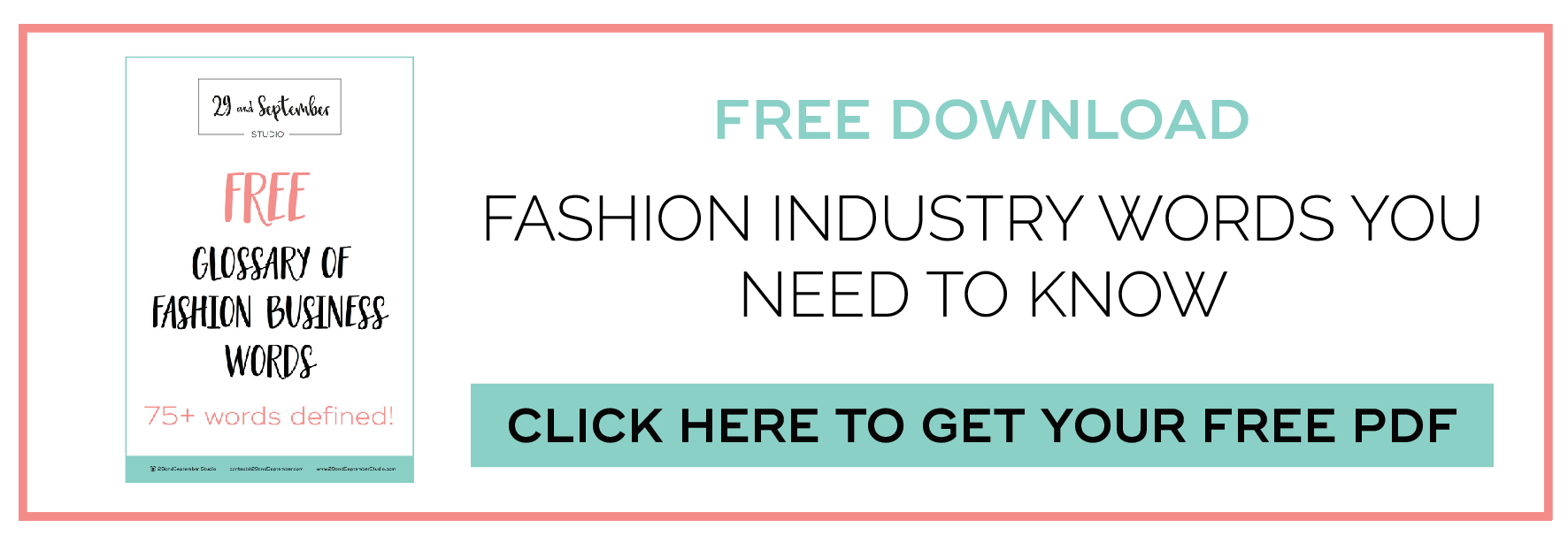













































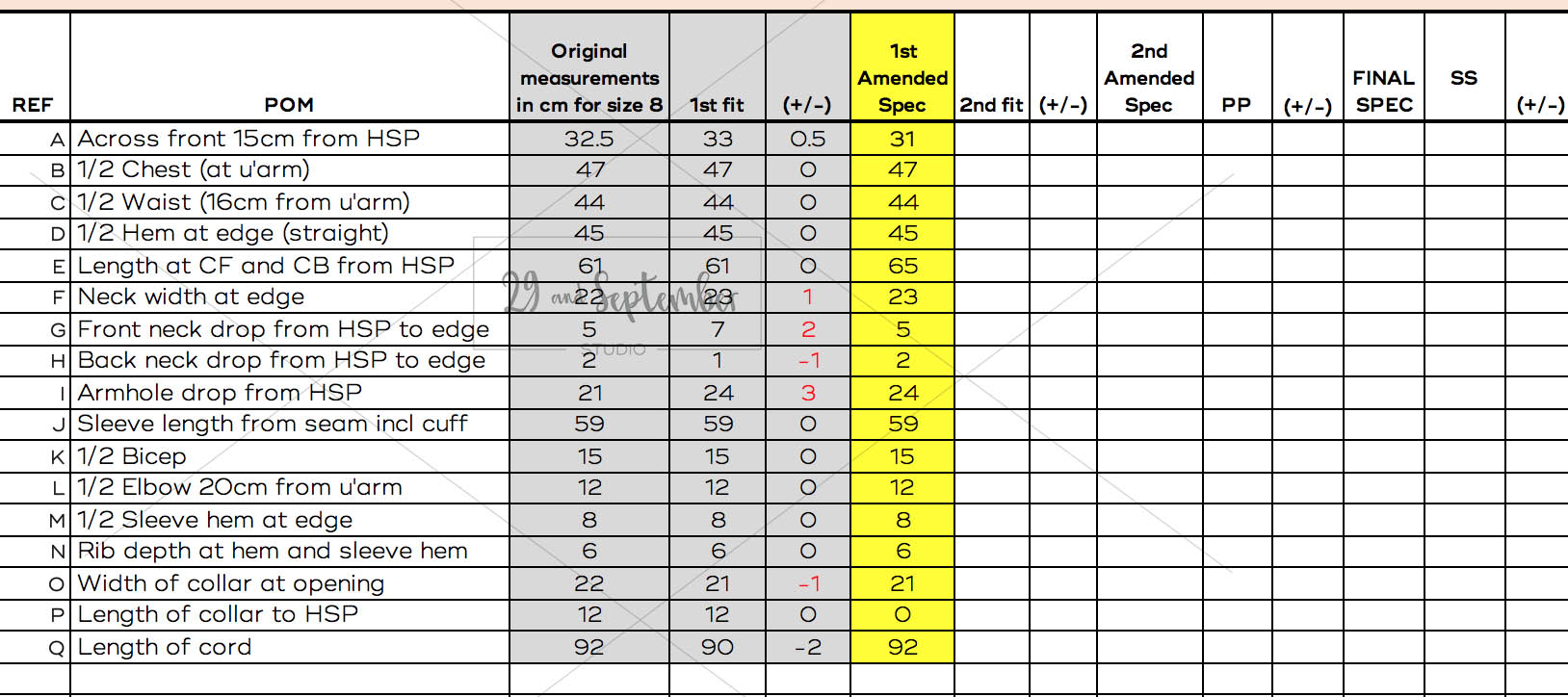
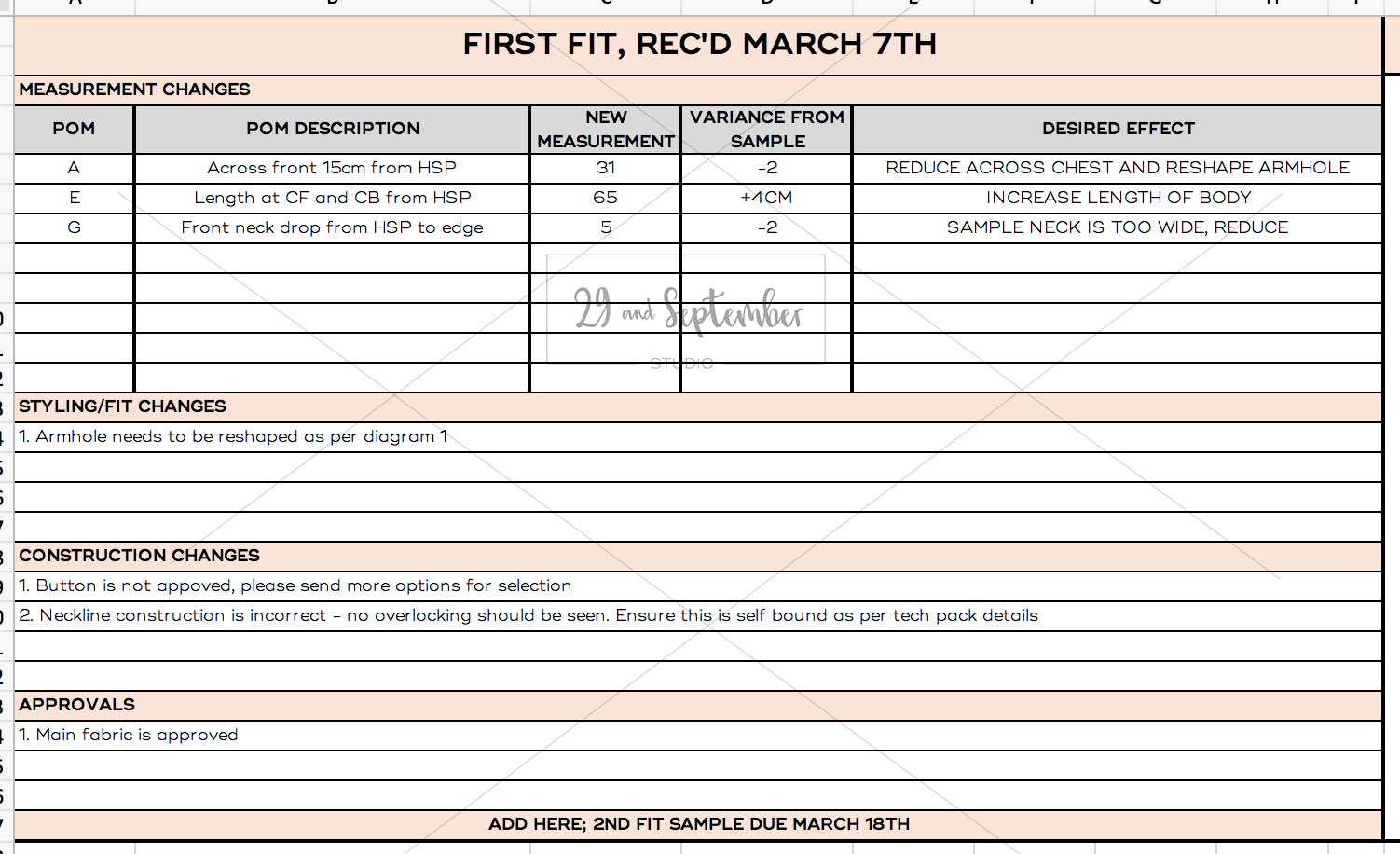



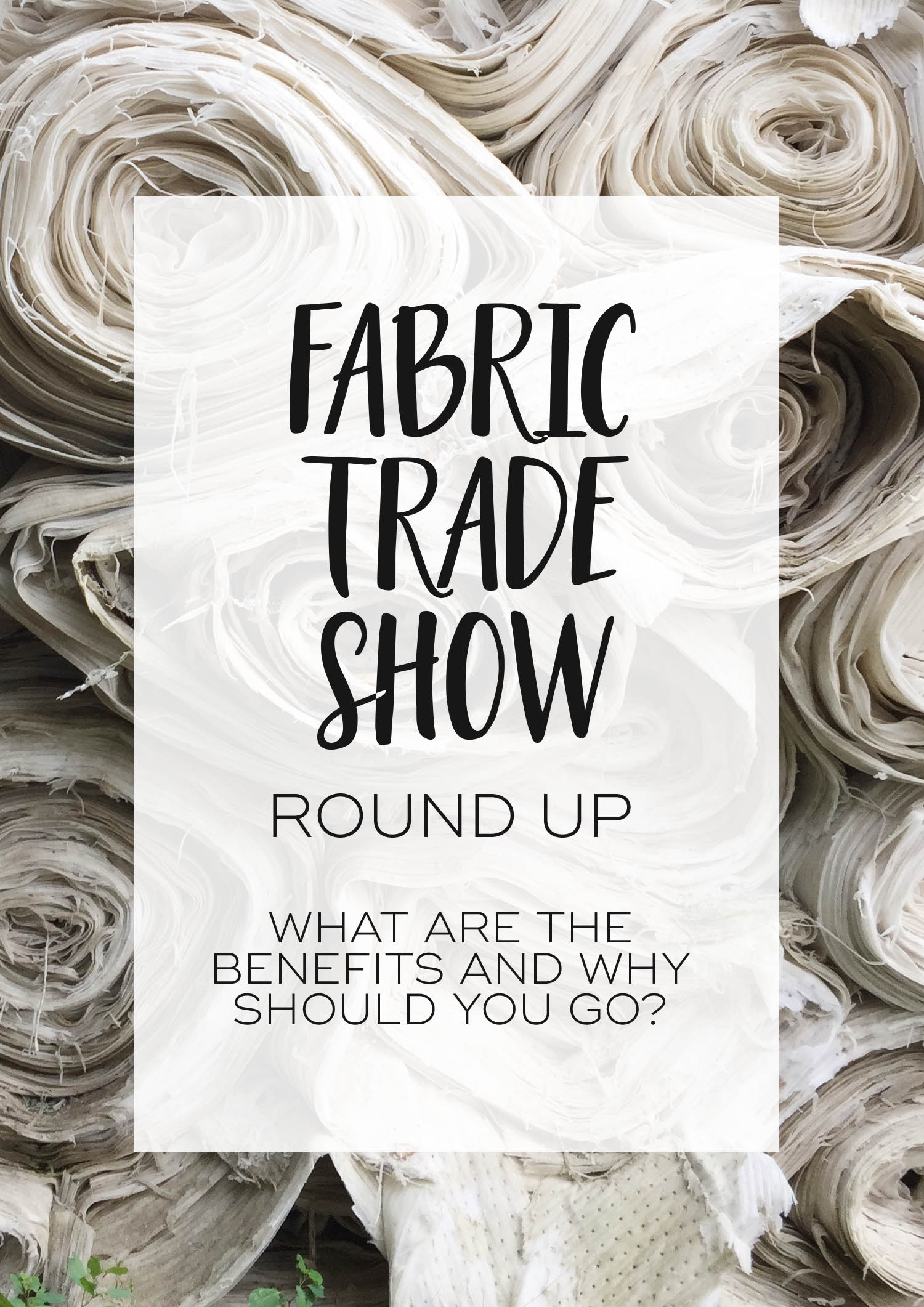









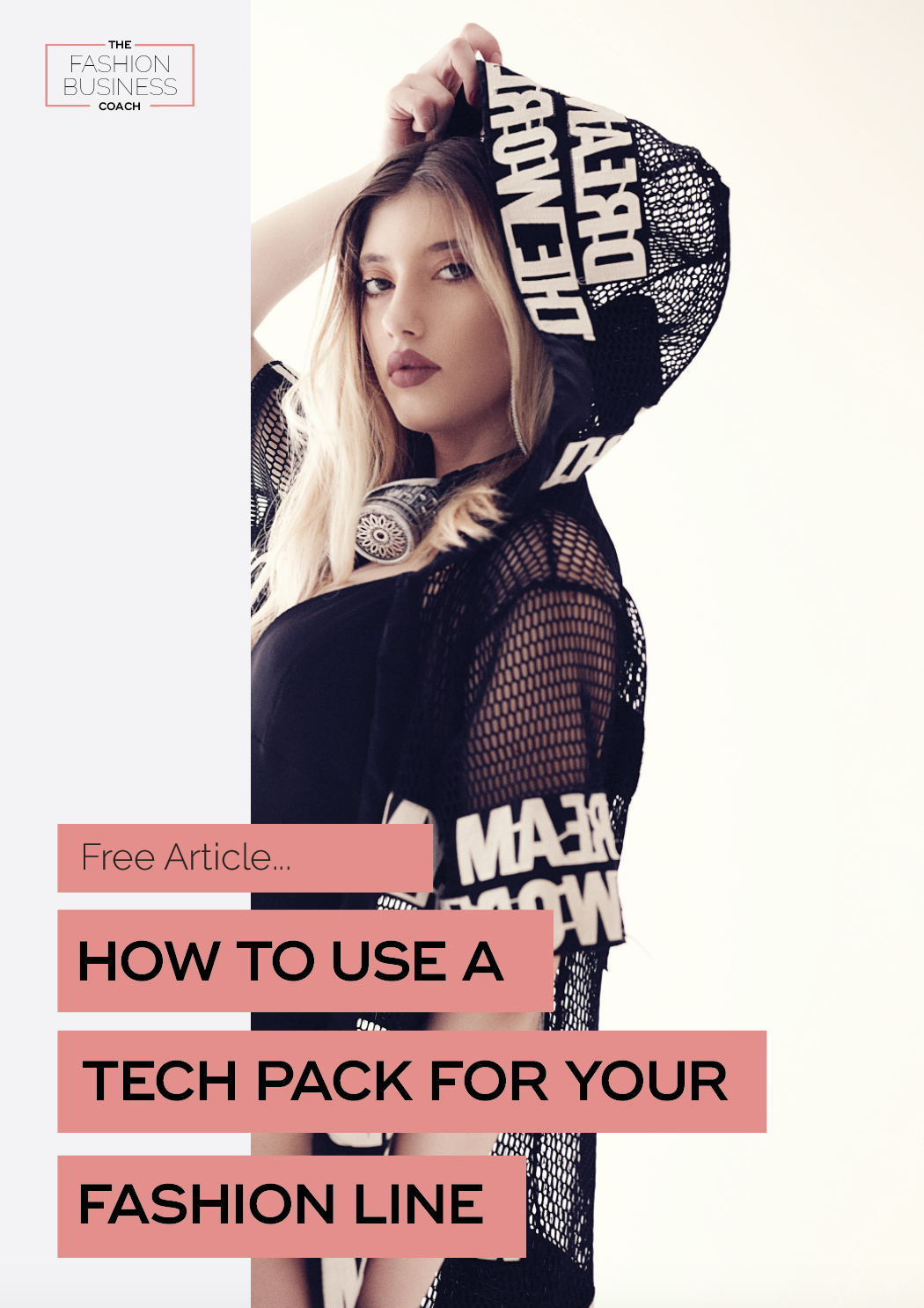

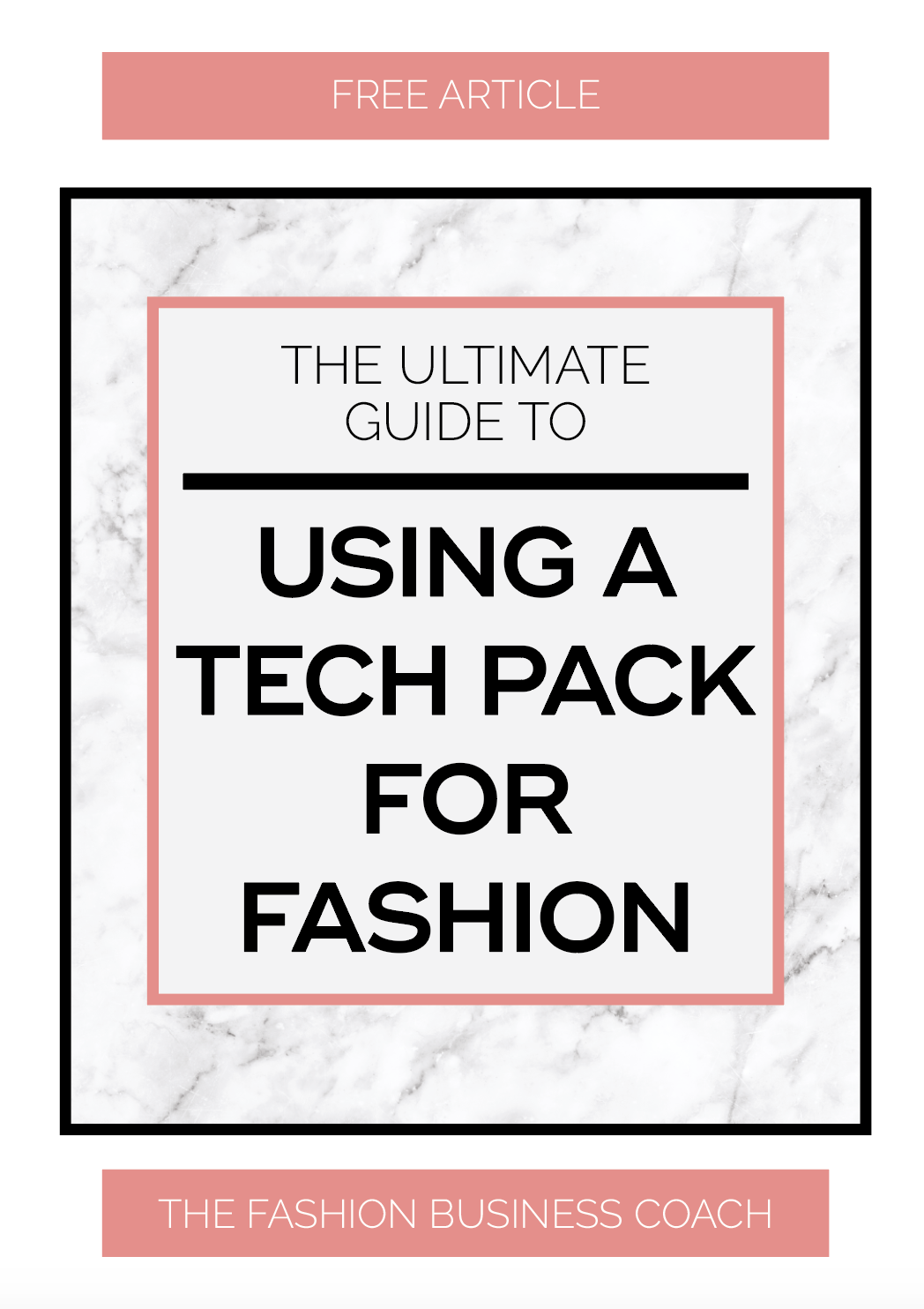

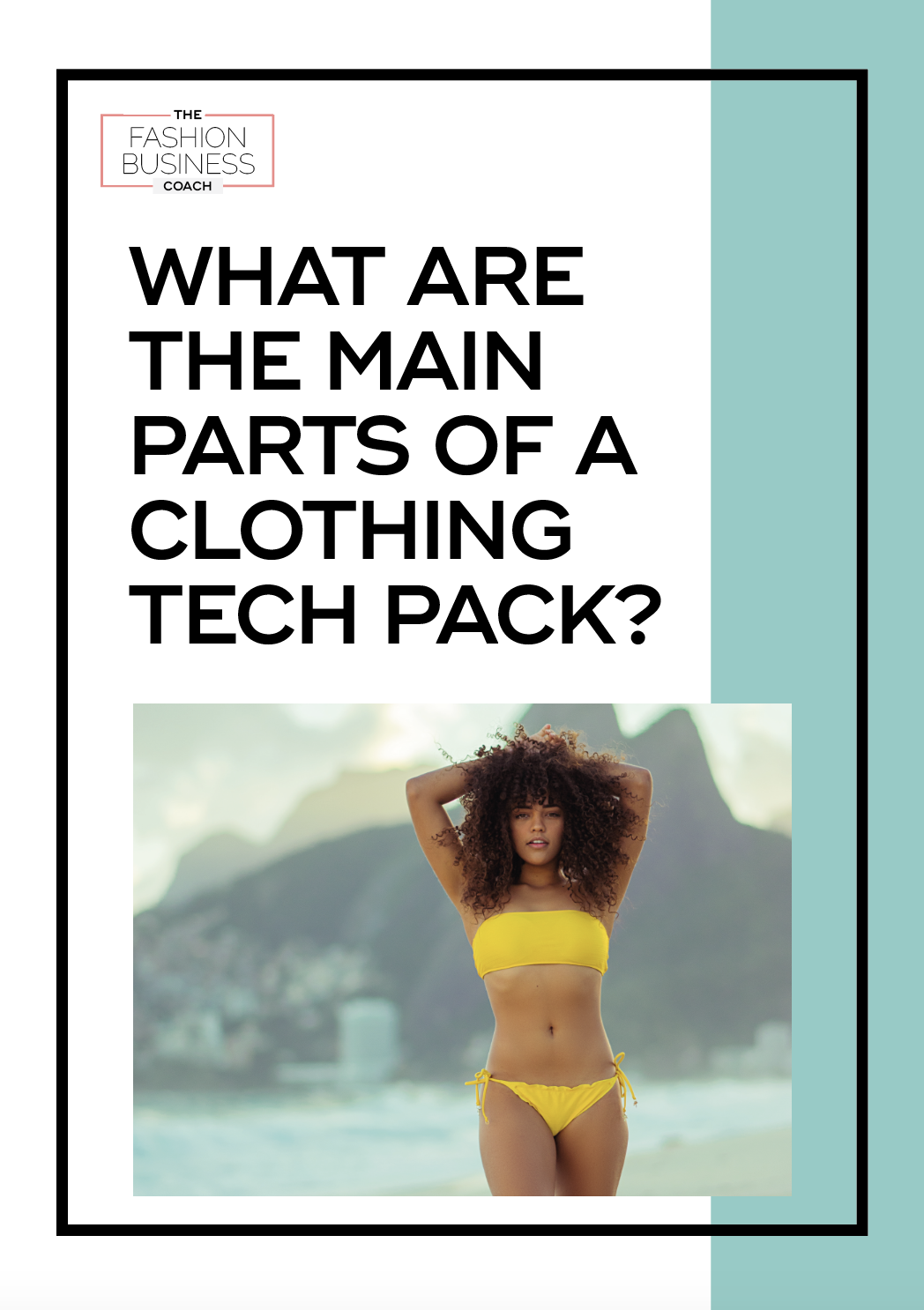

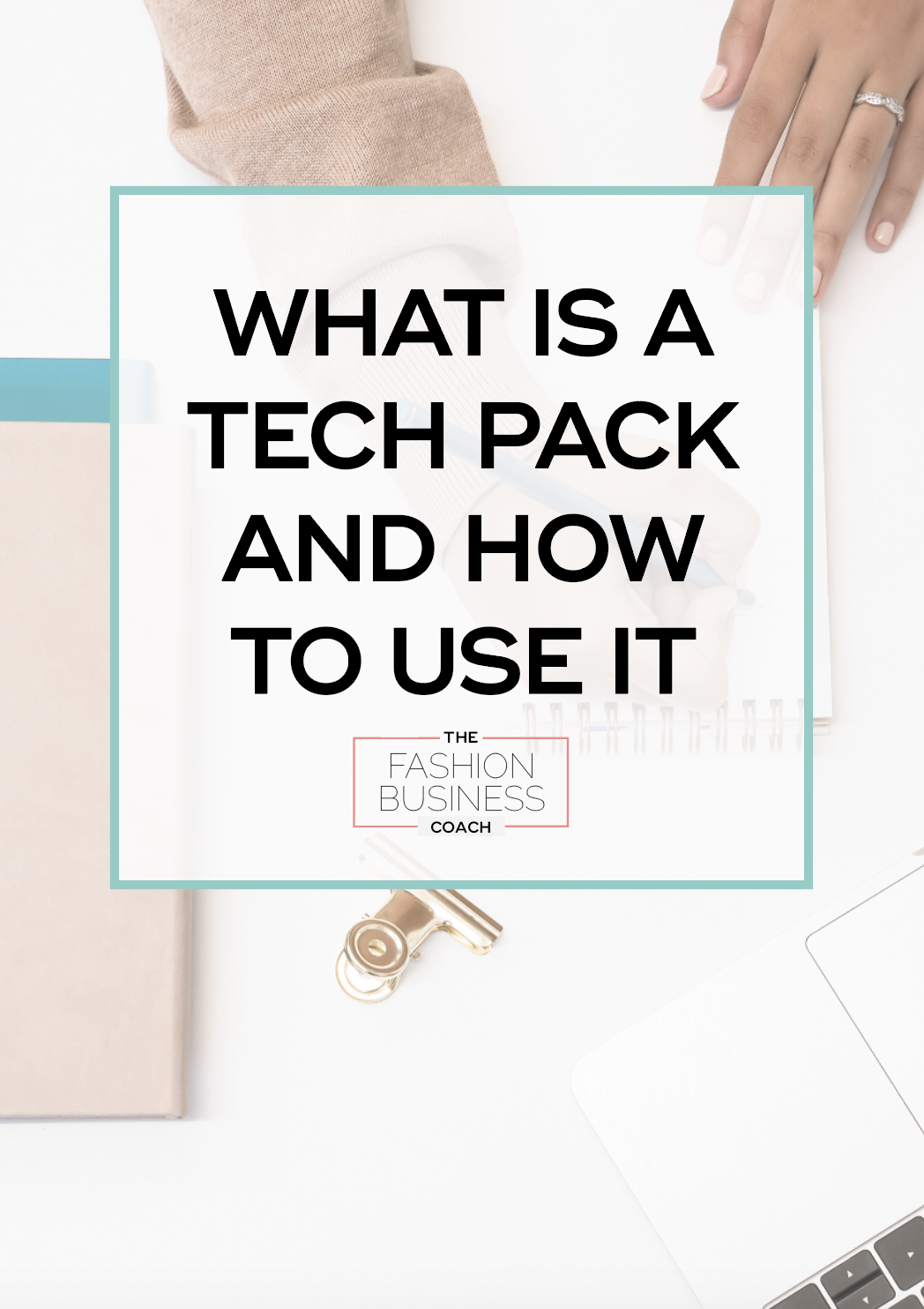
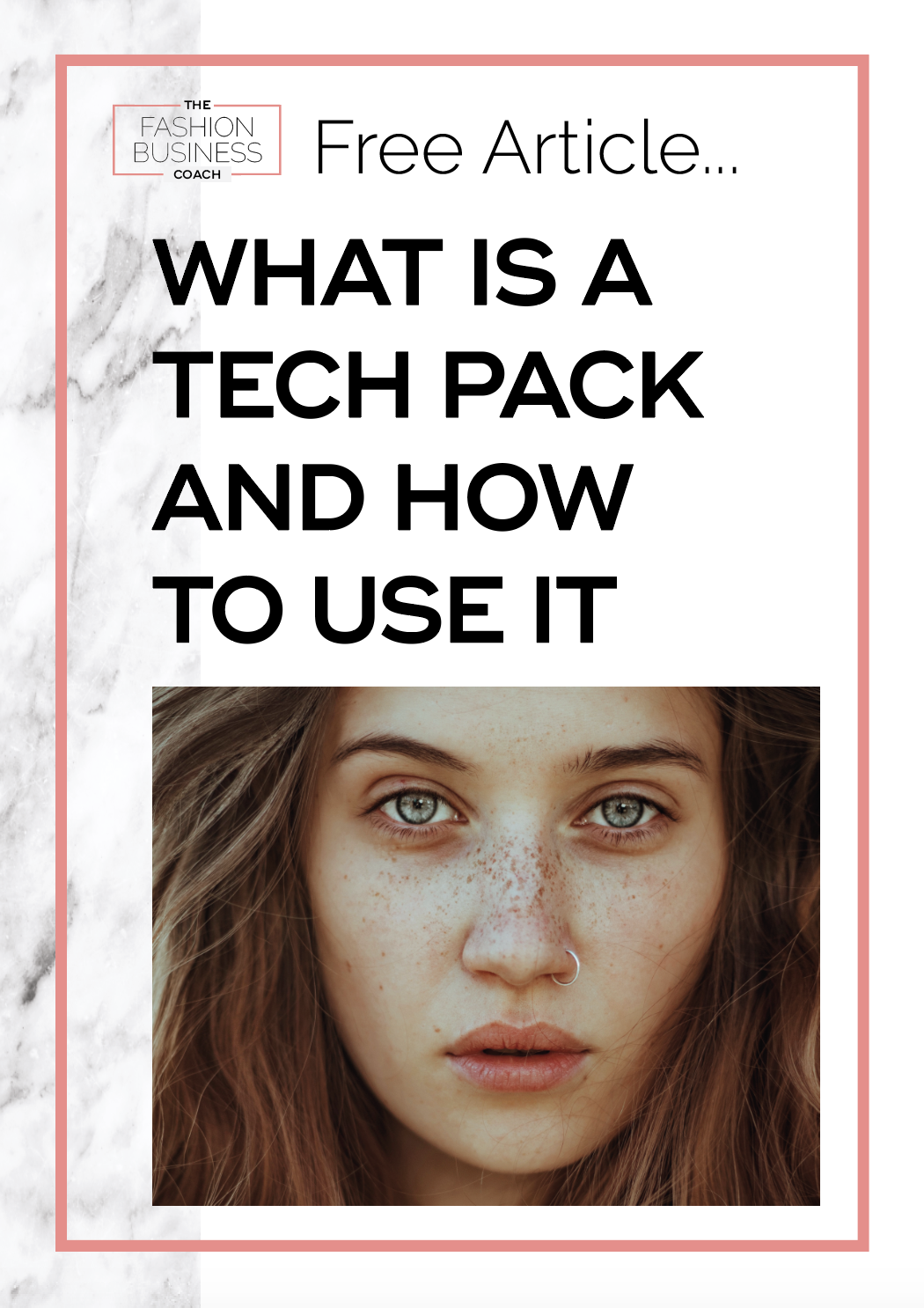



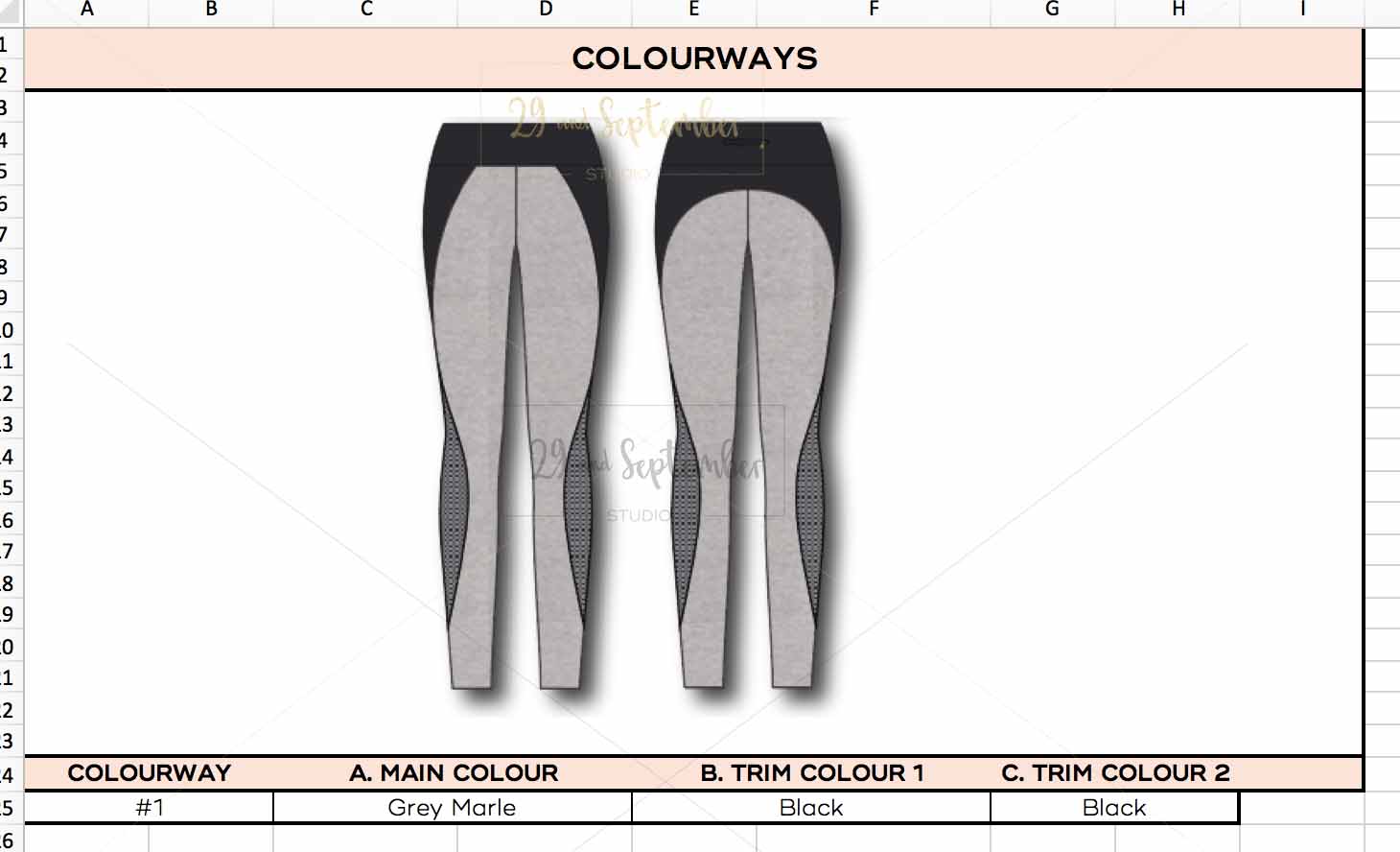

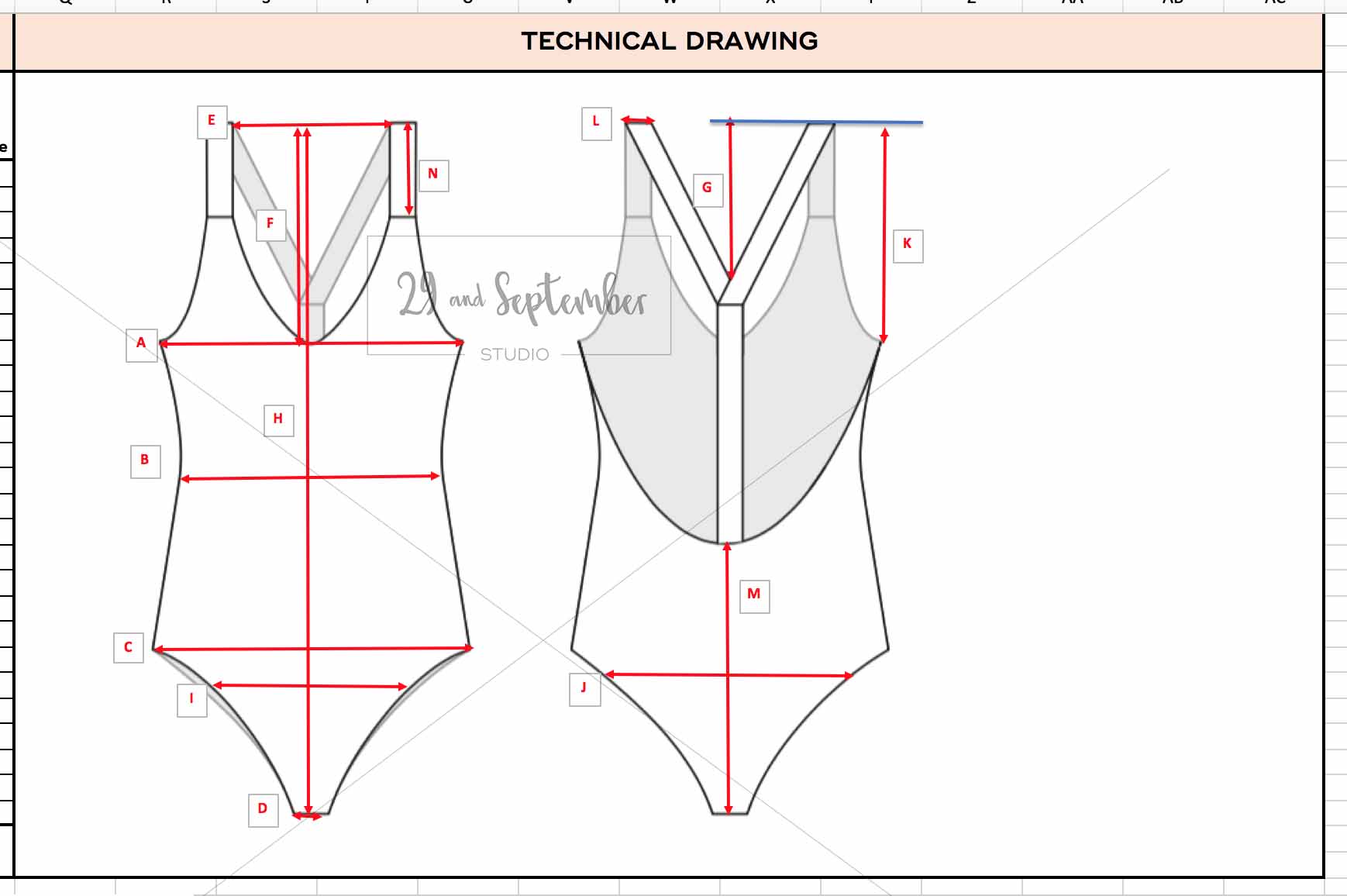

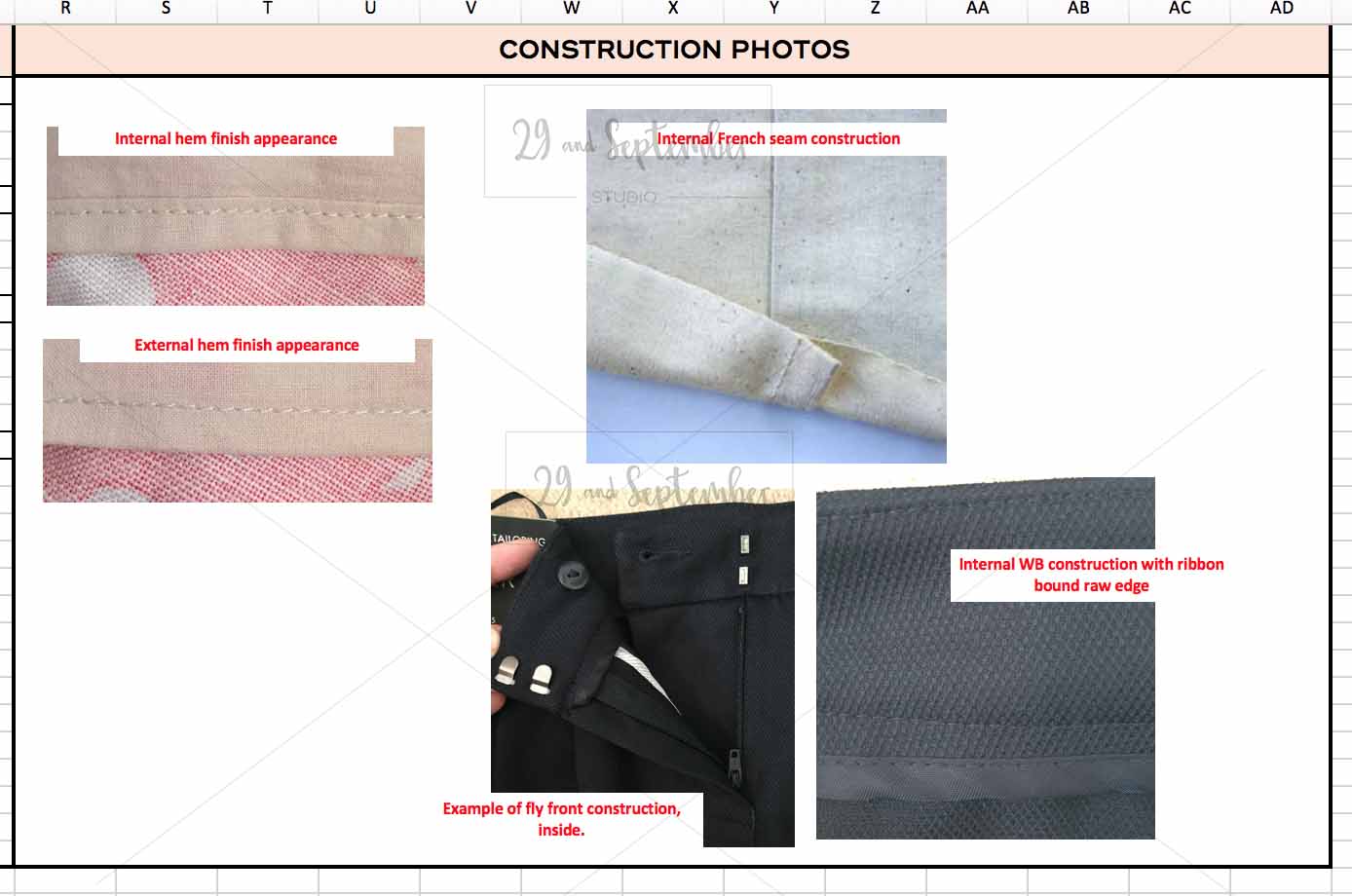



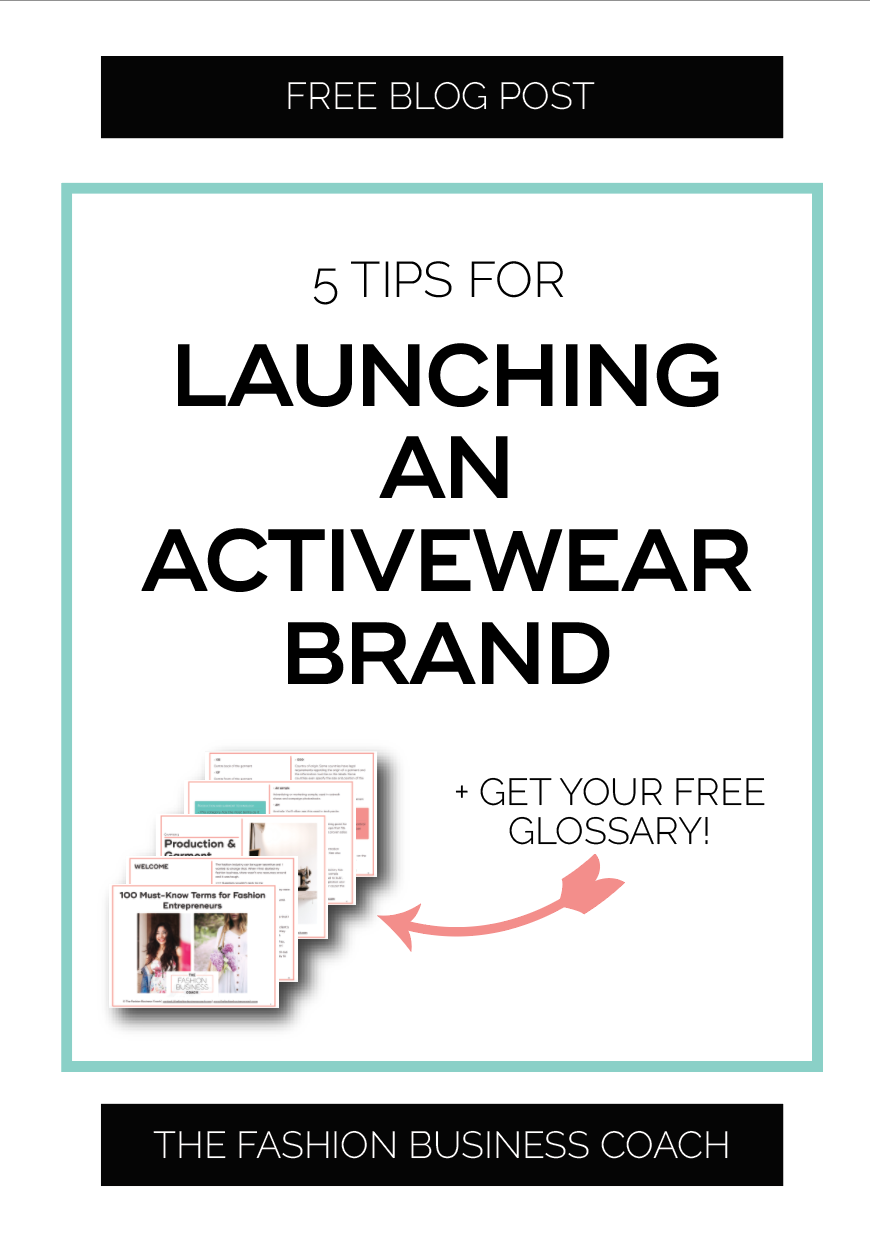
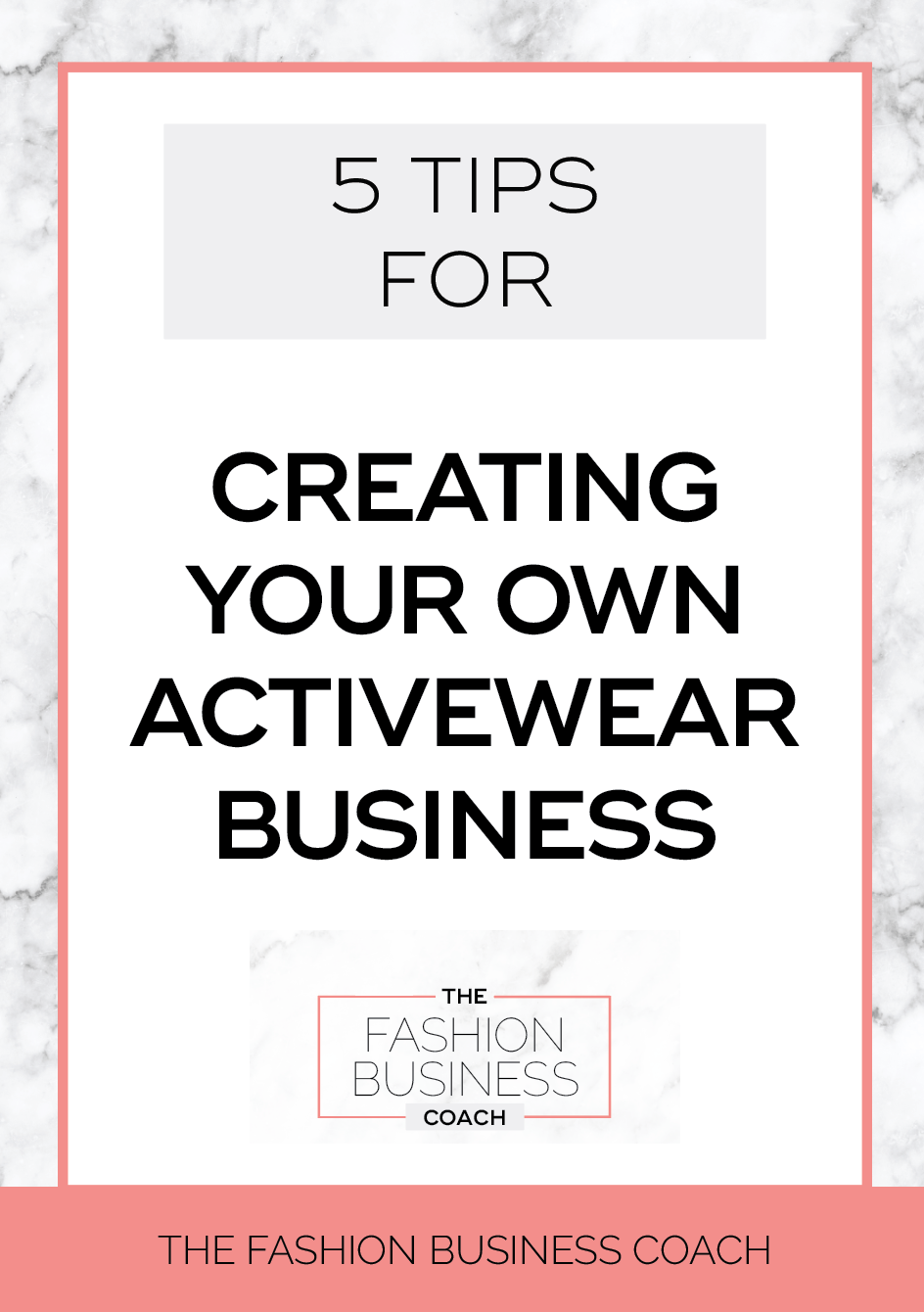
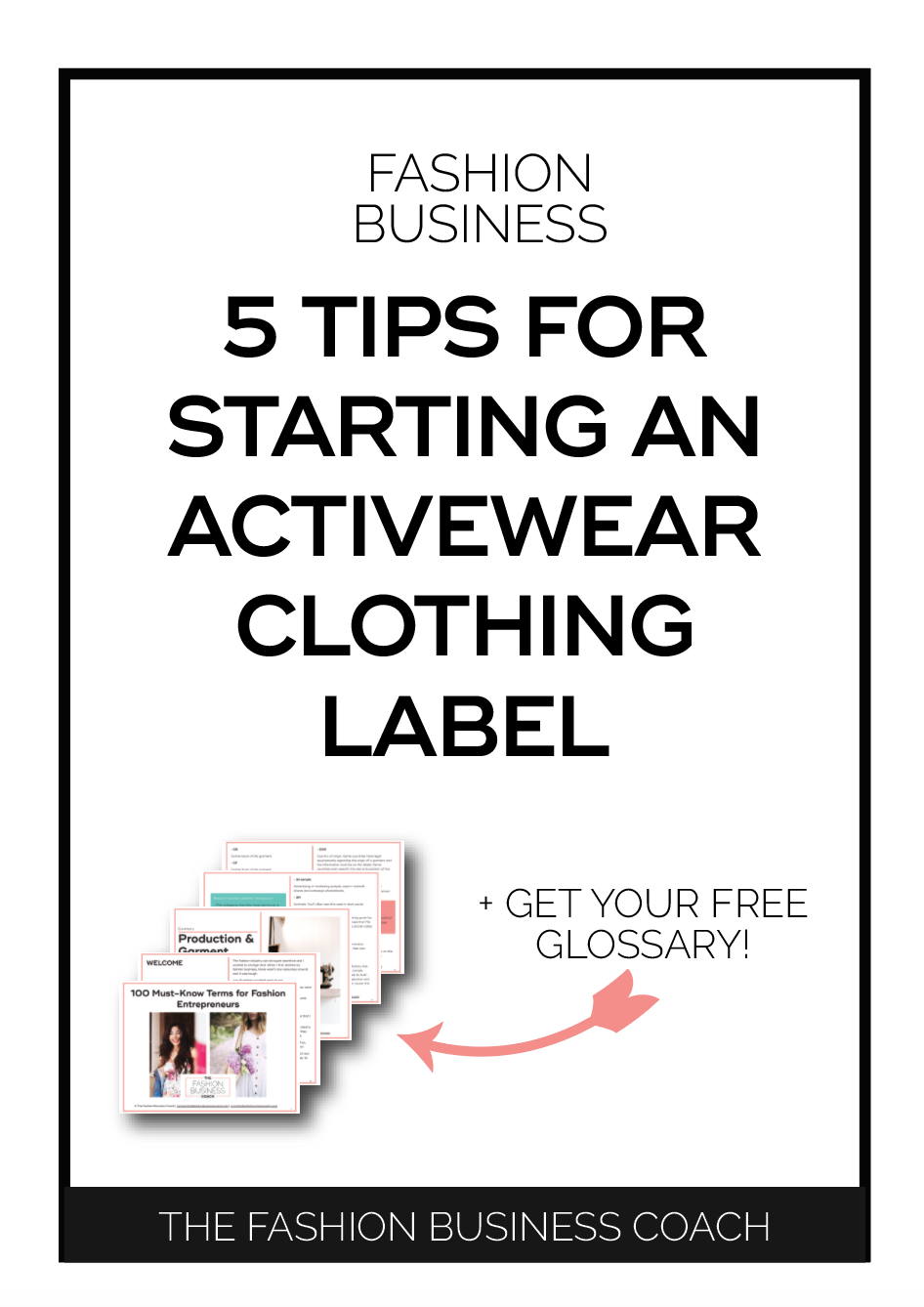
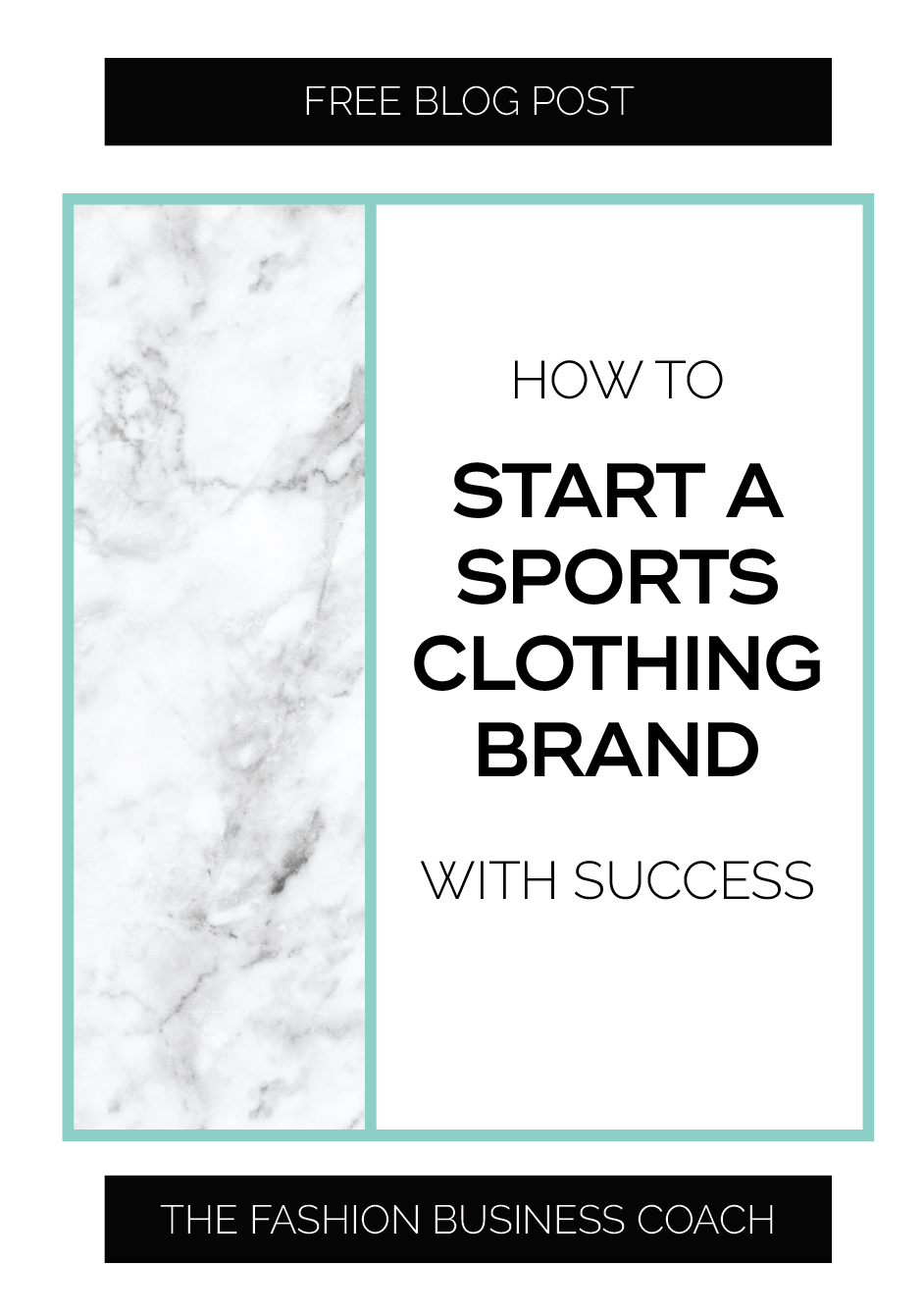
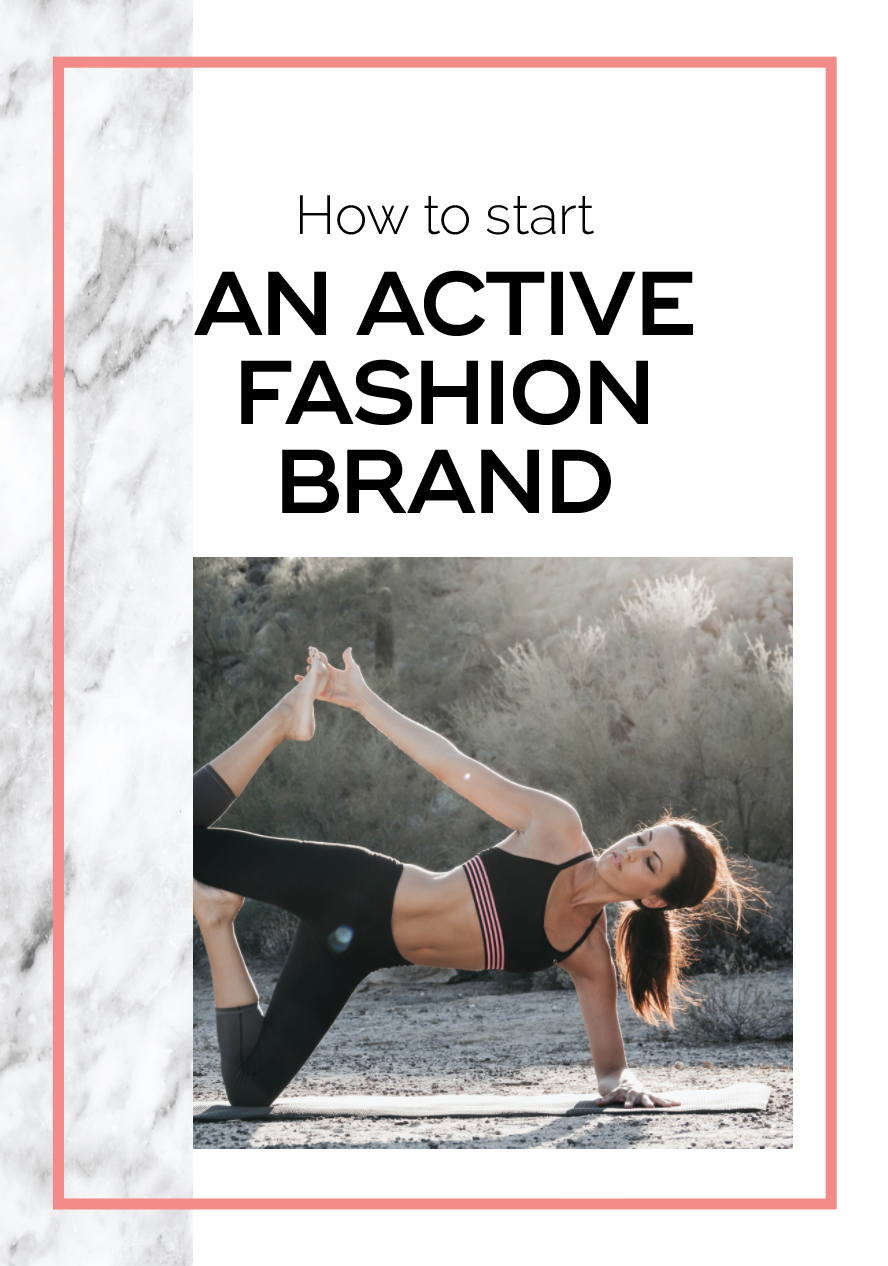
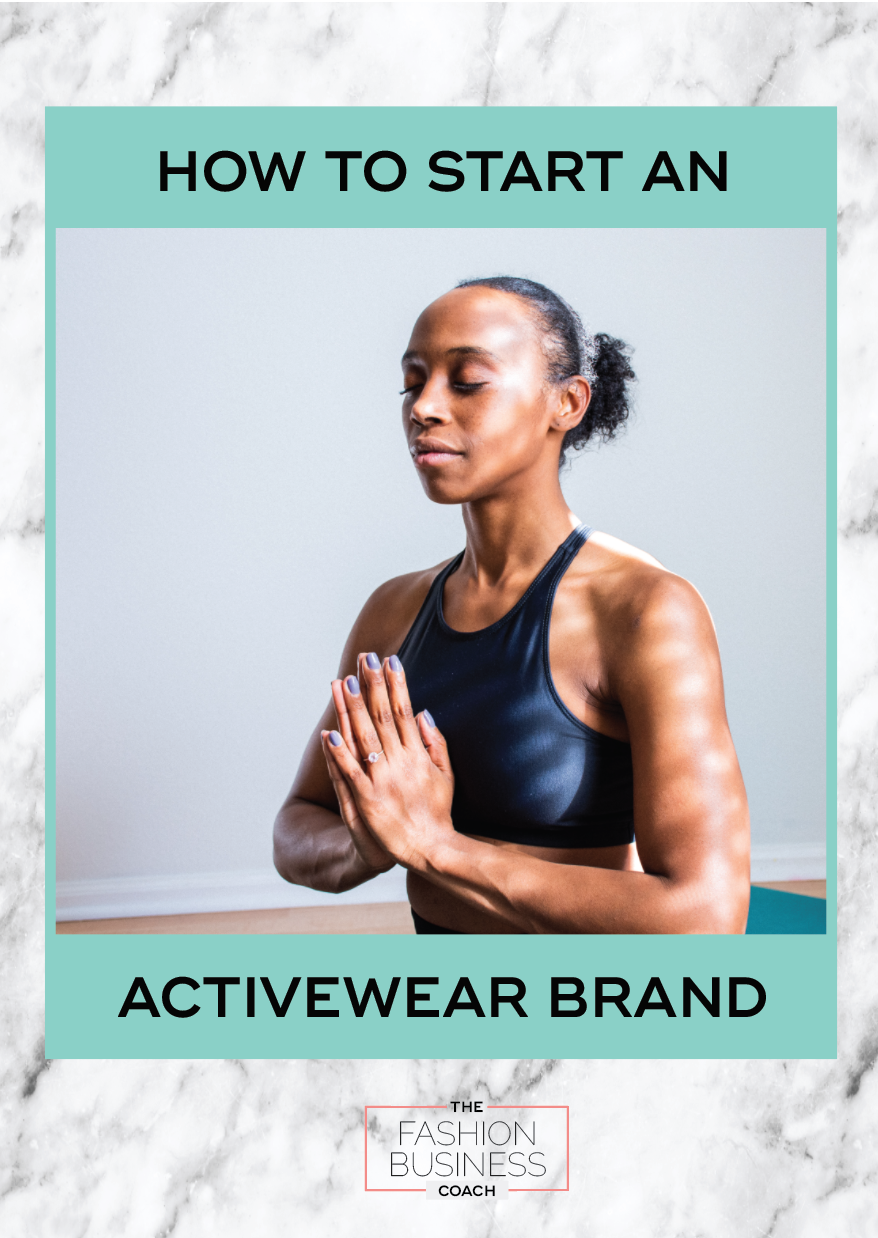
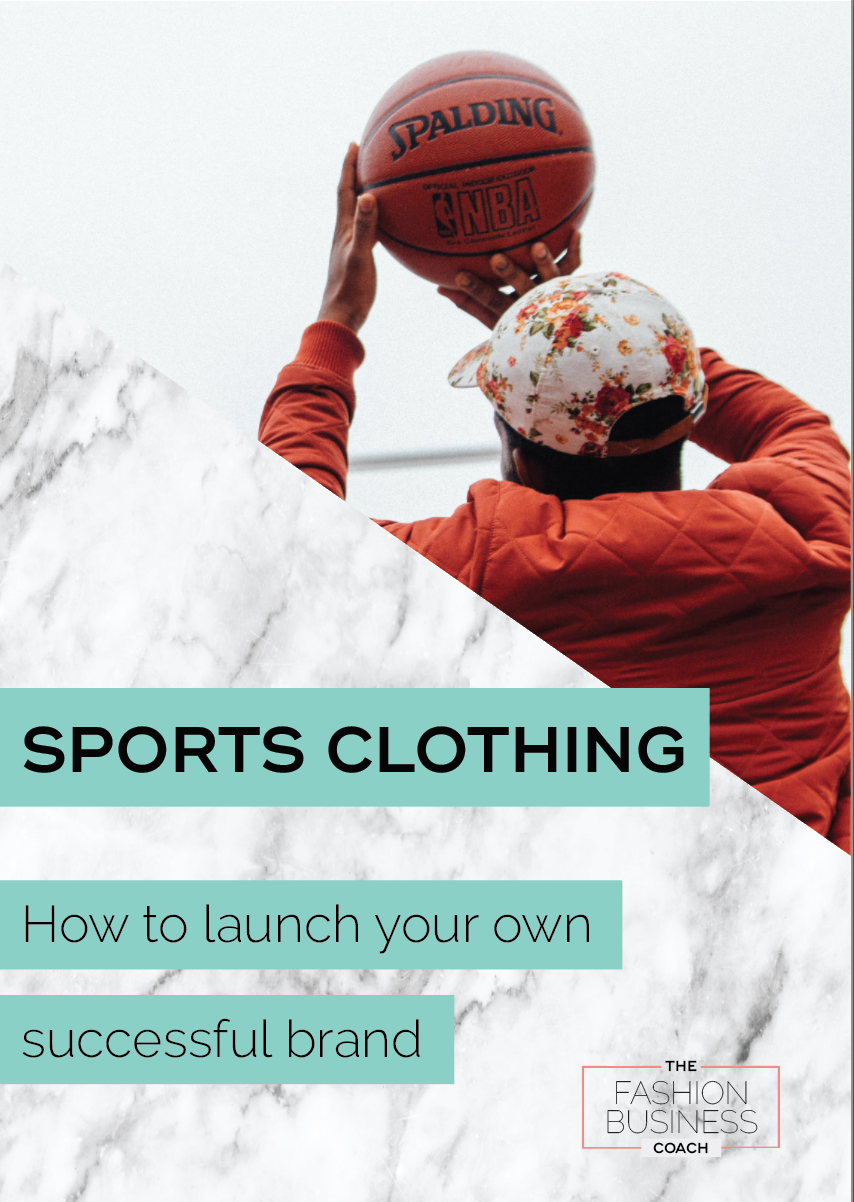
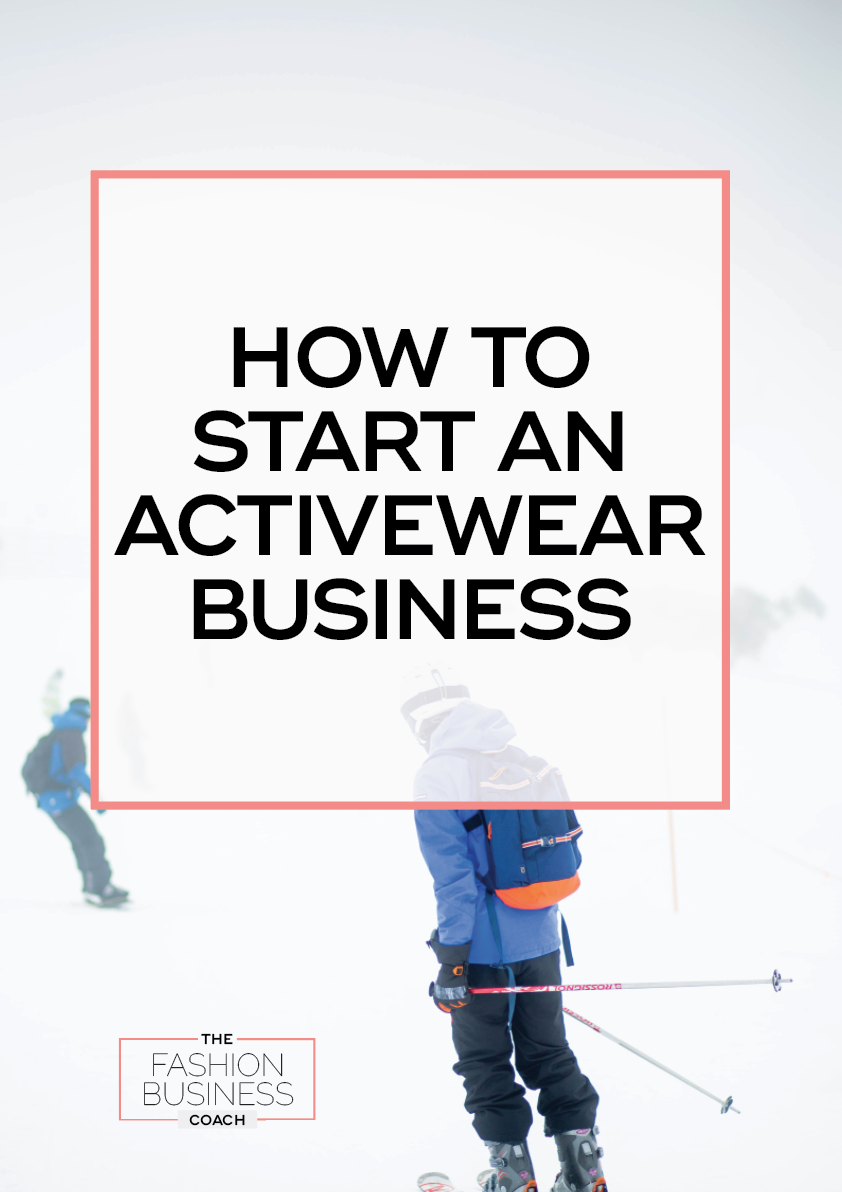



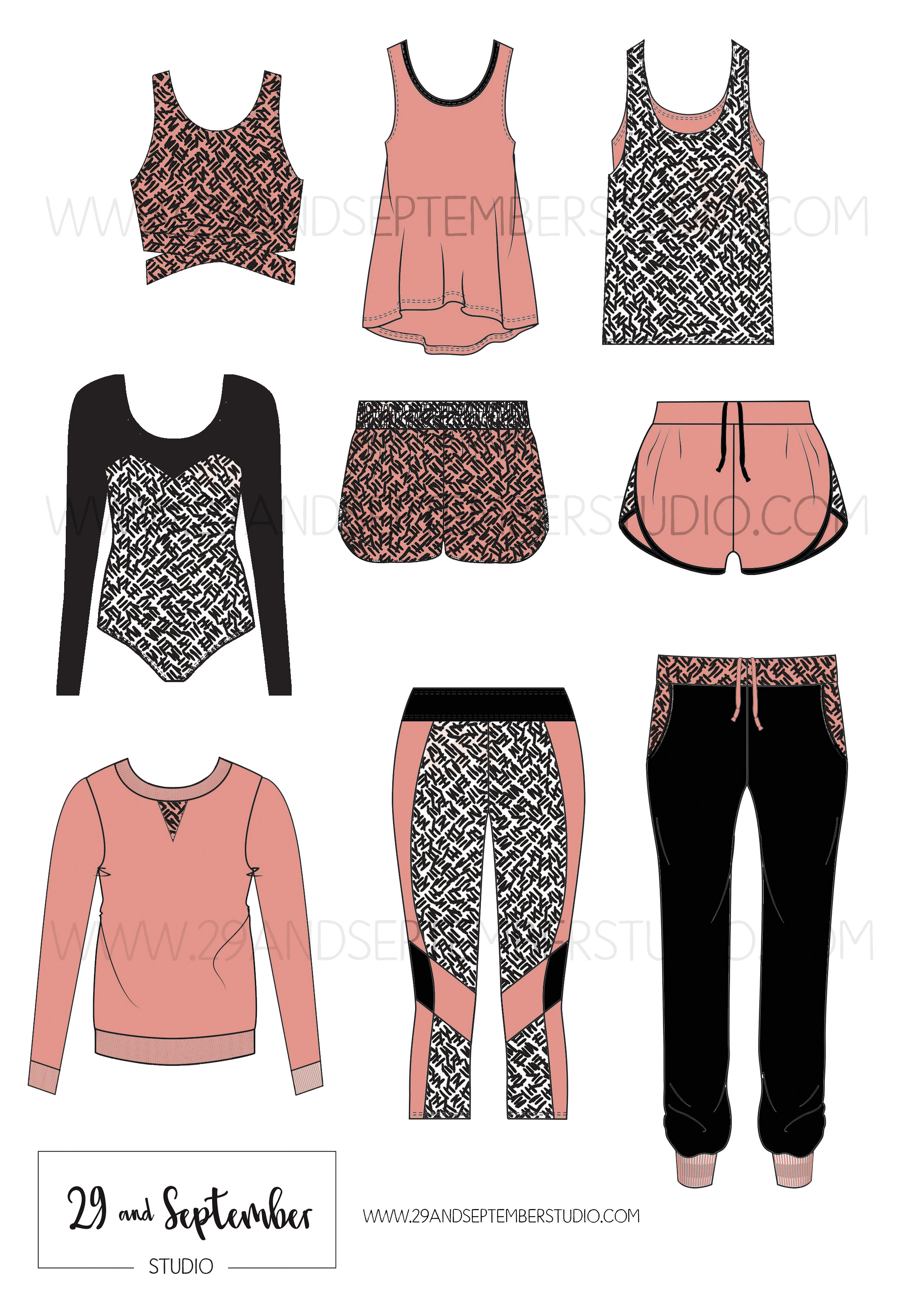









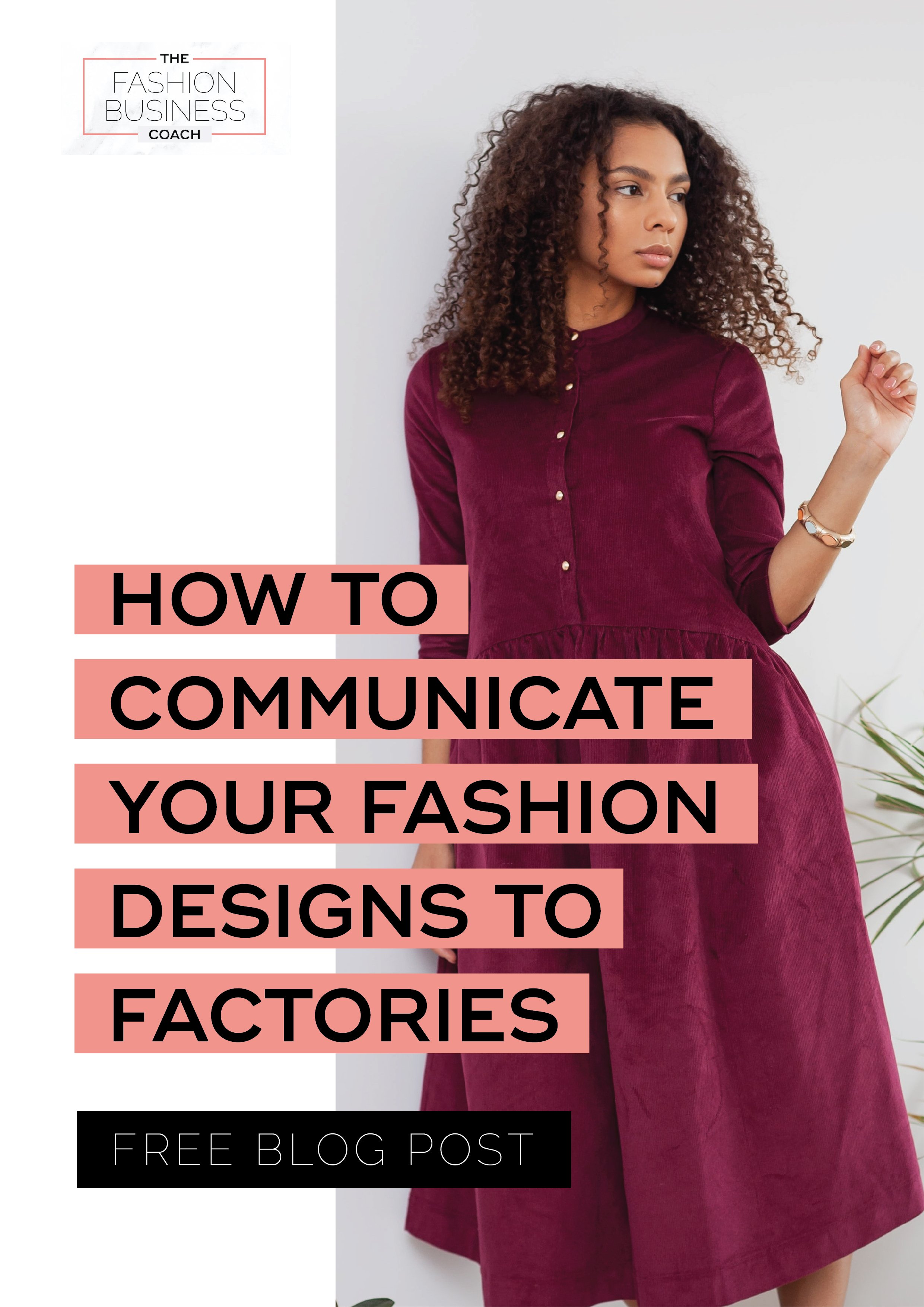
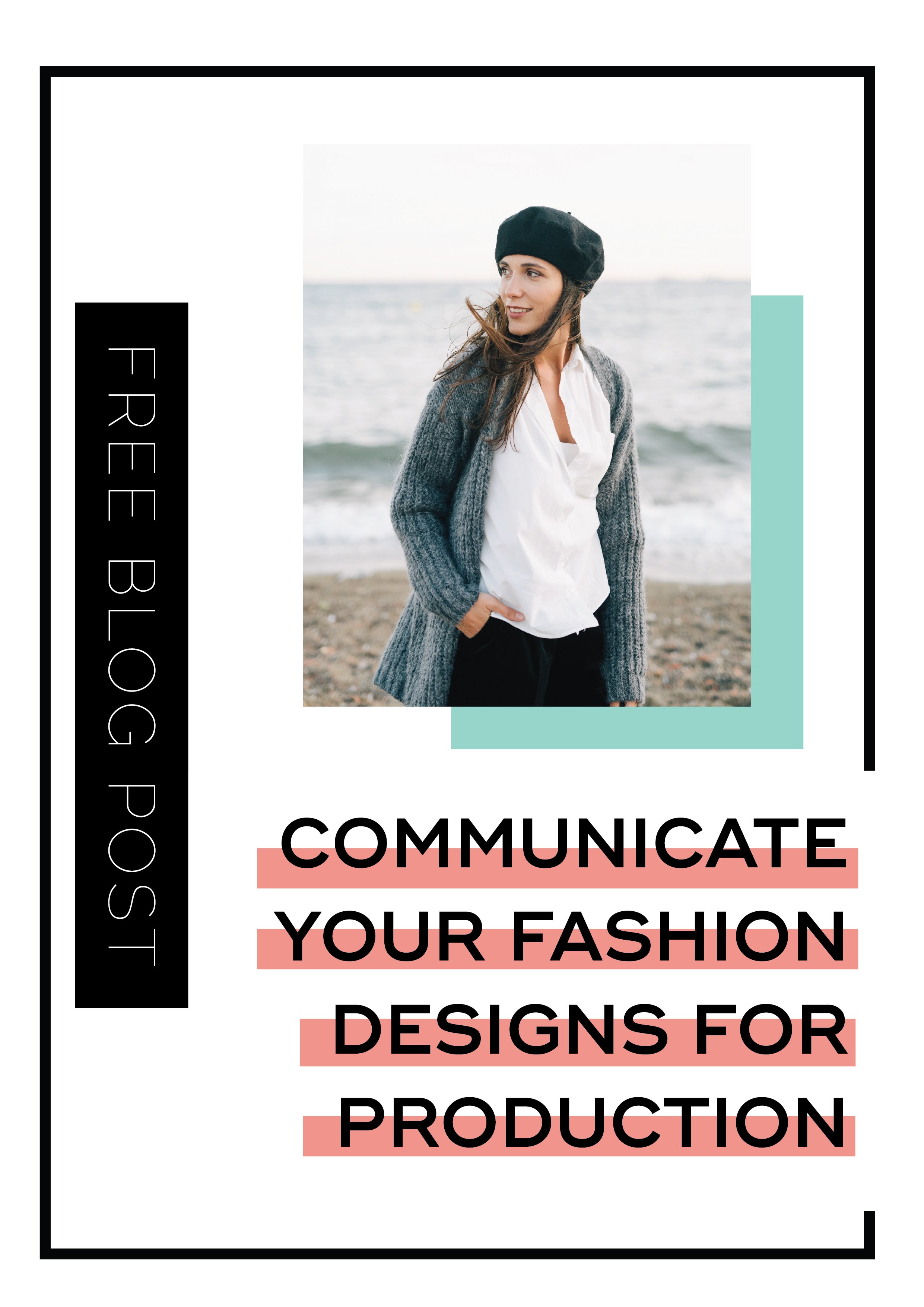
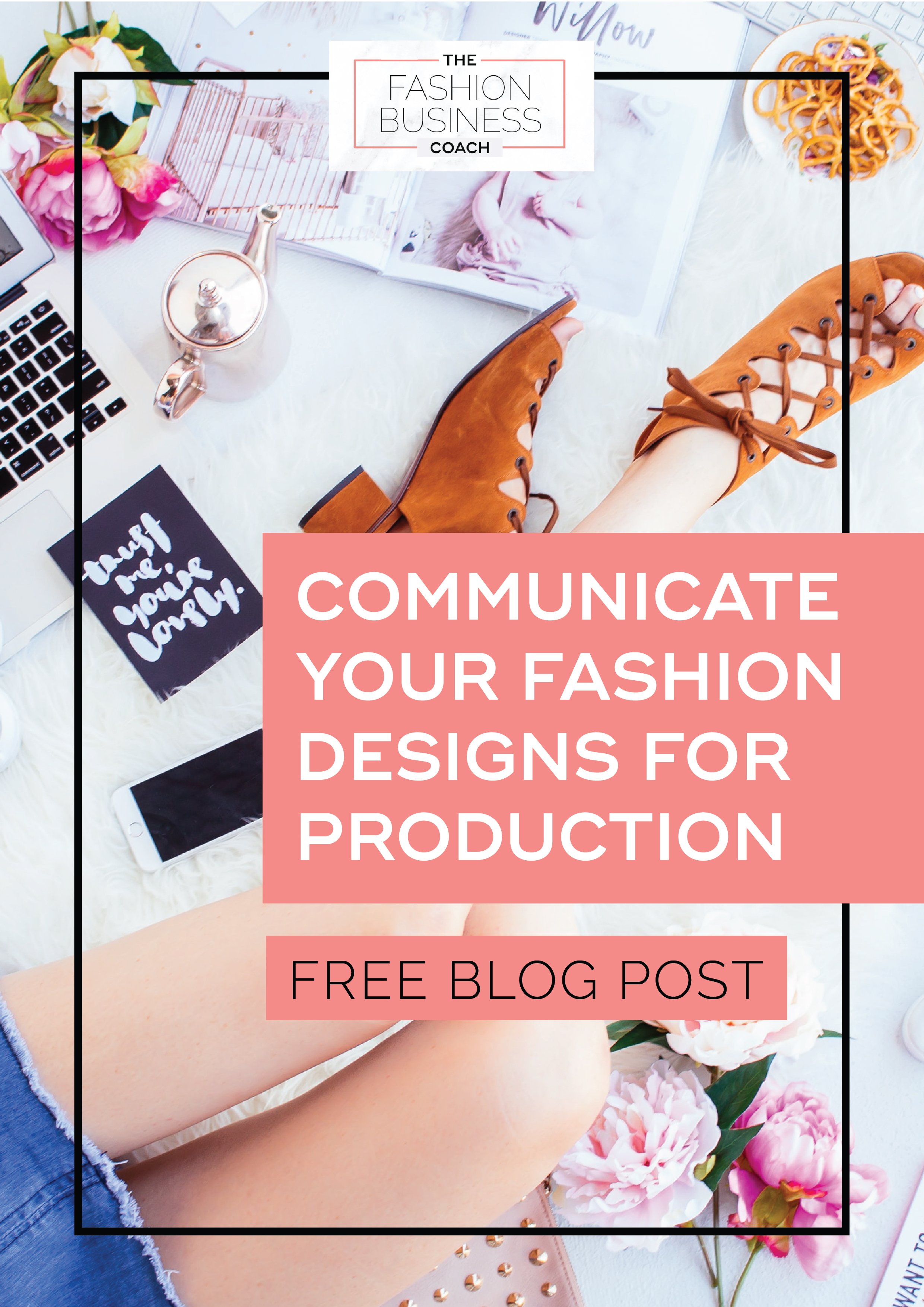
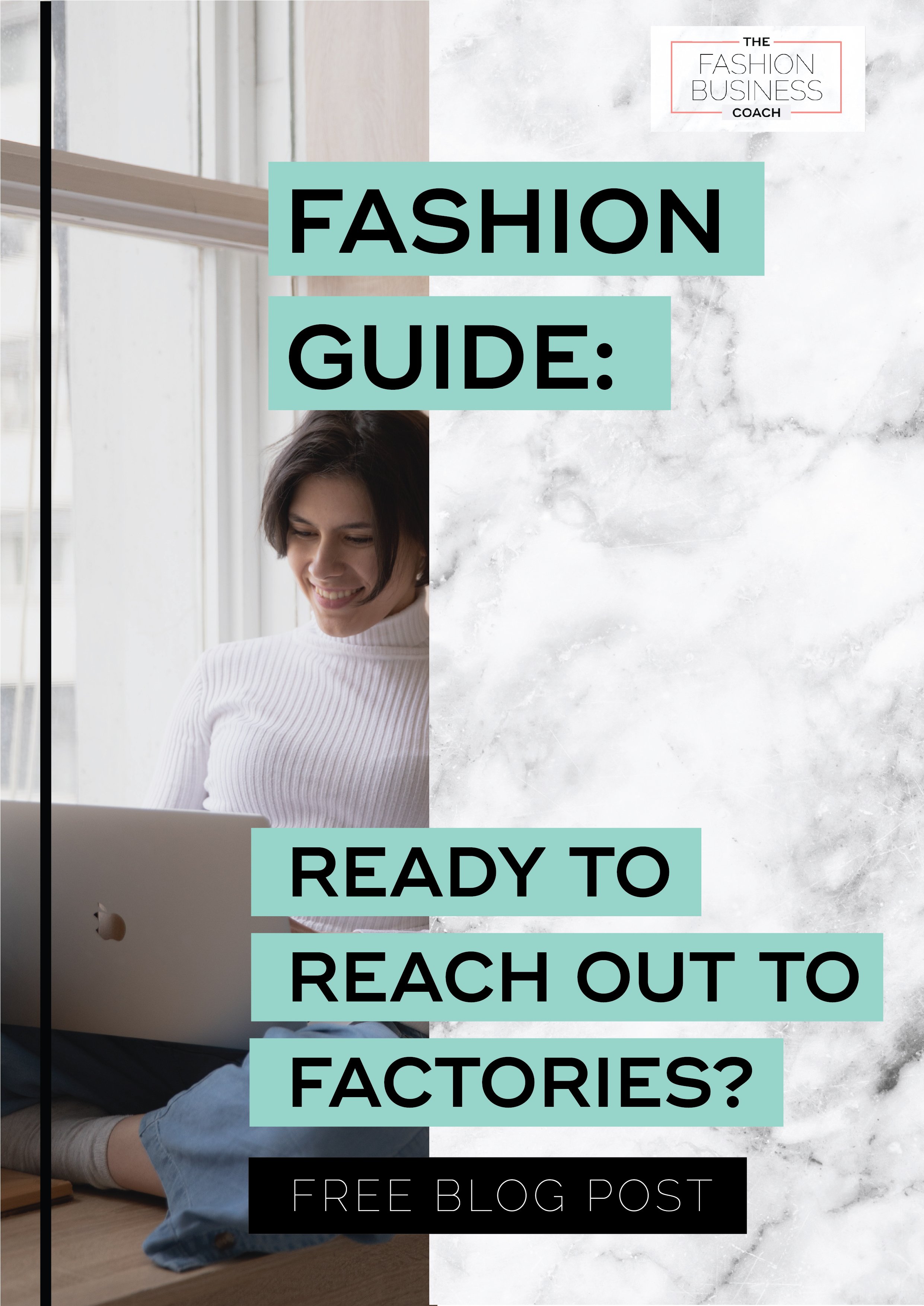
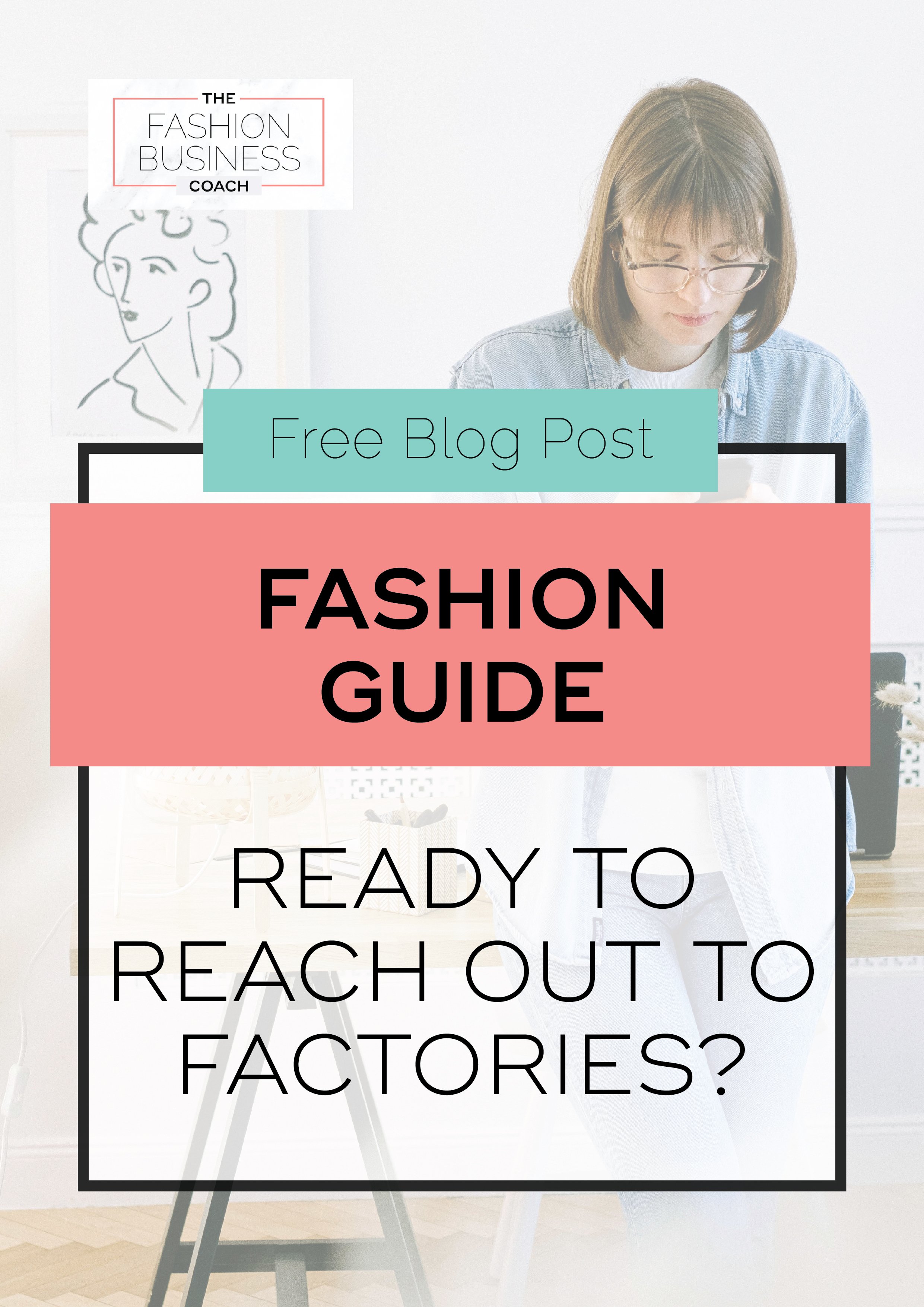
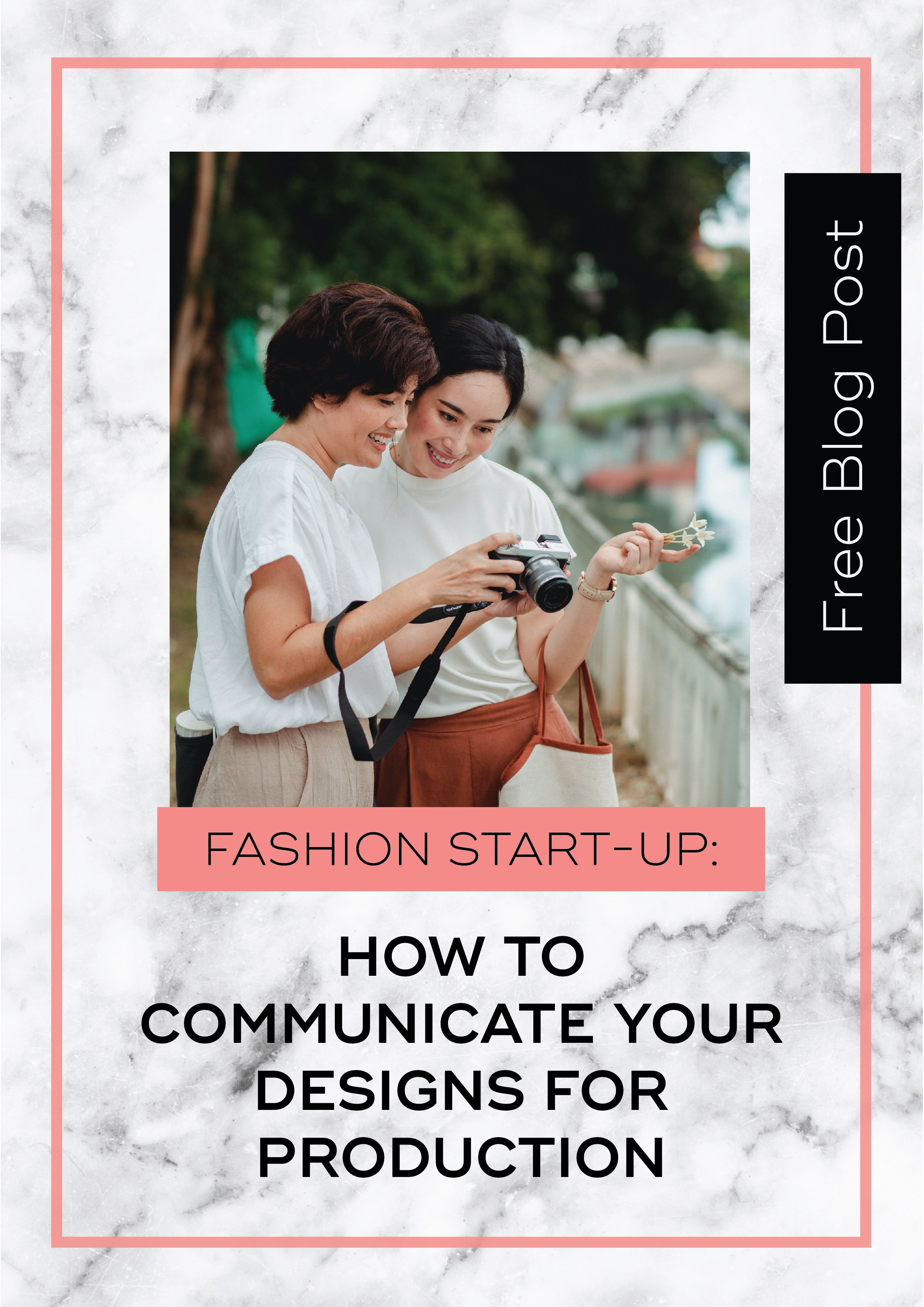
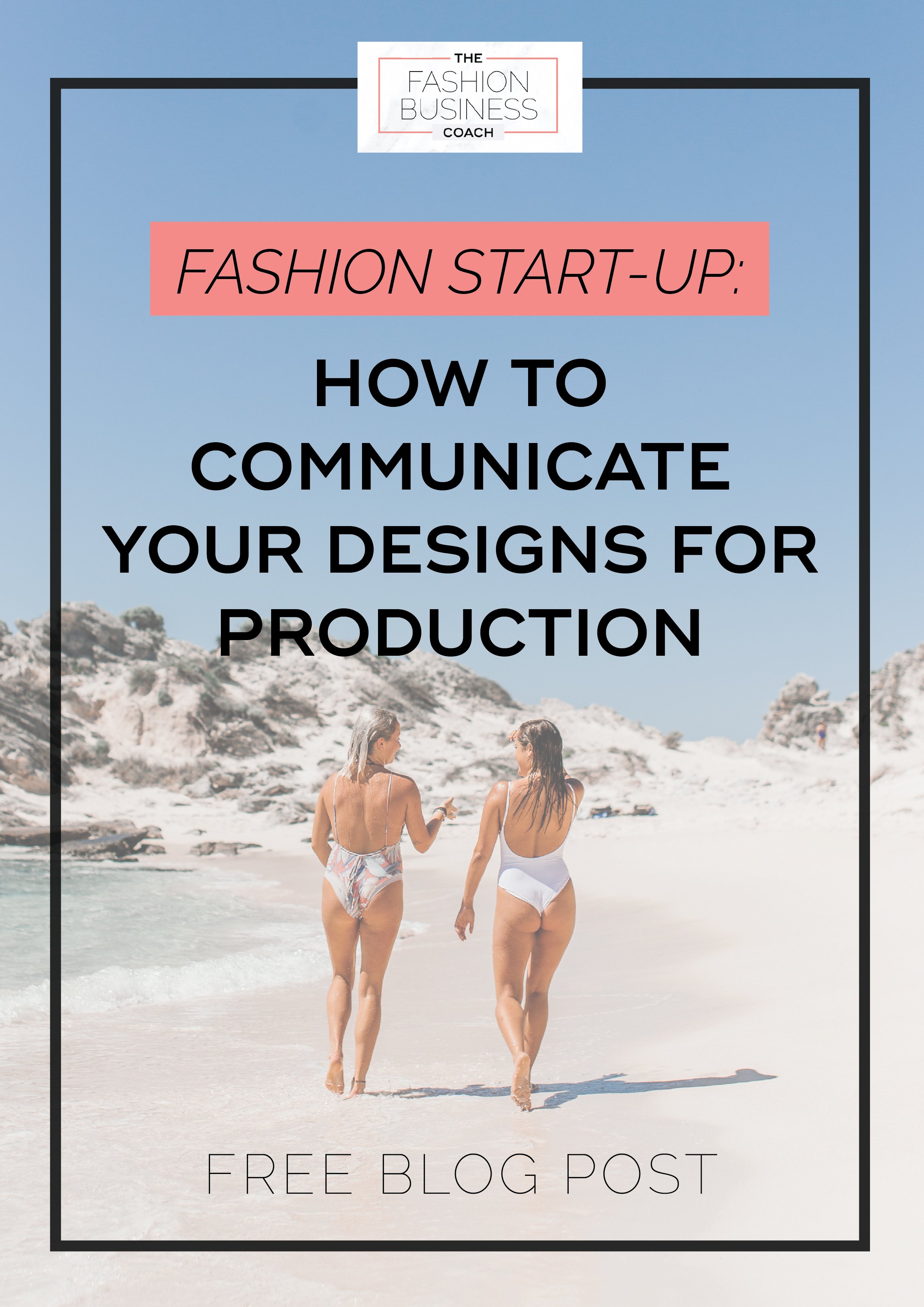
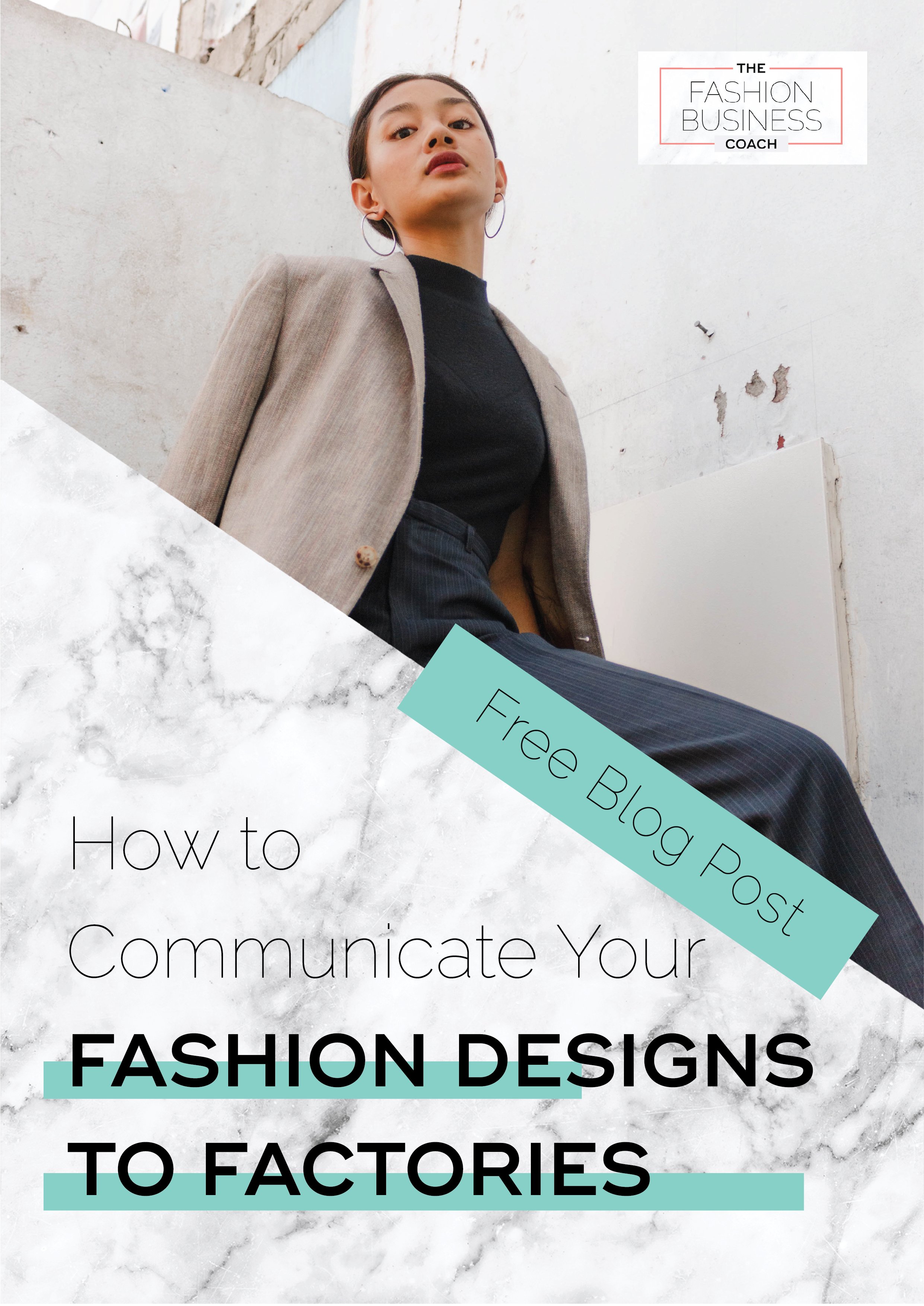
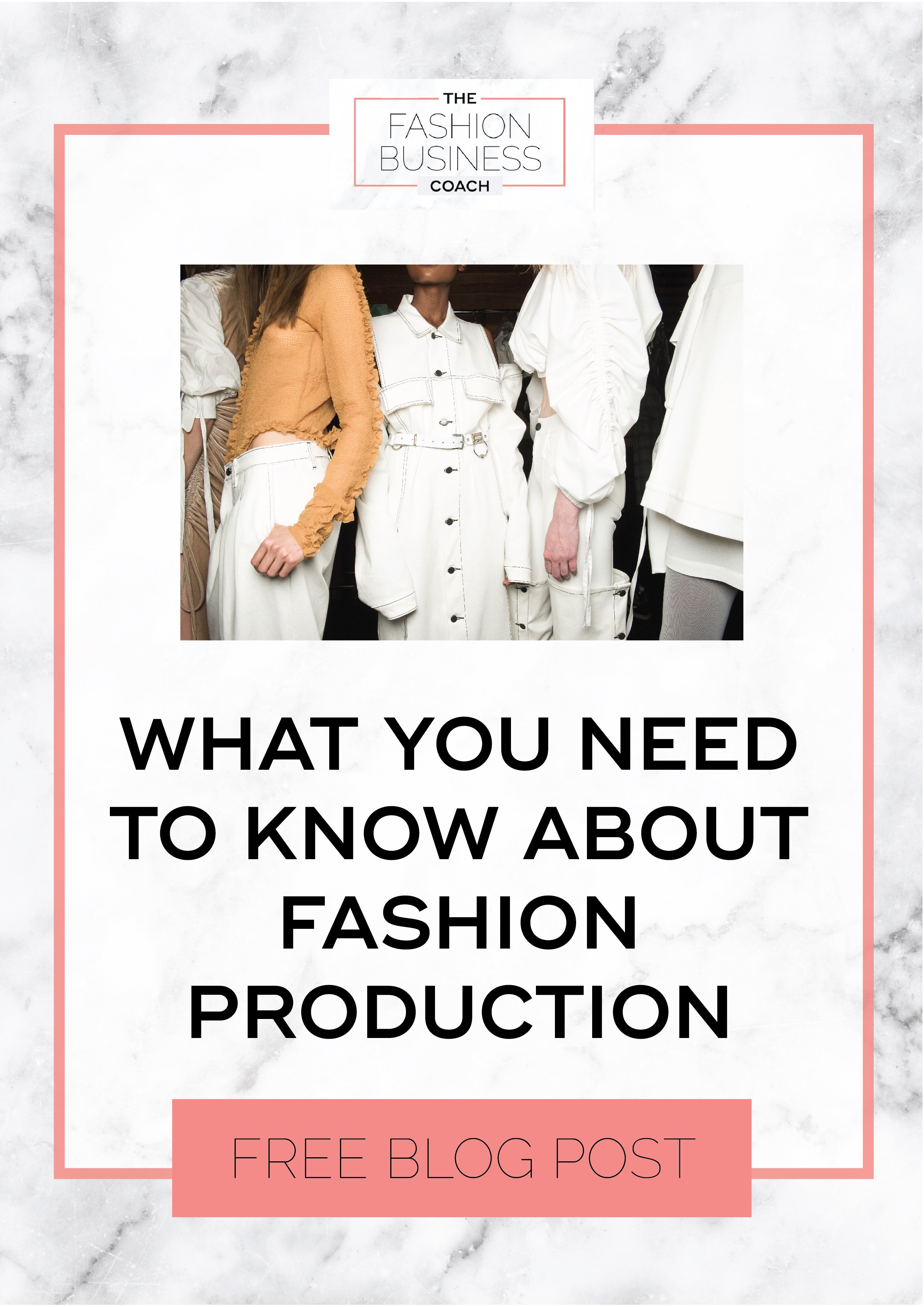












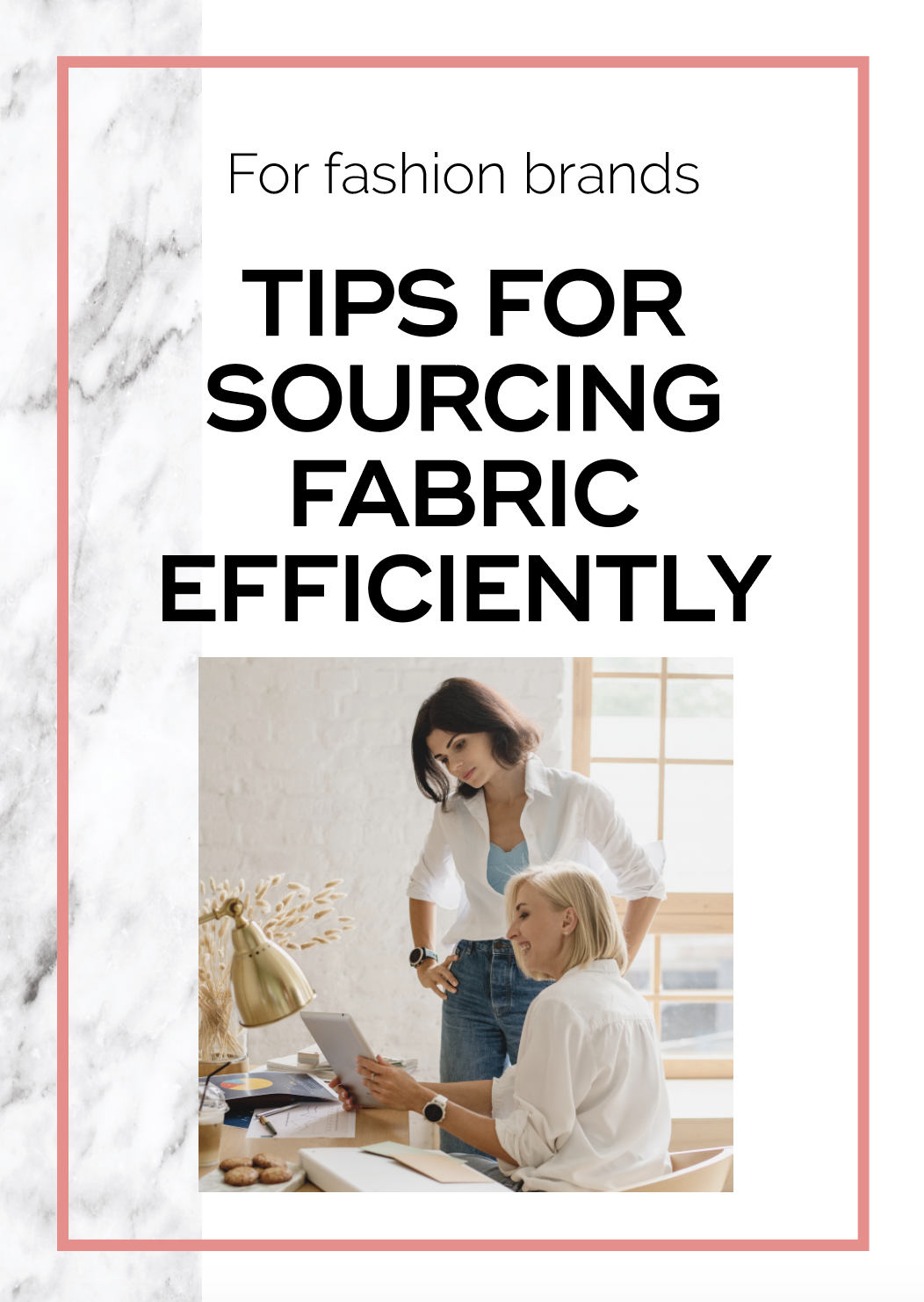
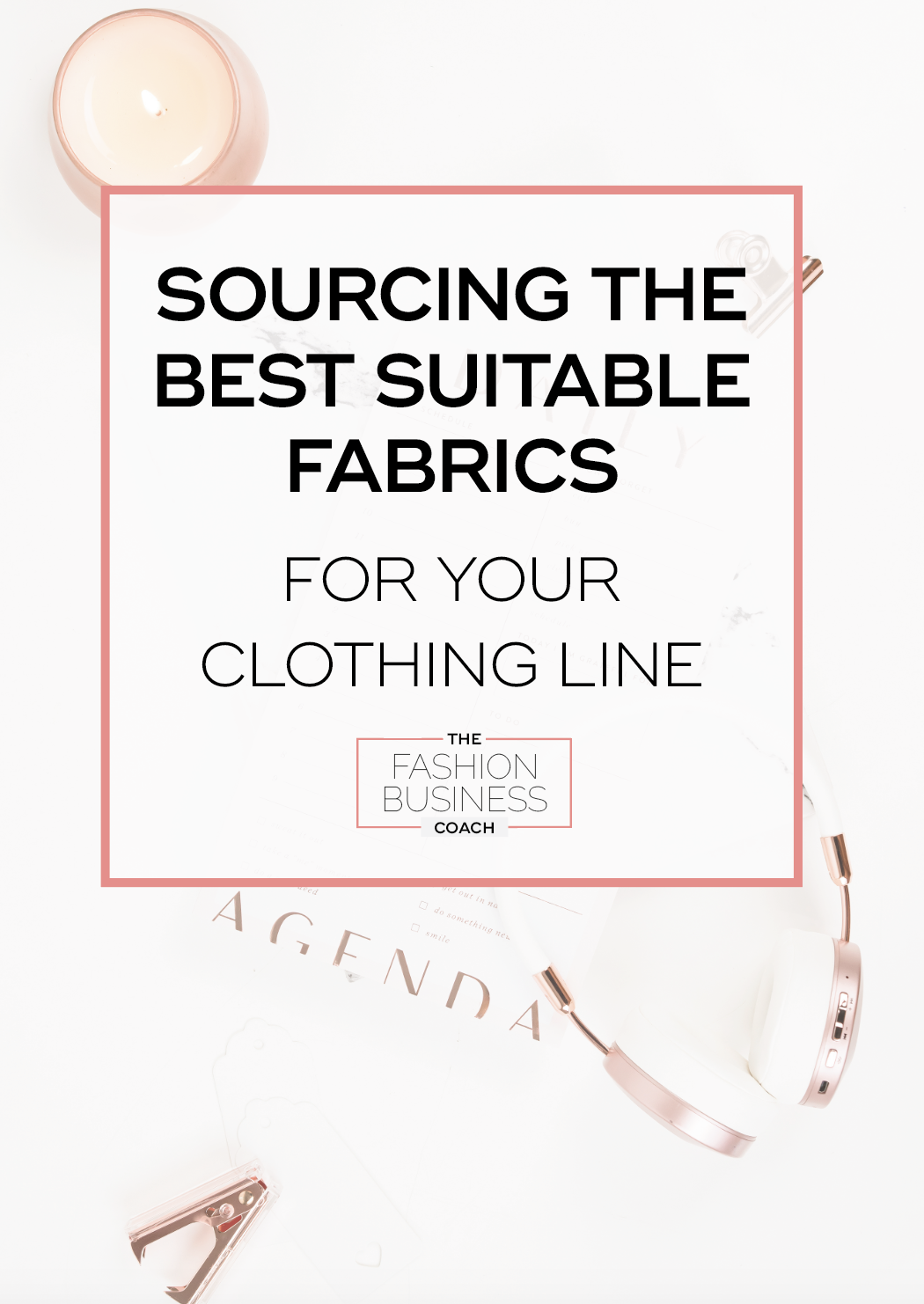

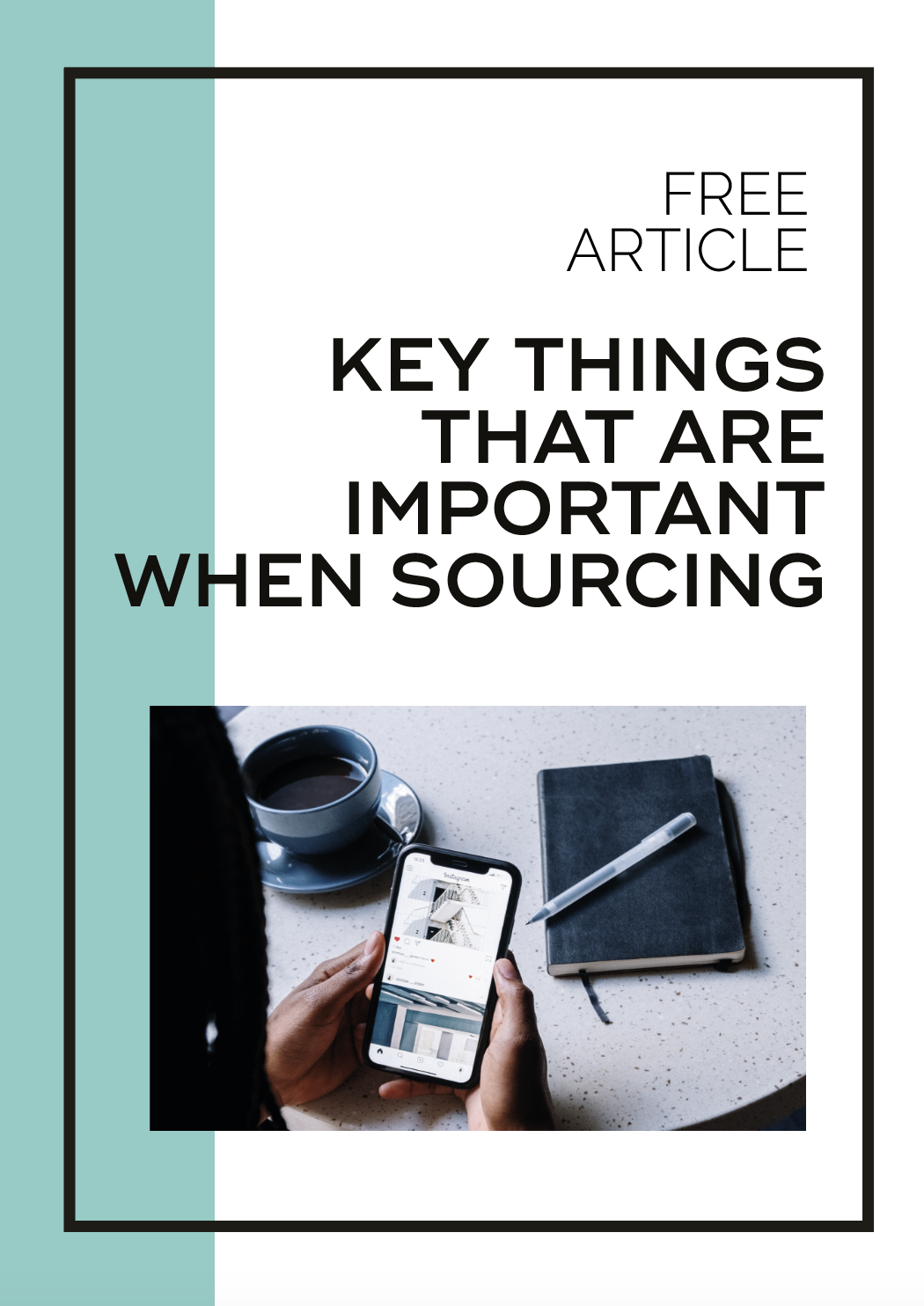

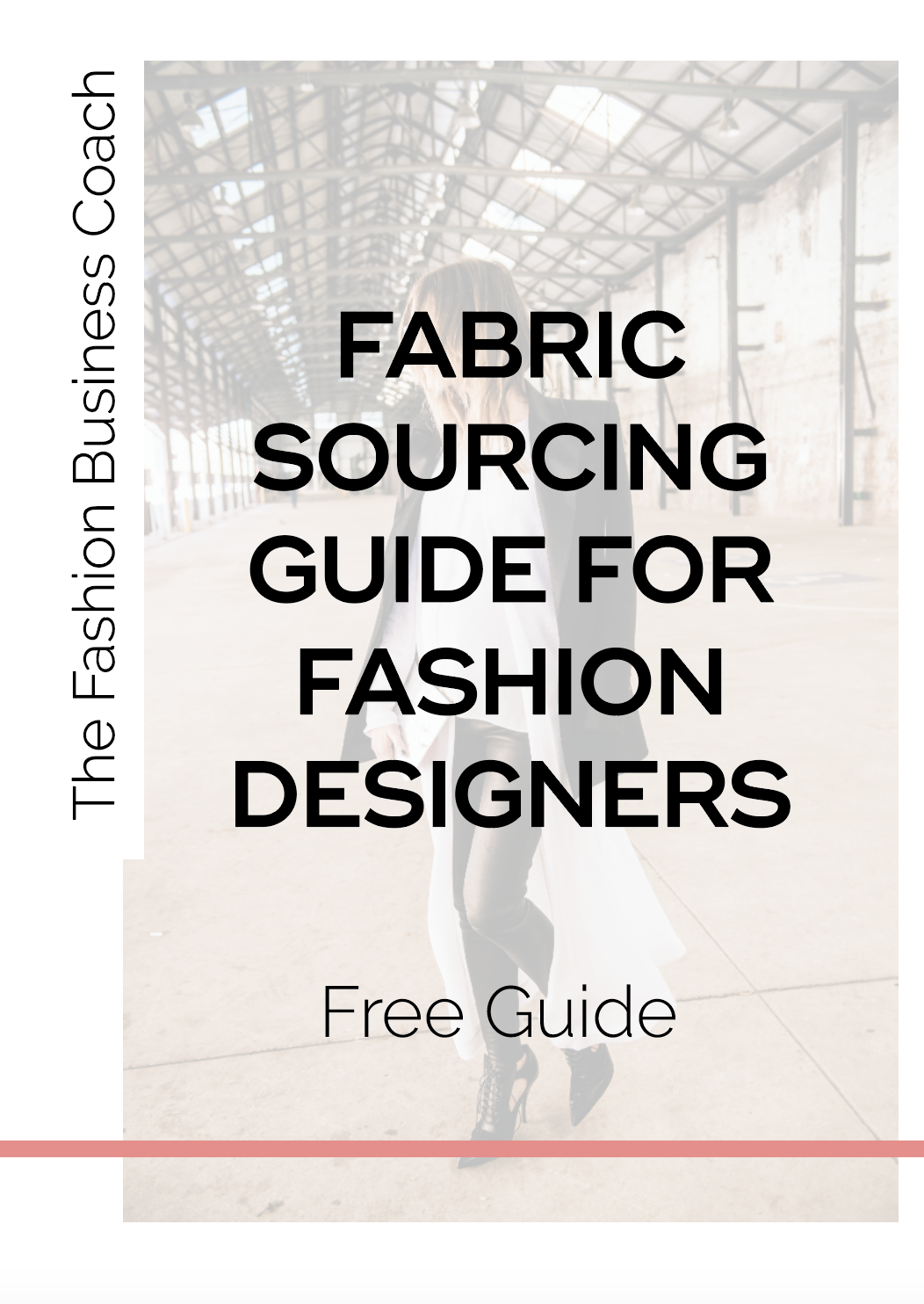
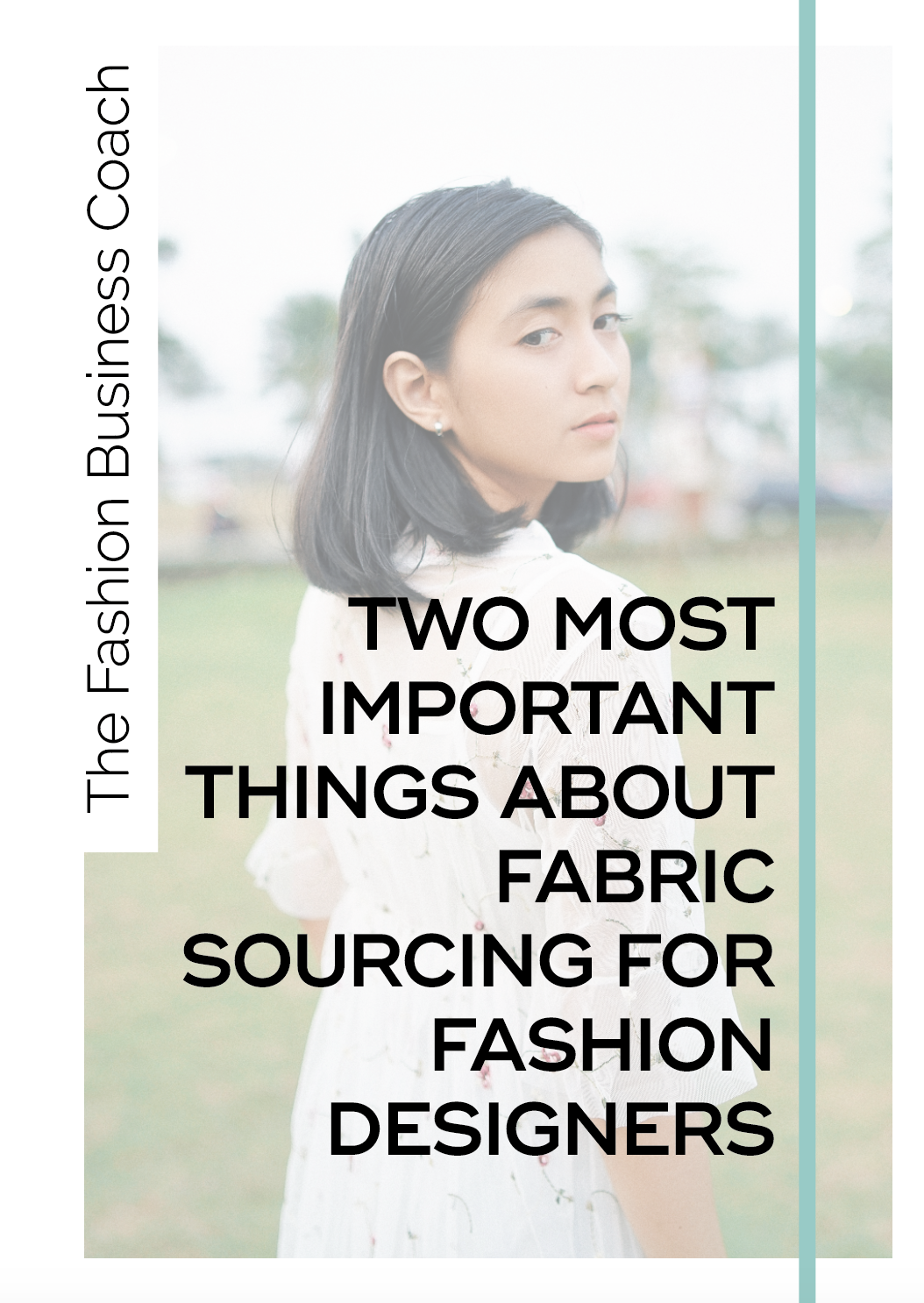
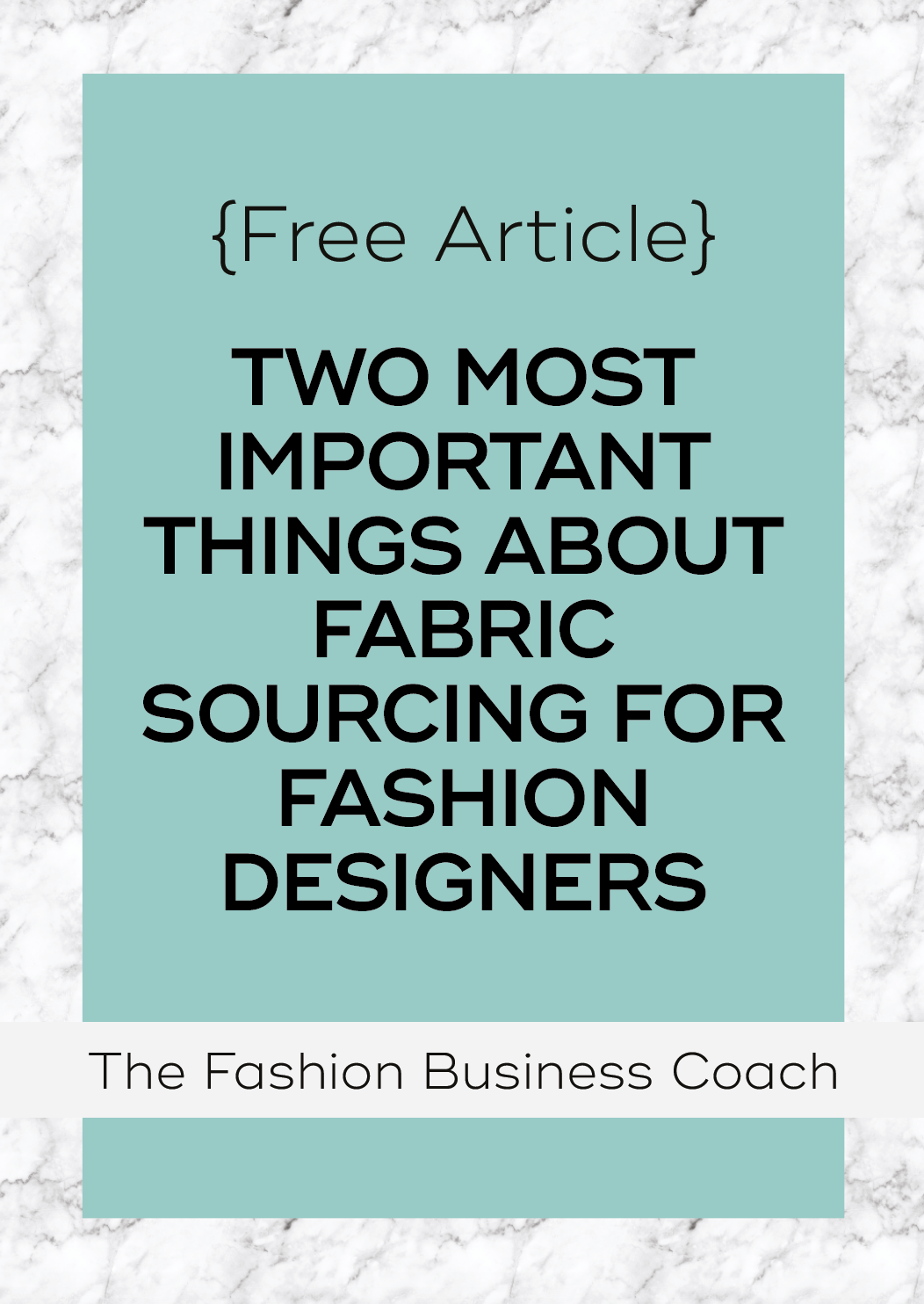









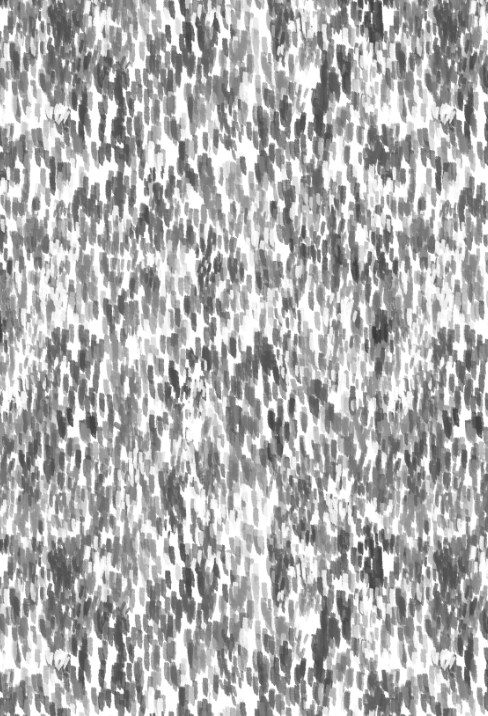
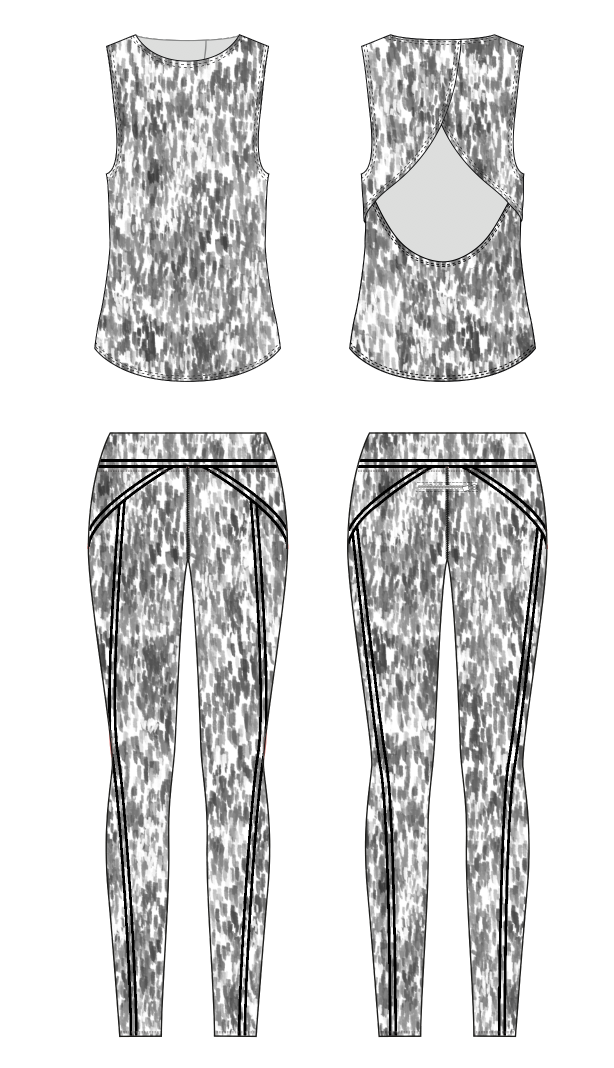


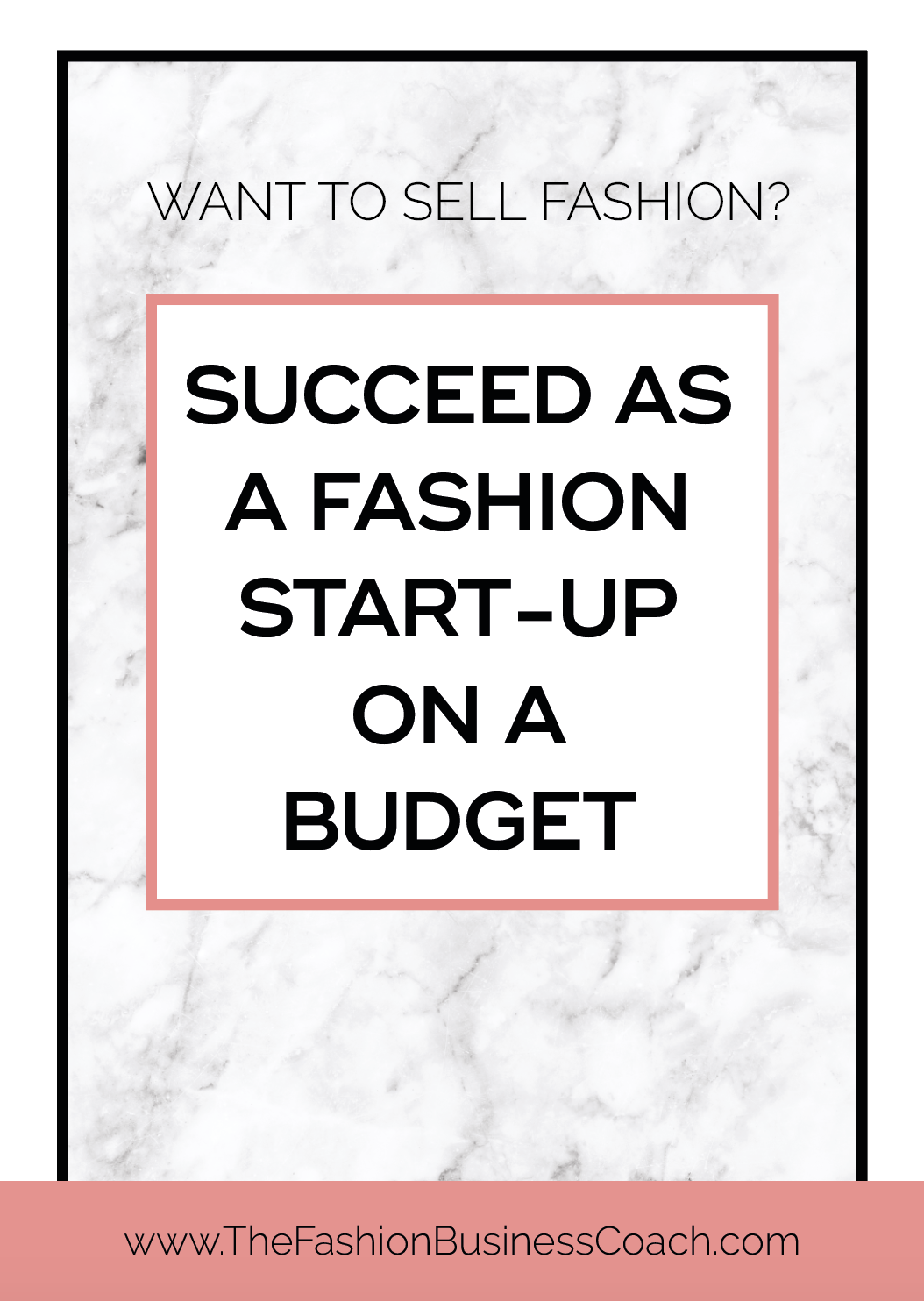



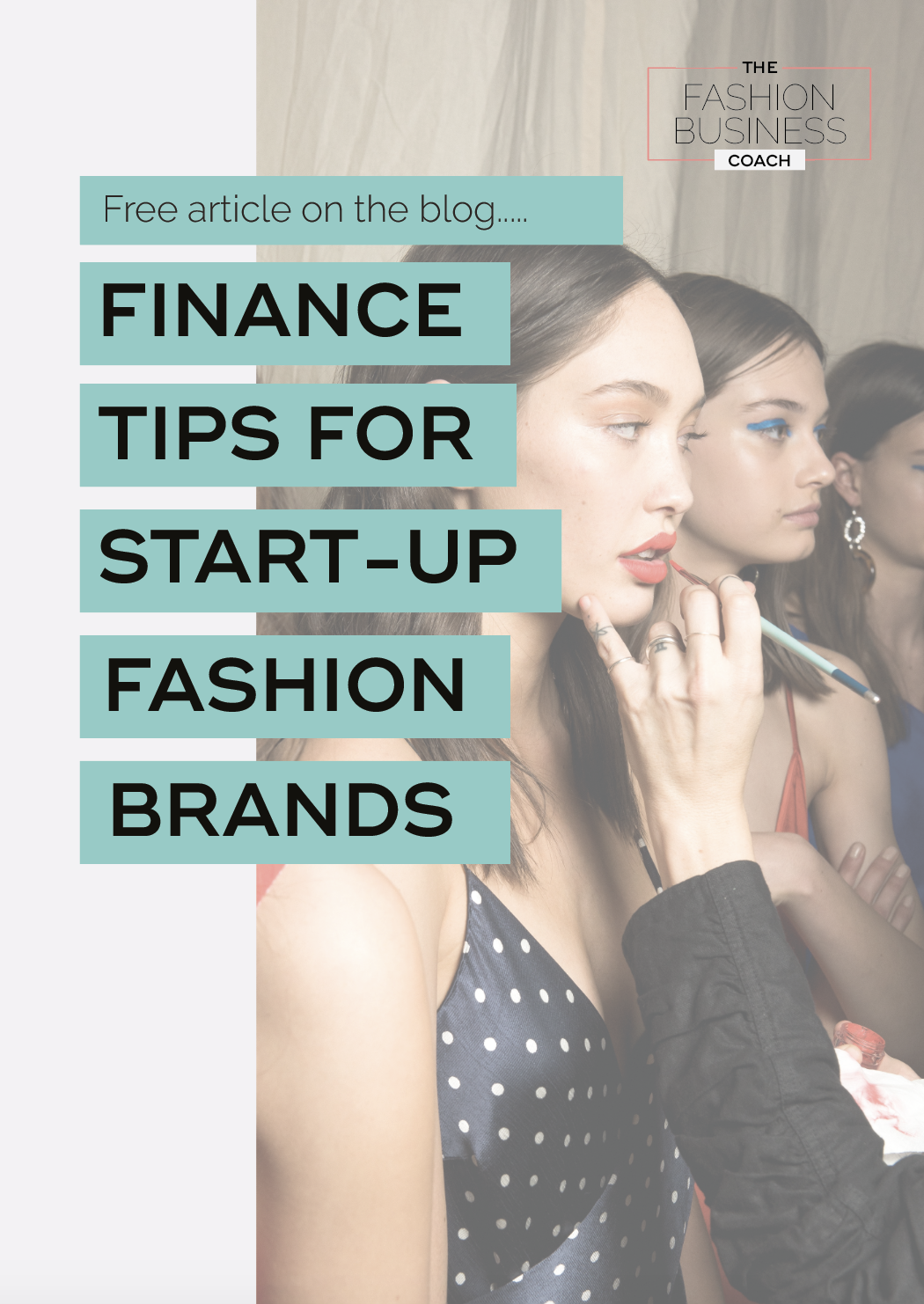
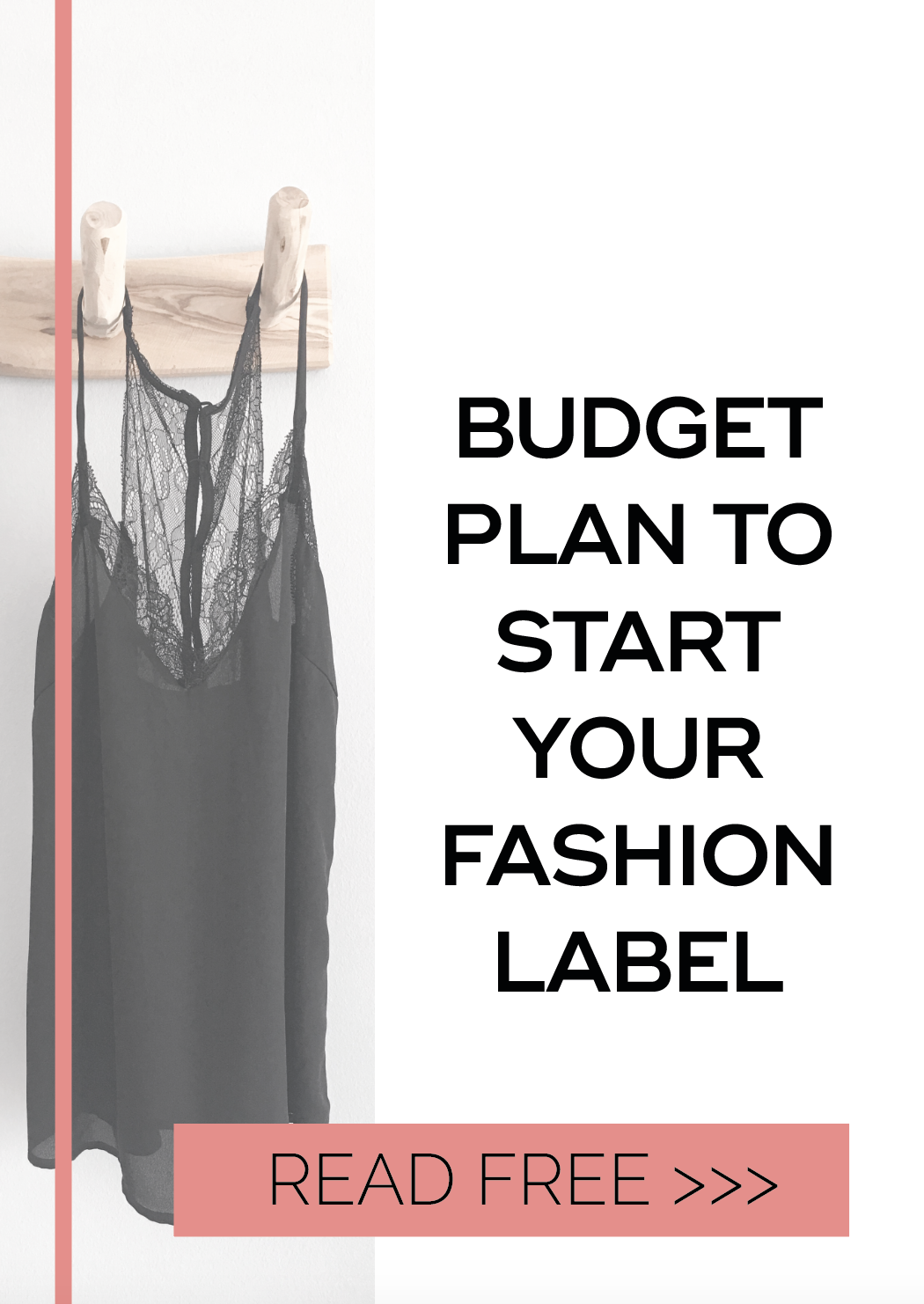
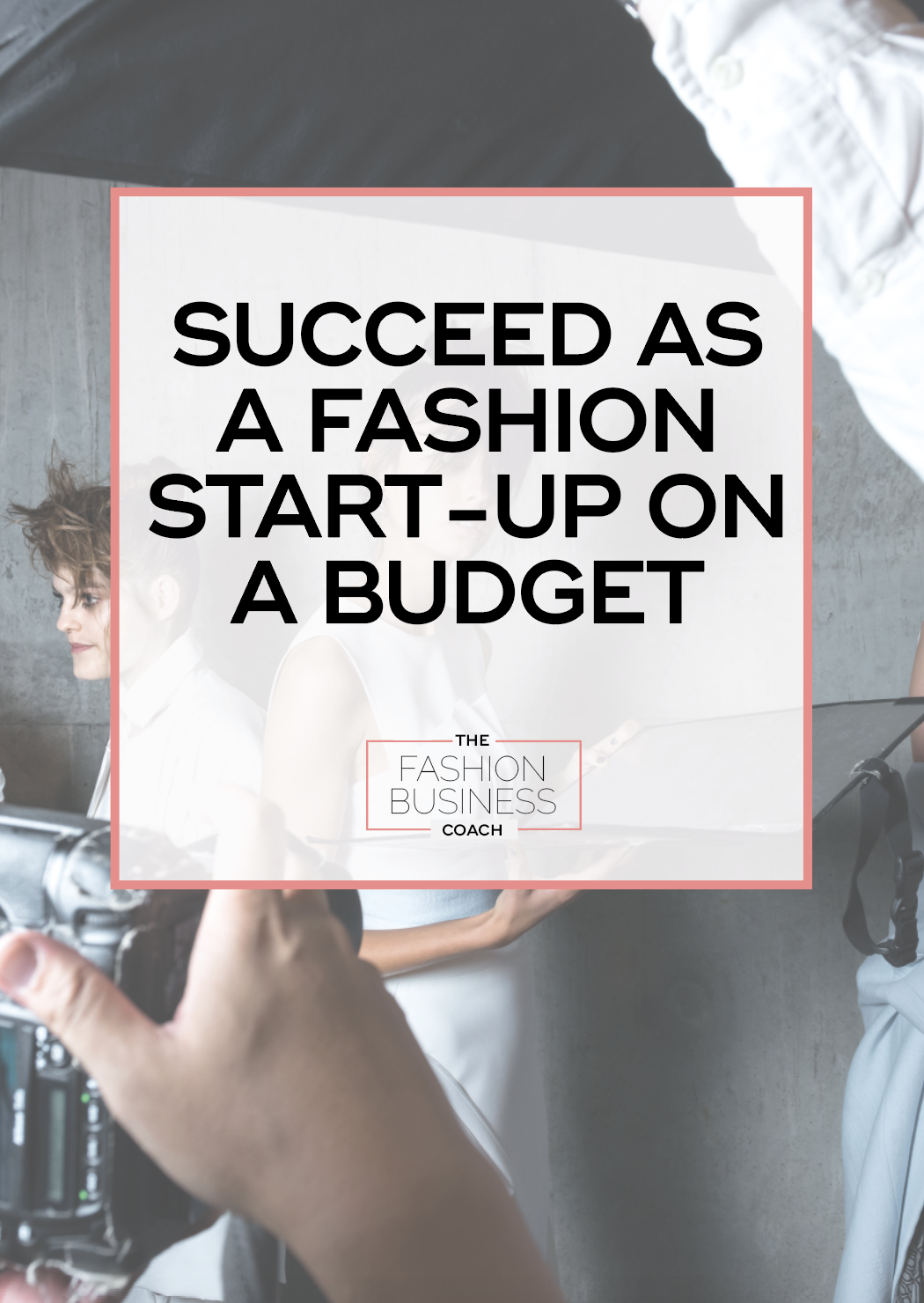
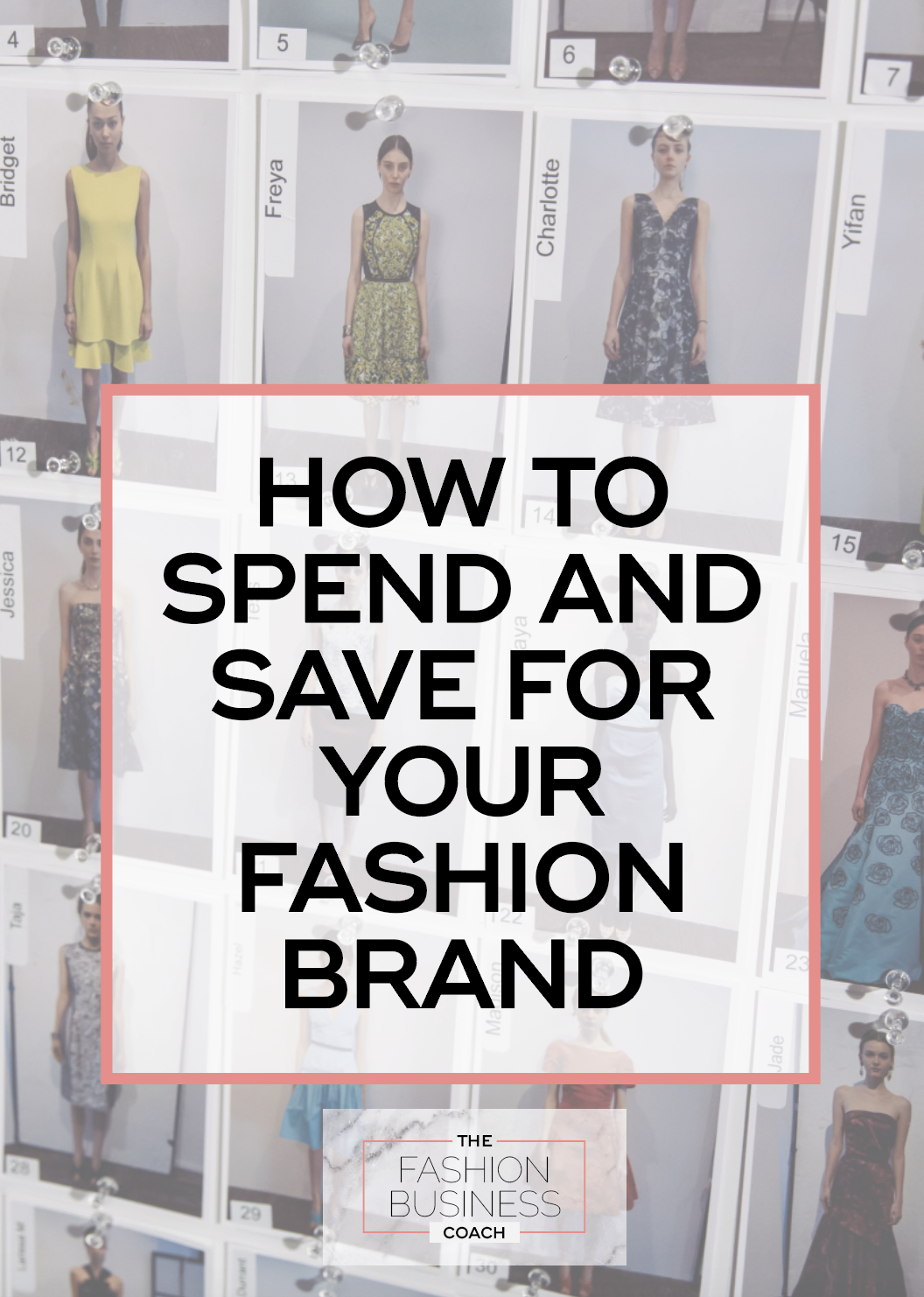

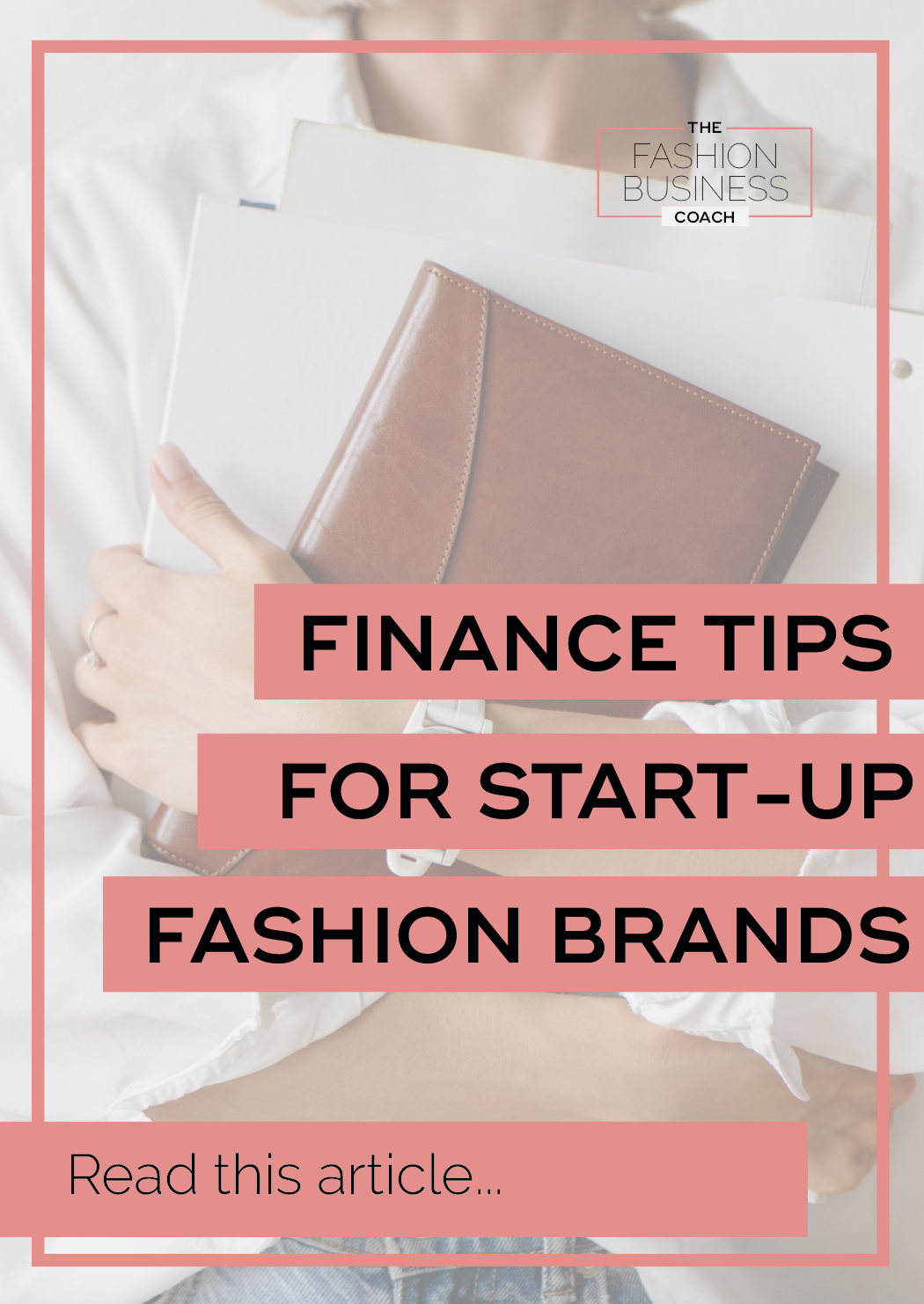



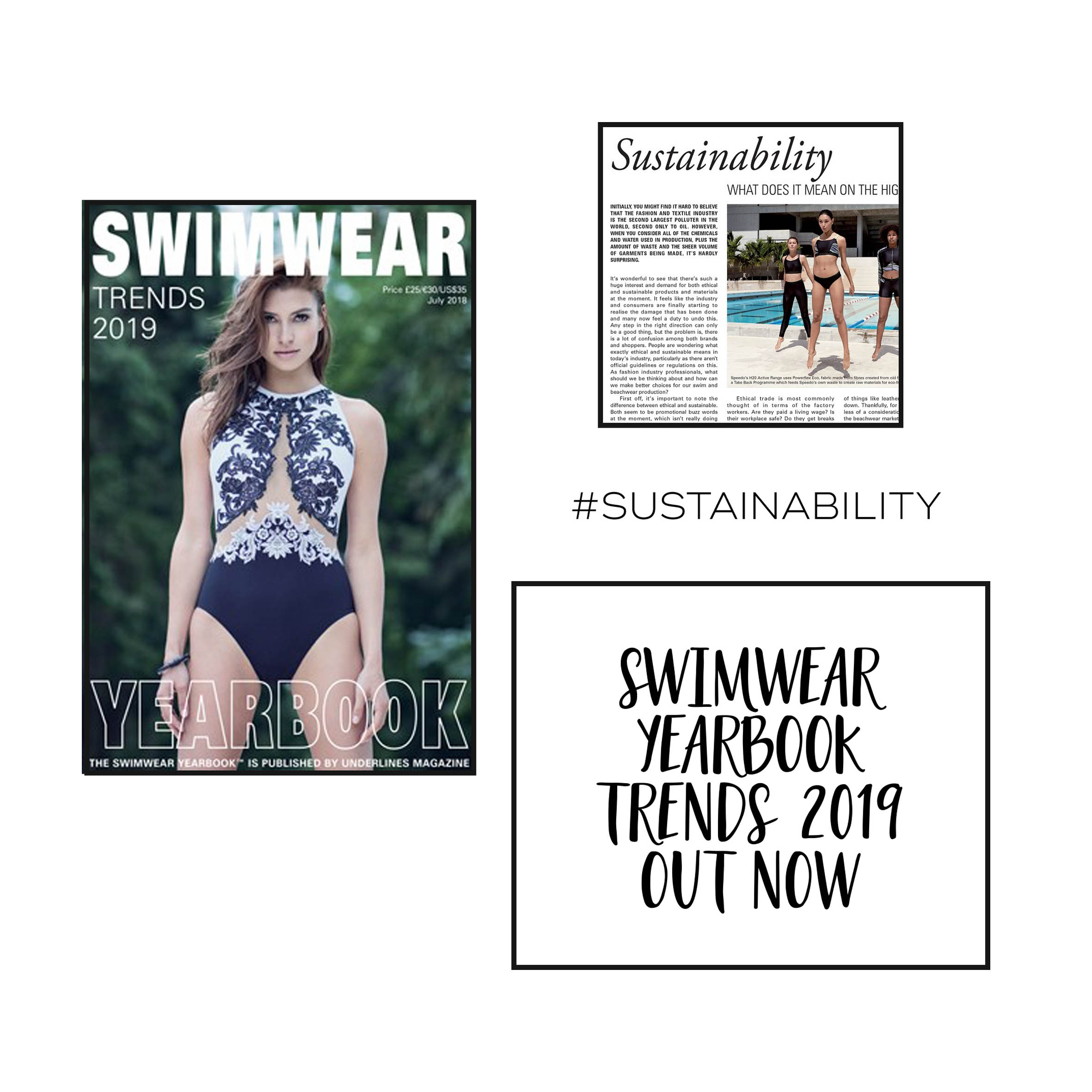


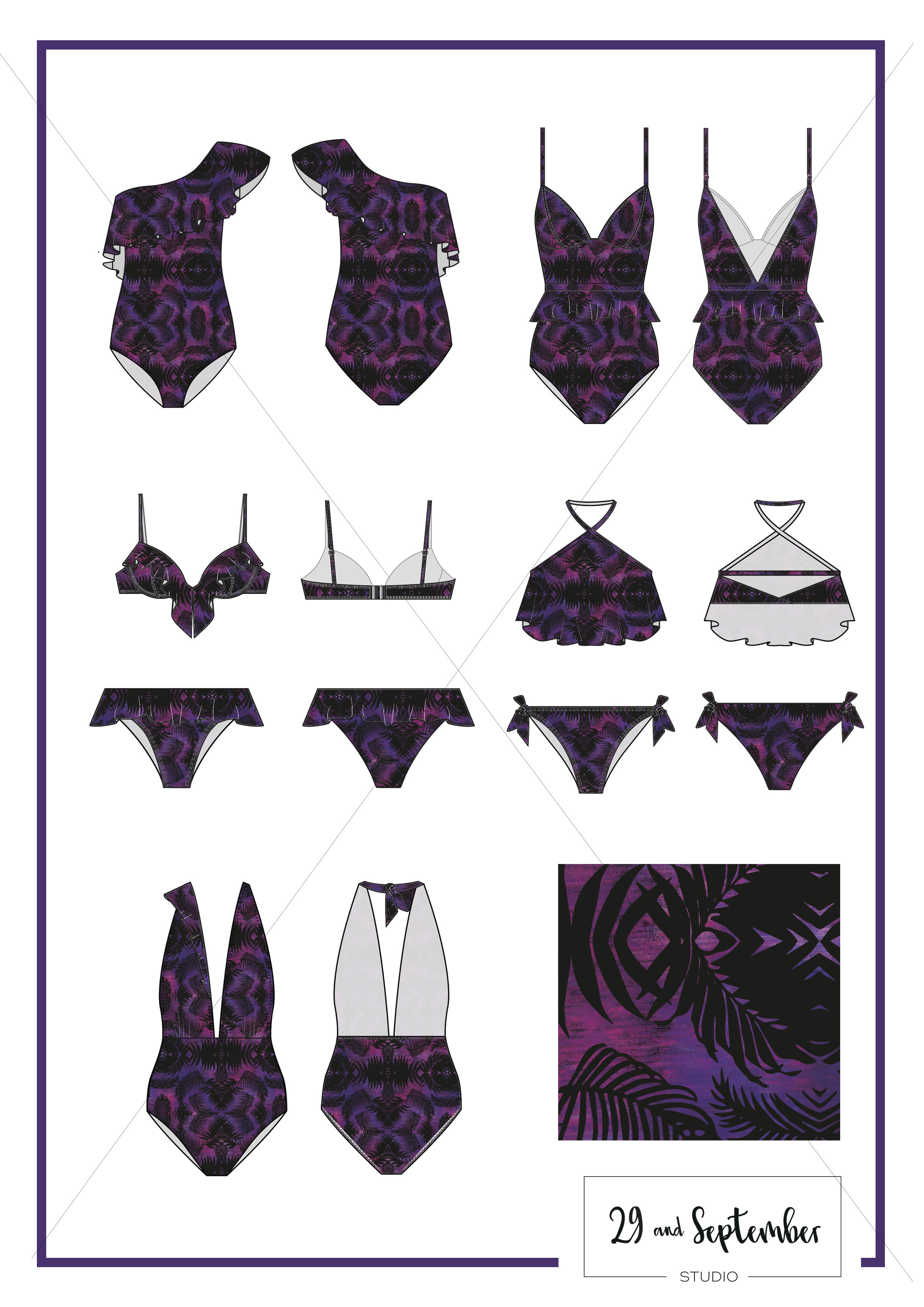

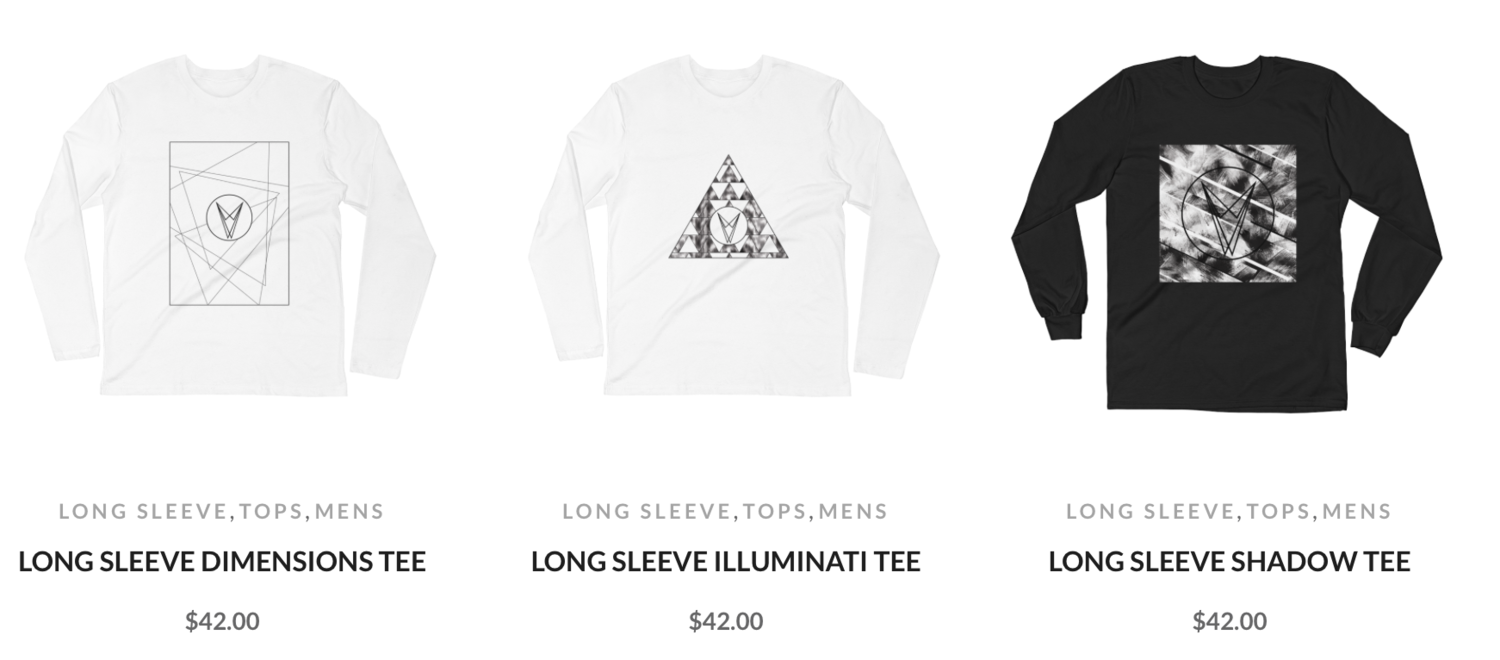

Pickleball outfit inspiration……